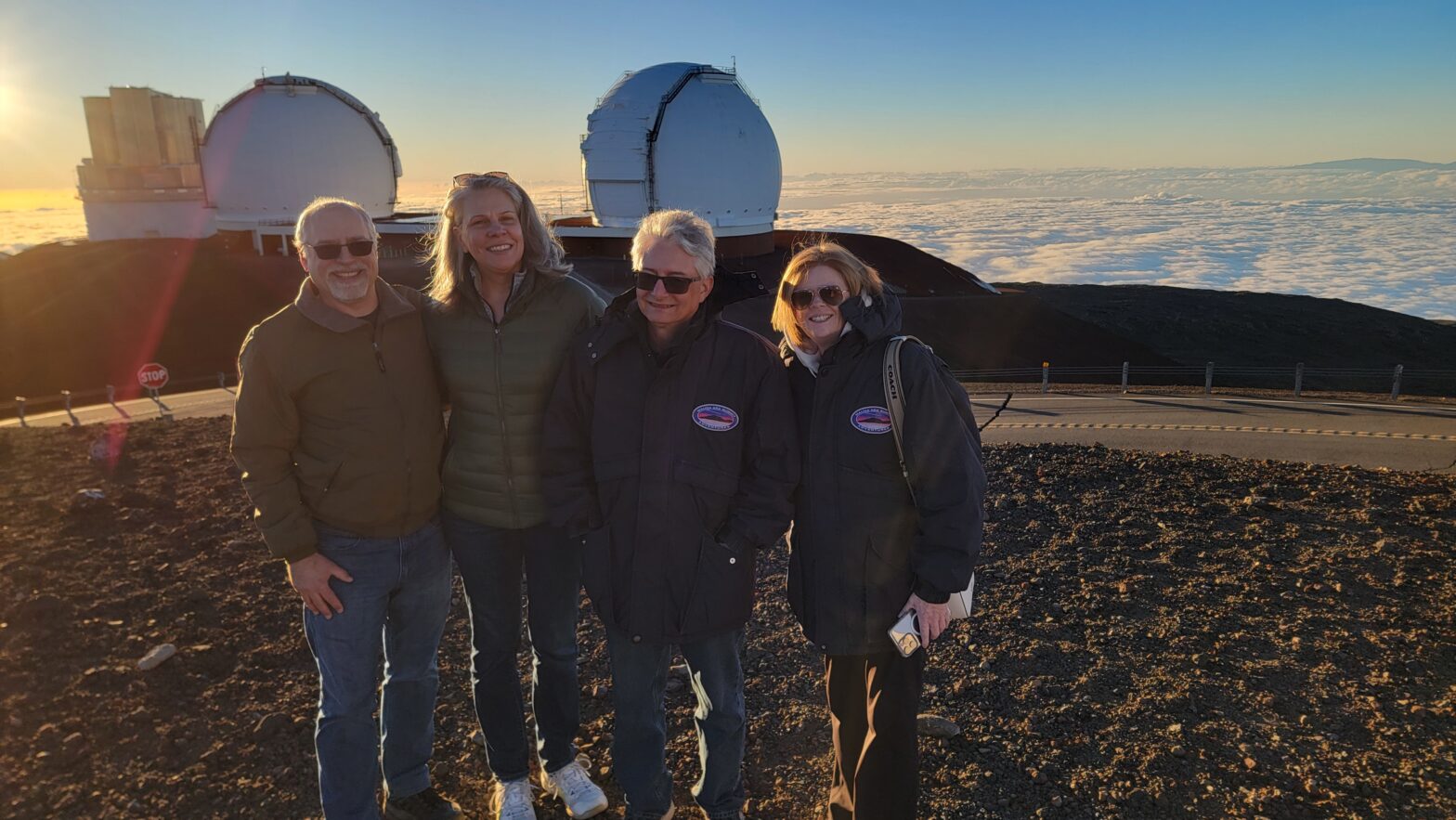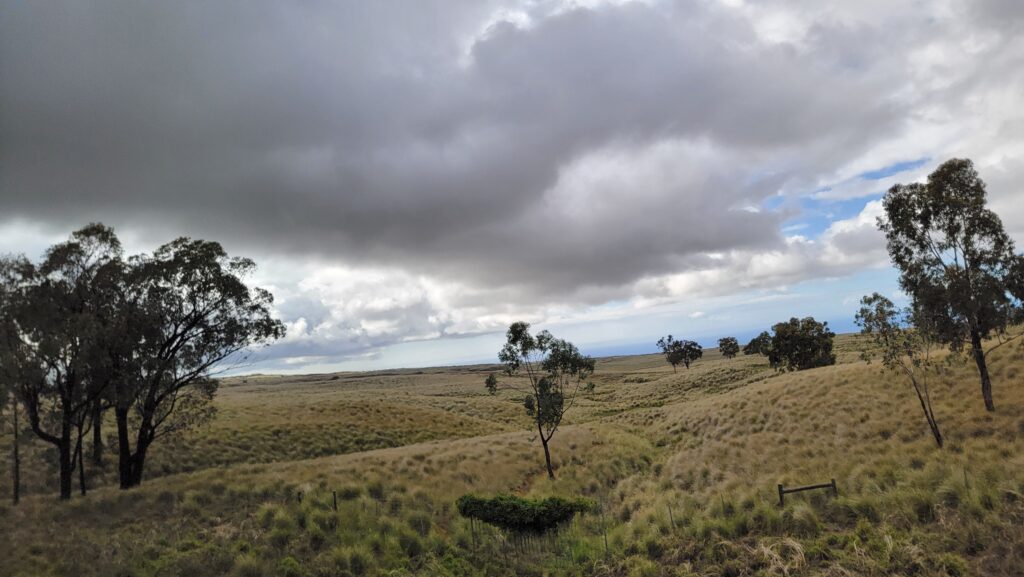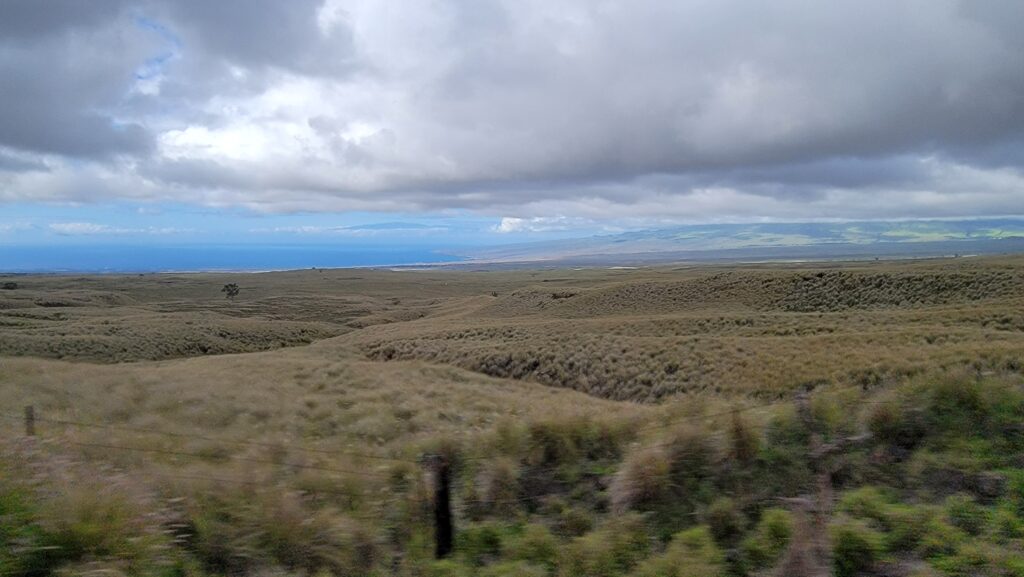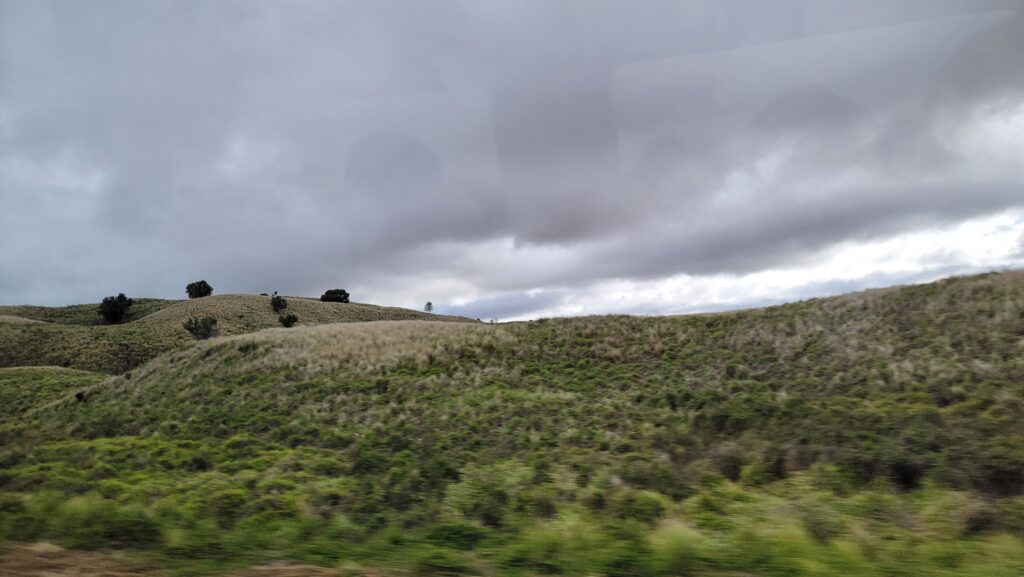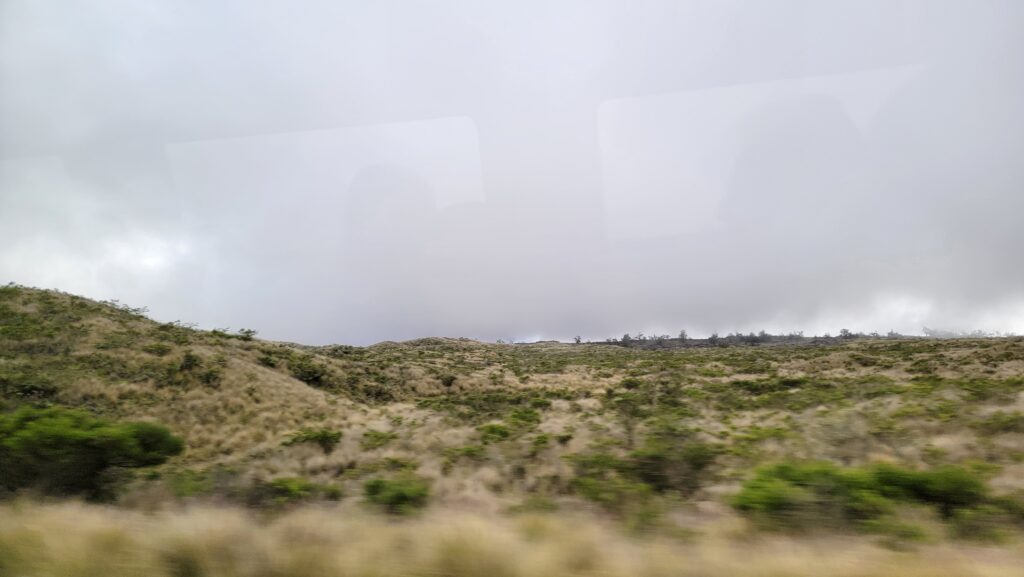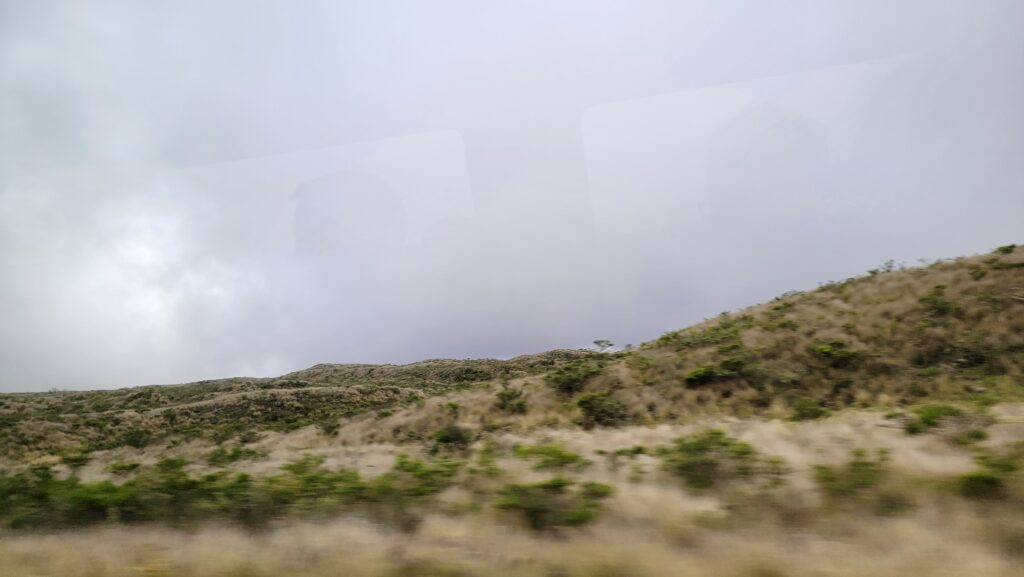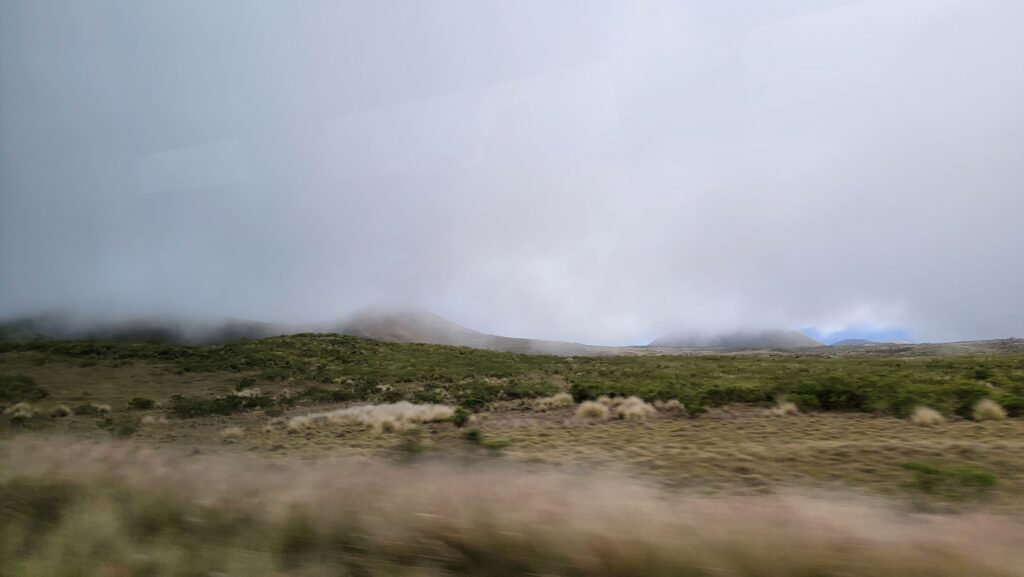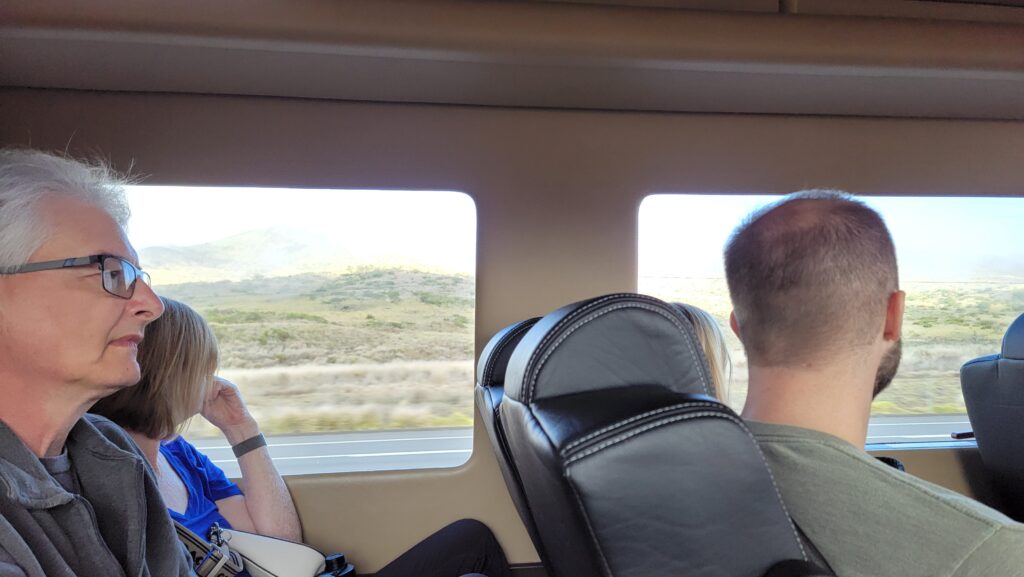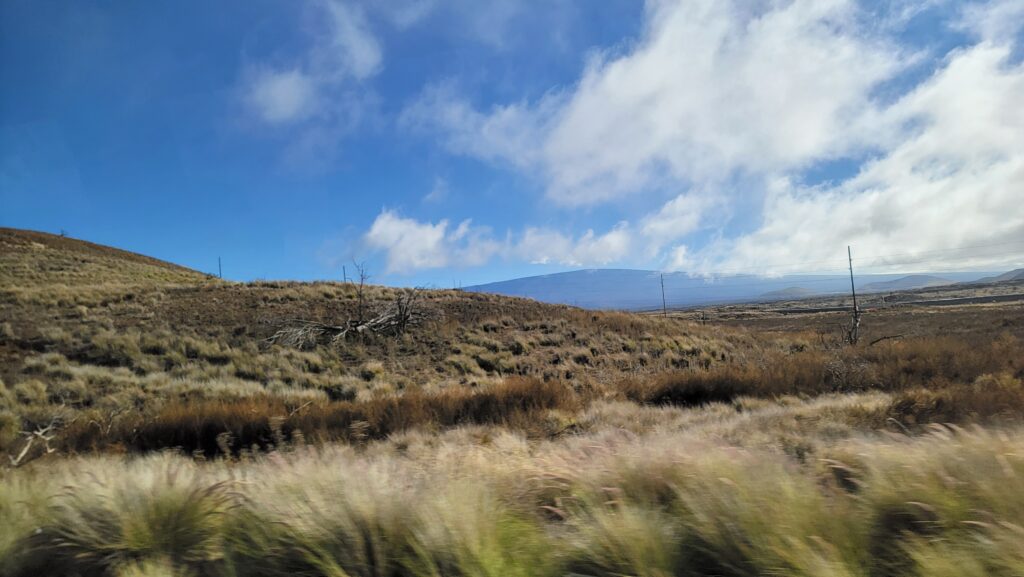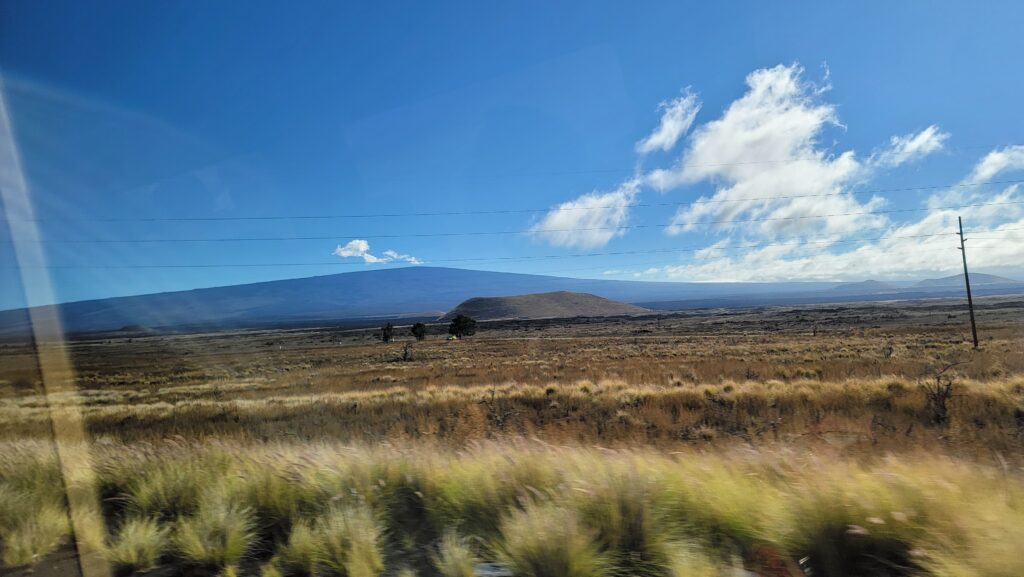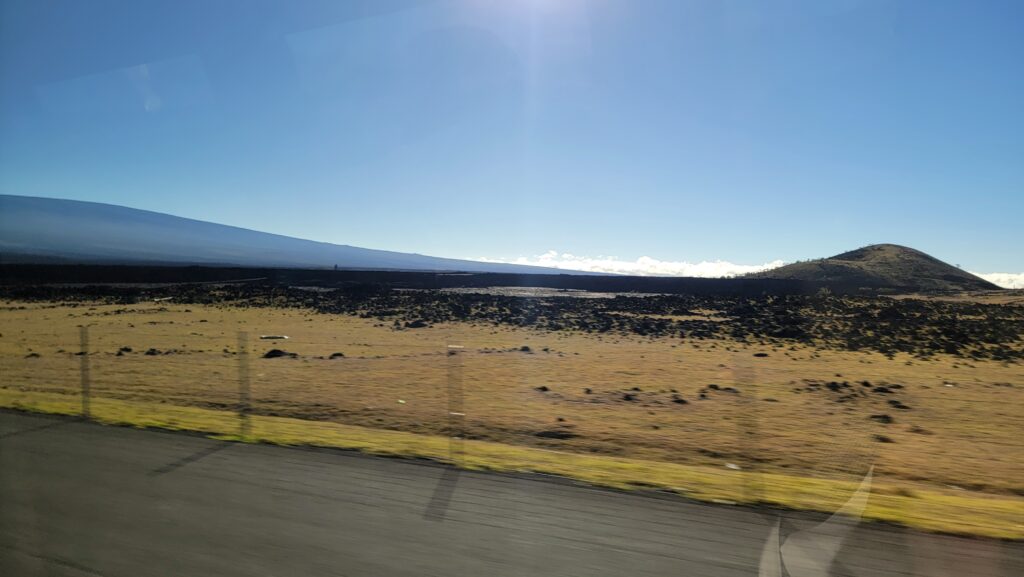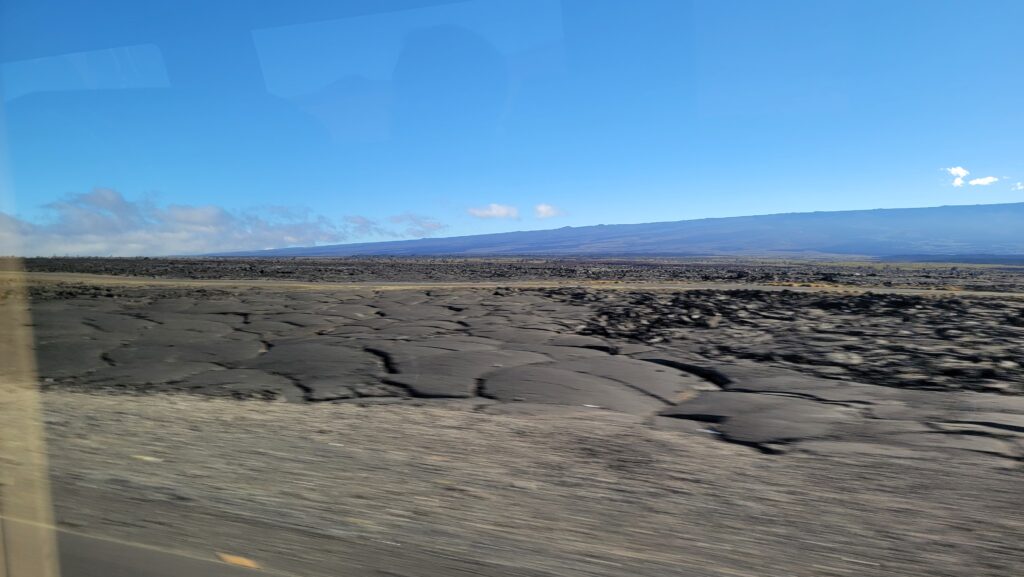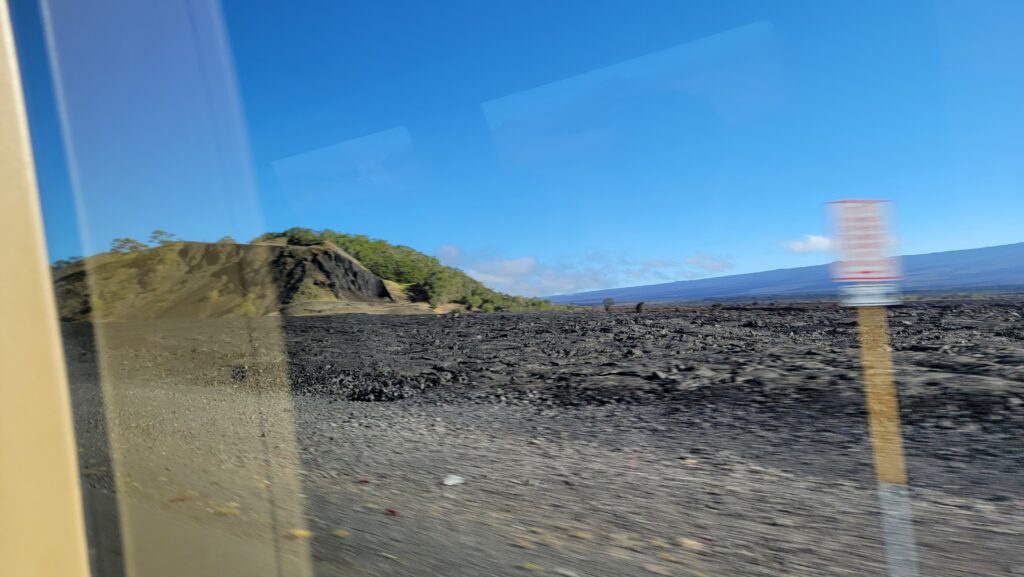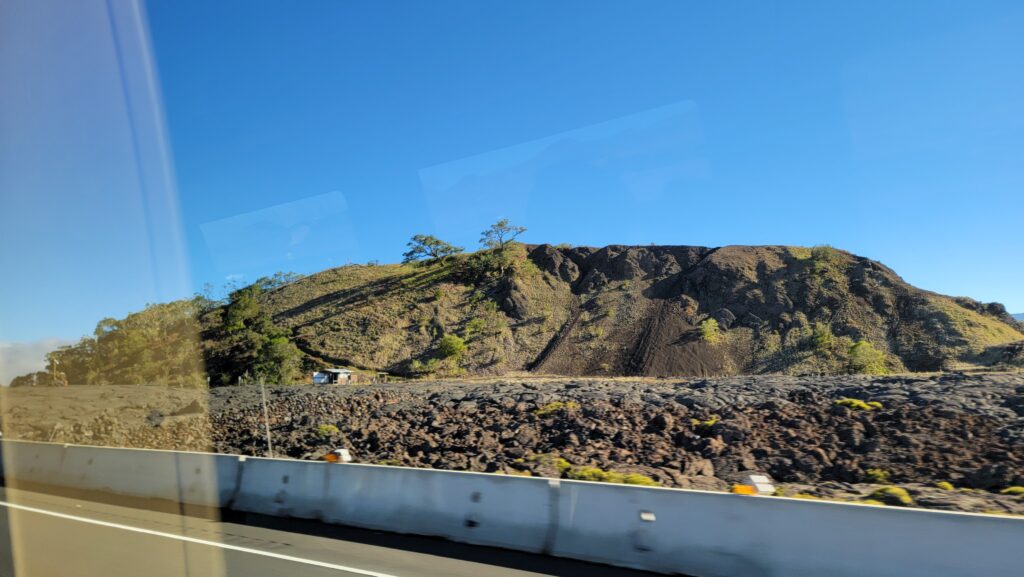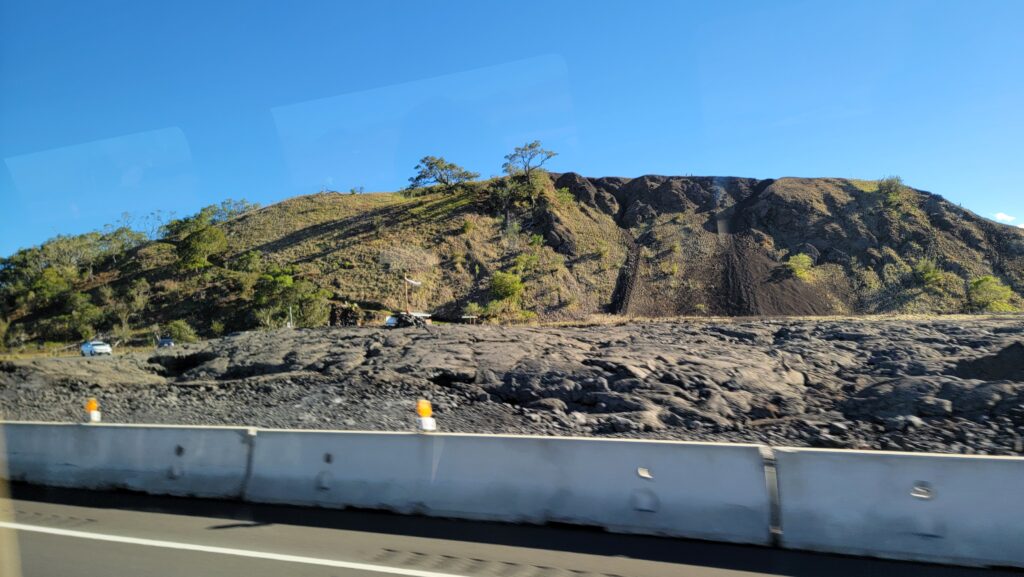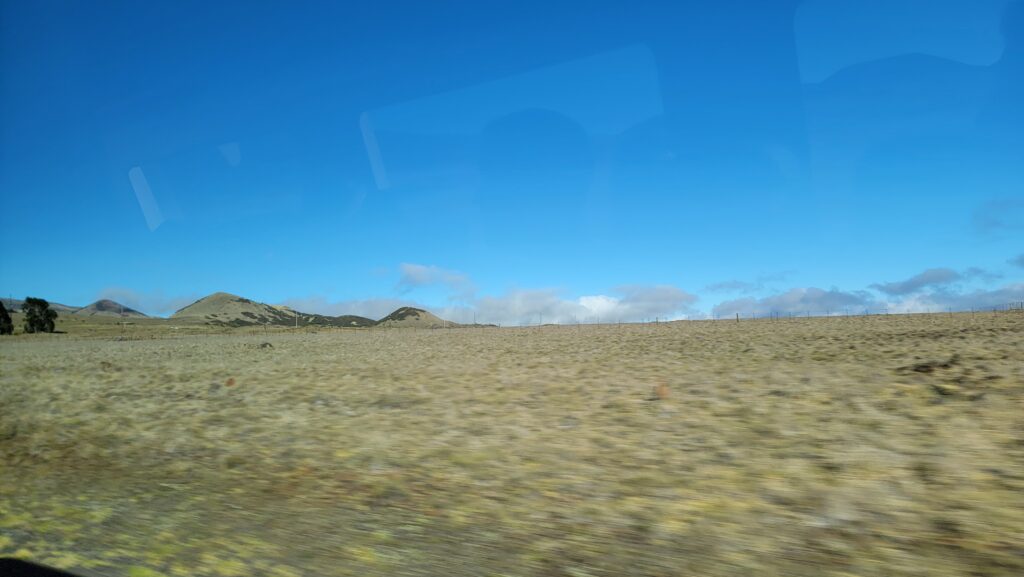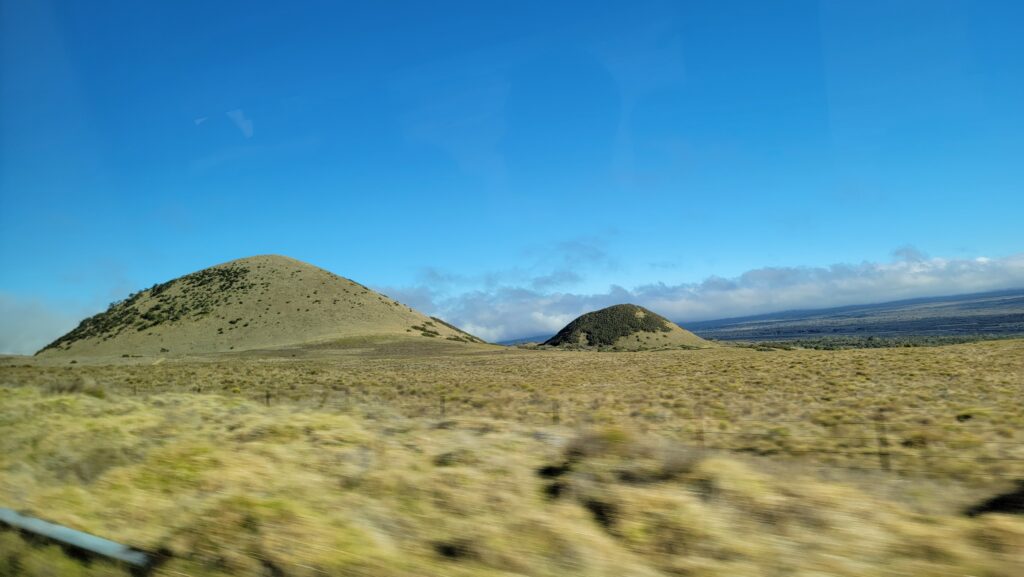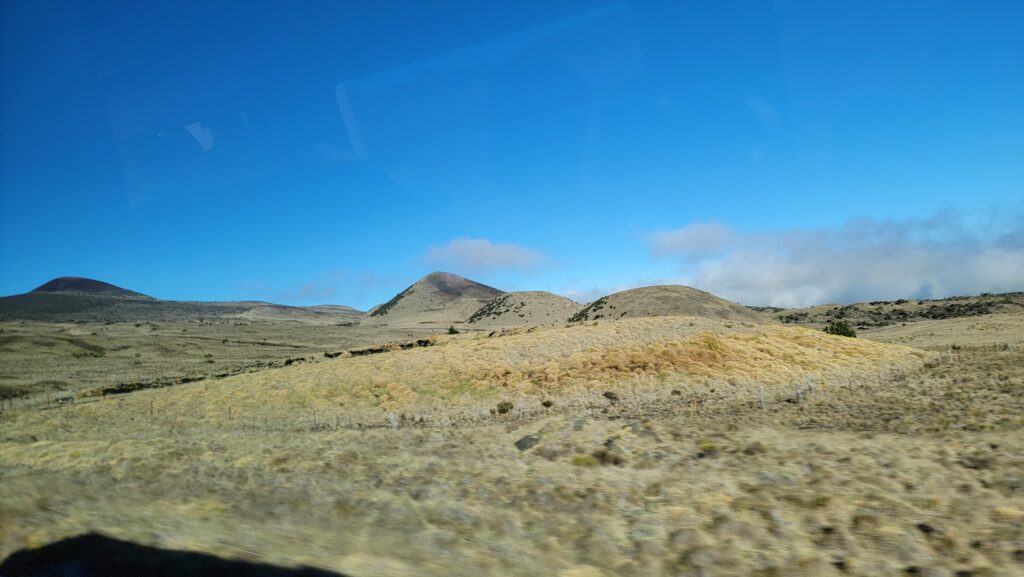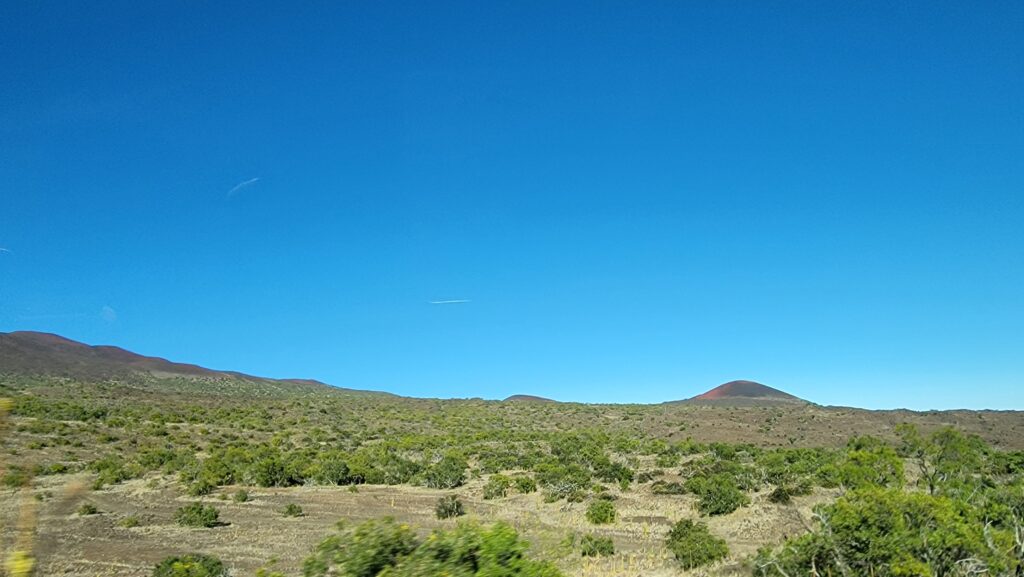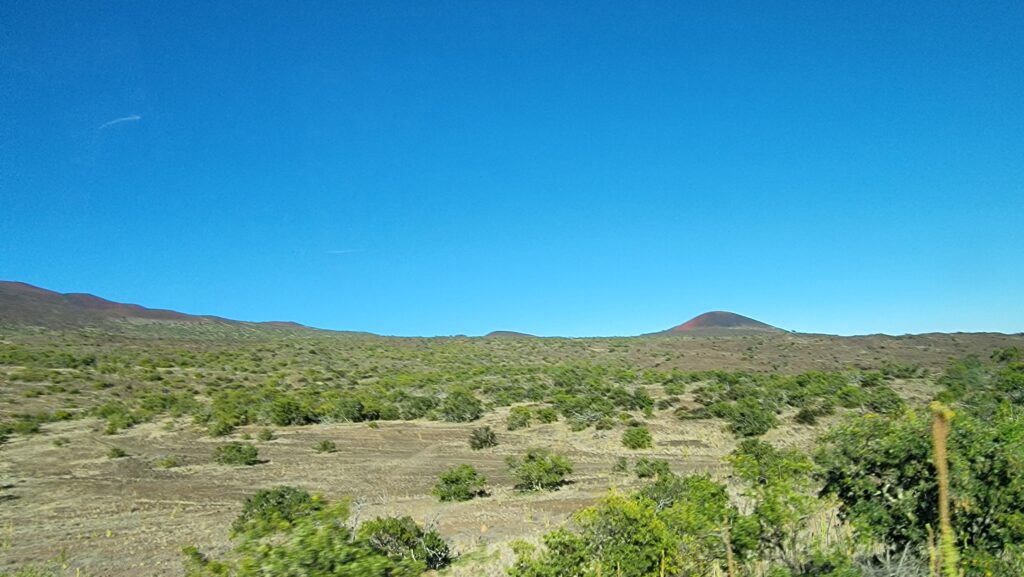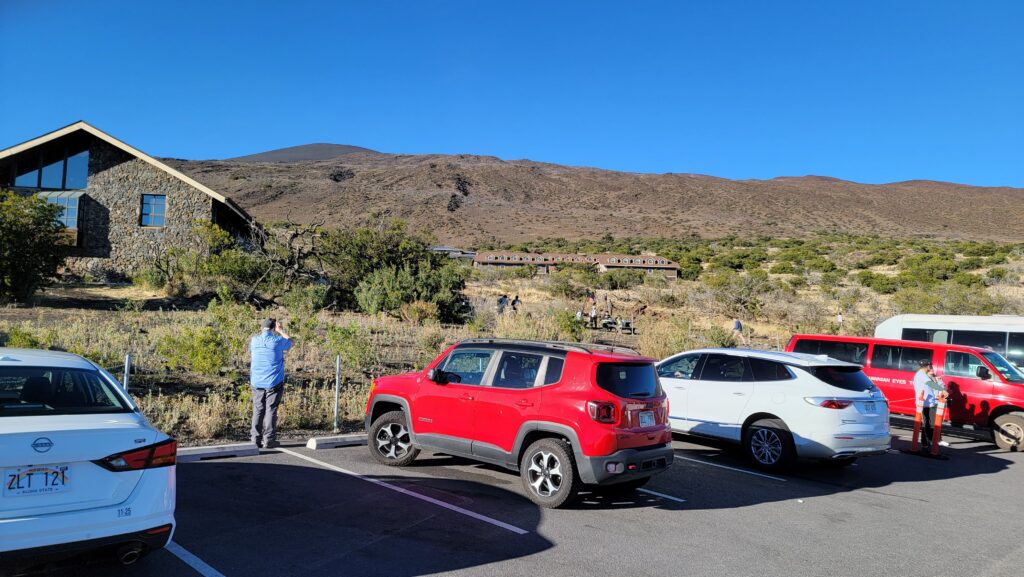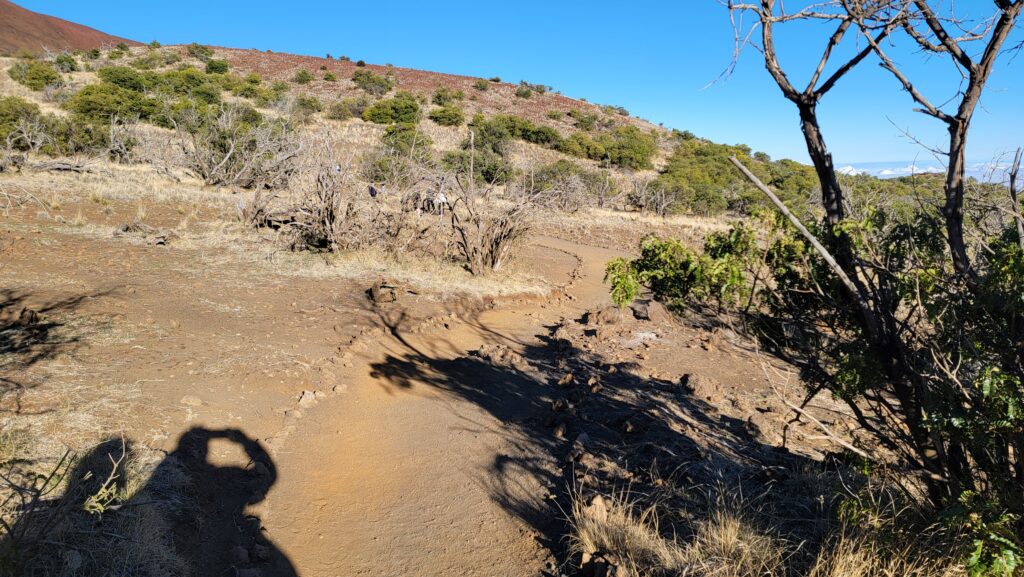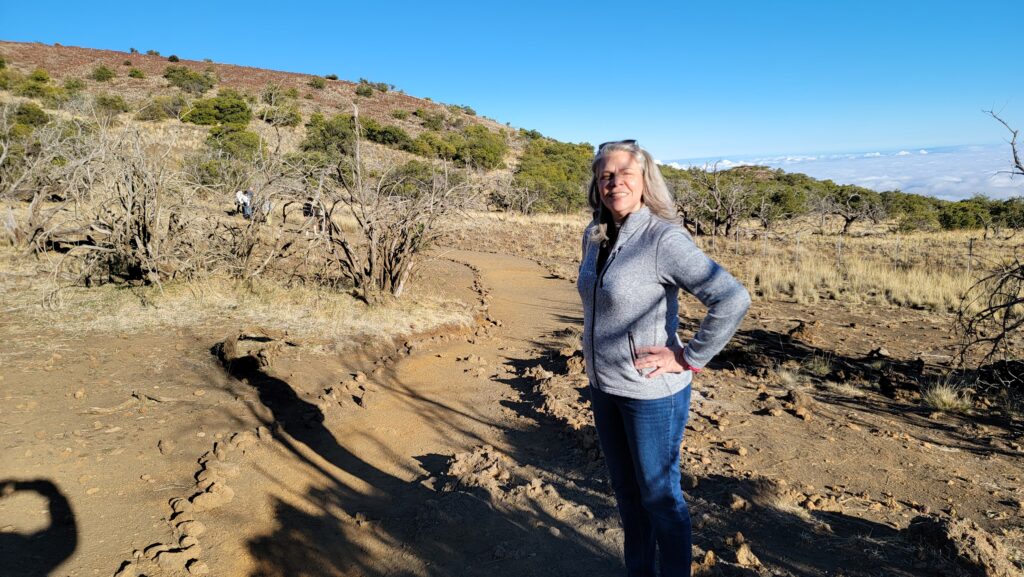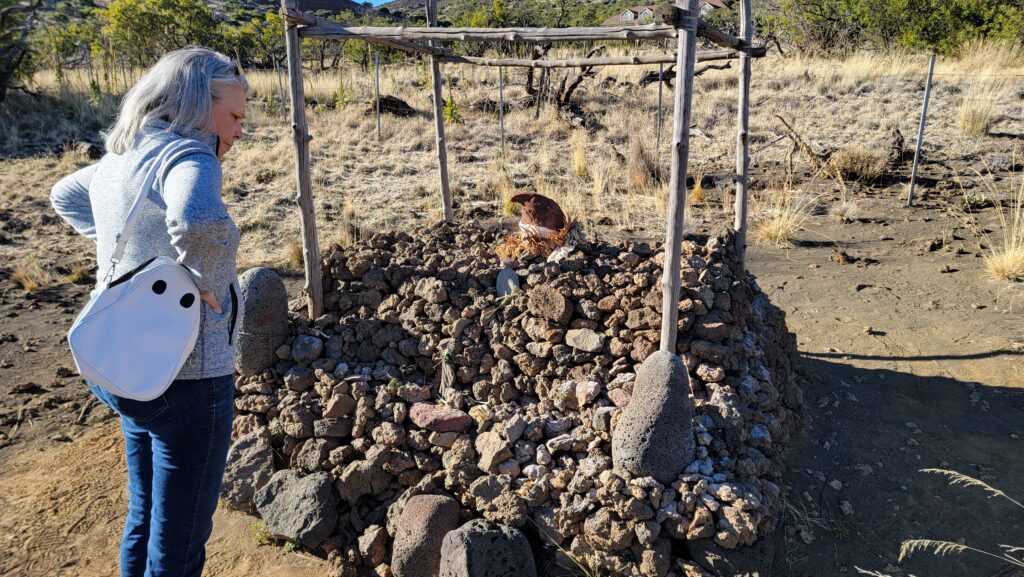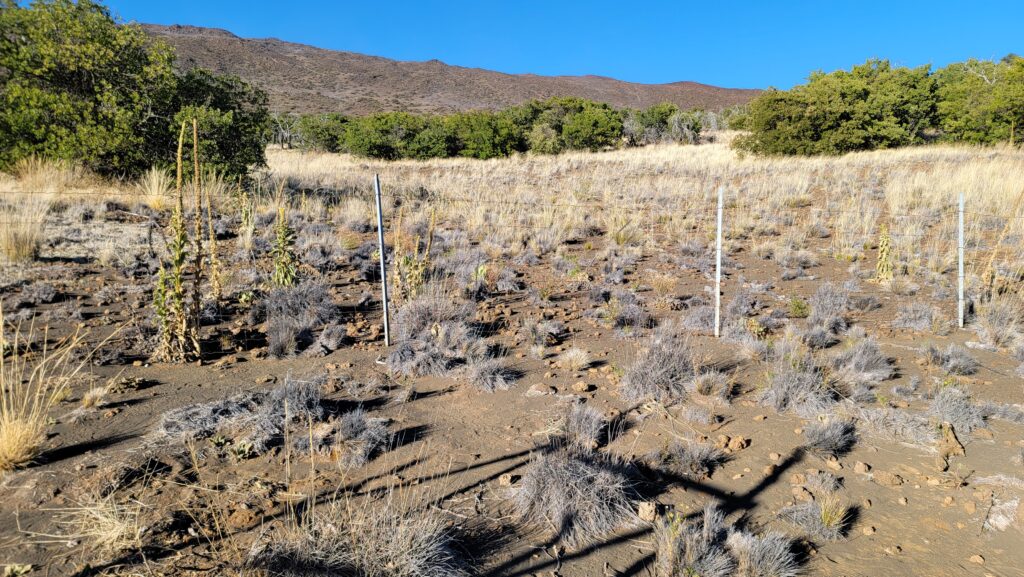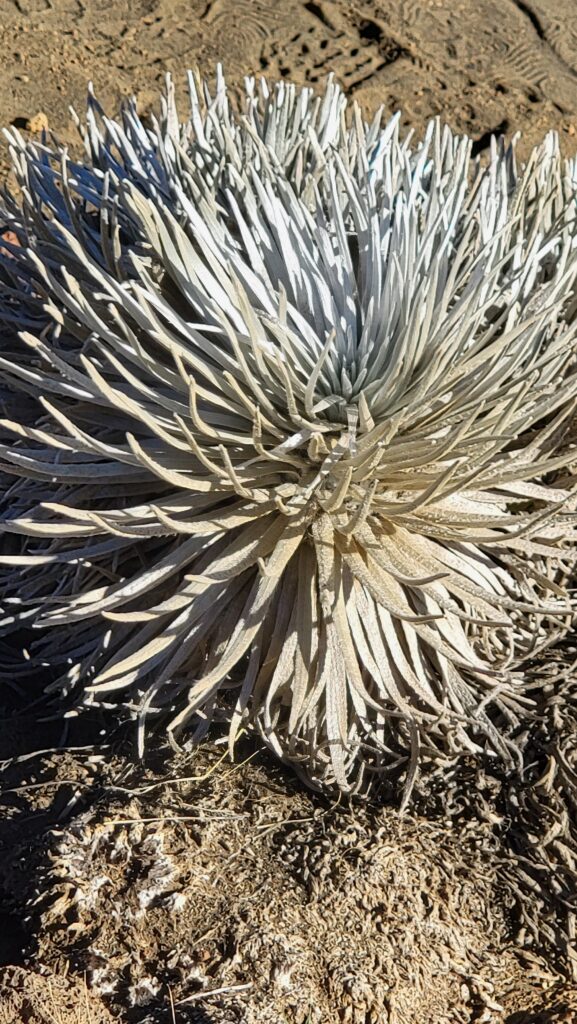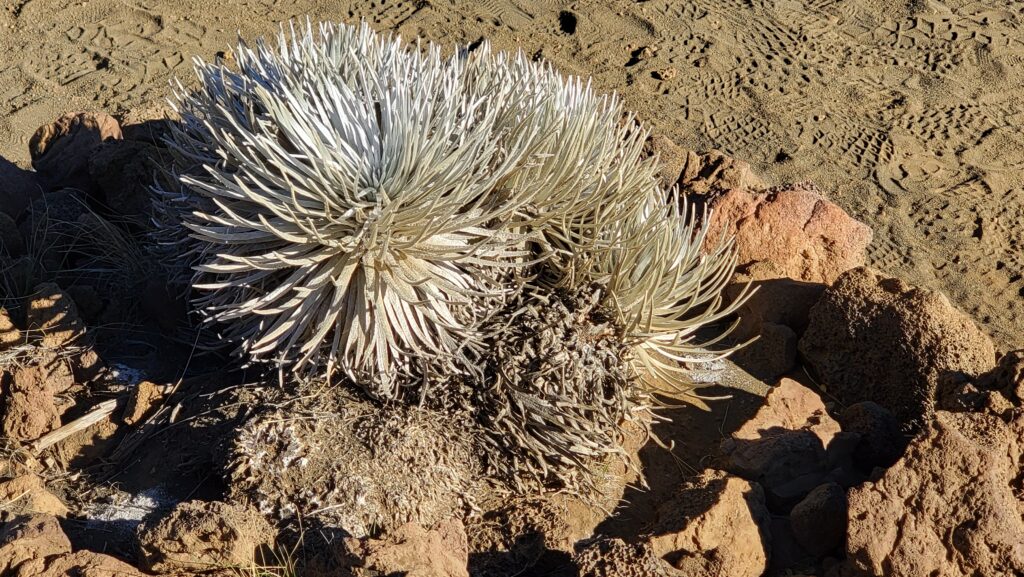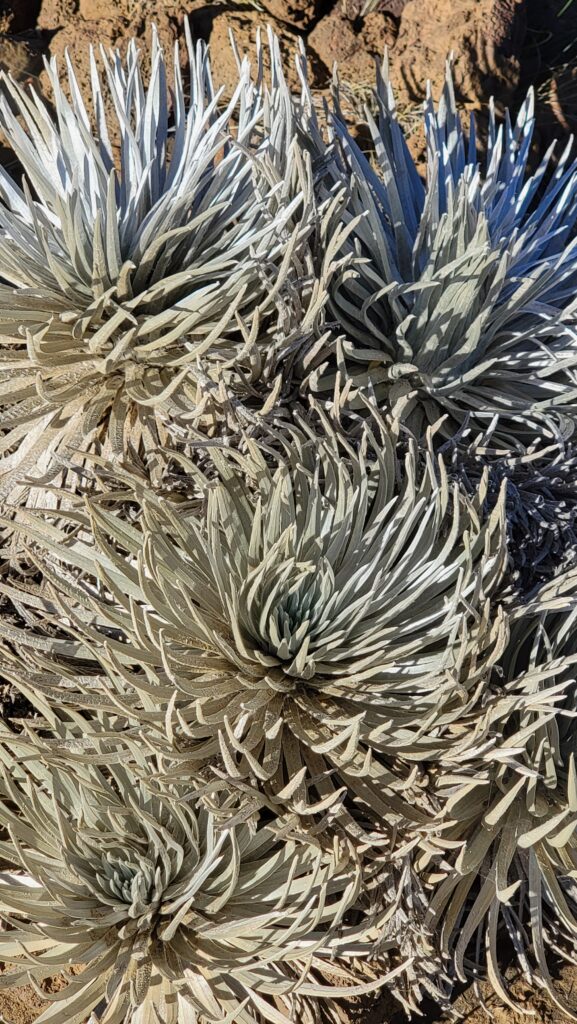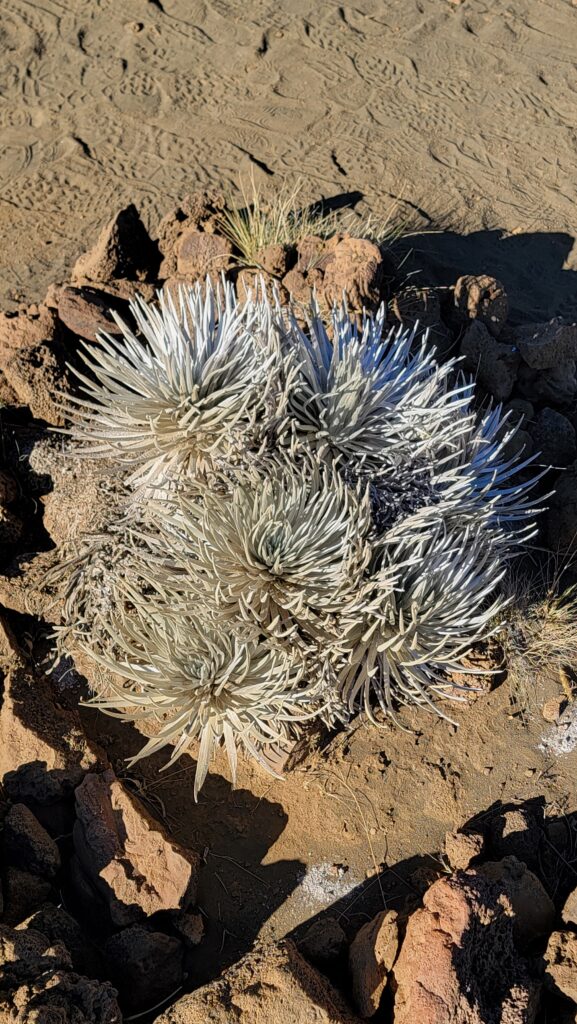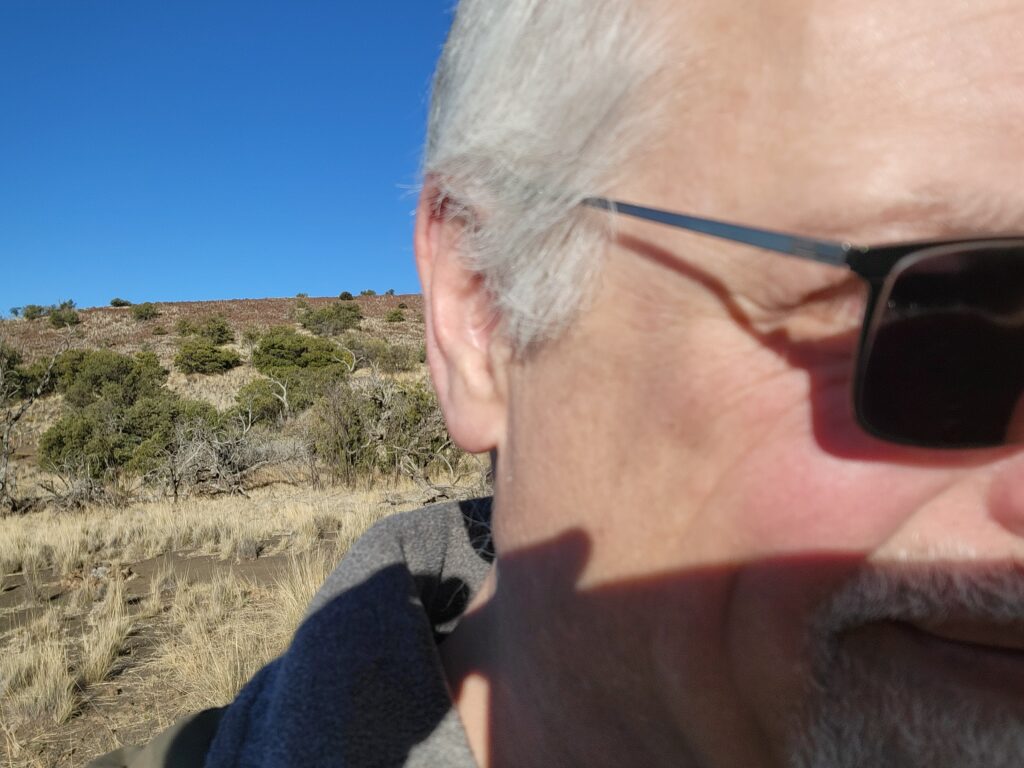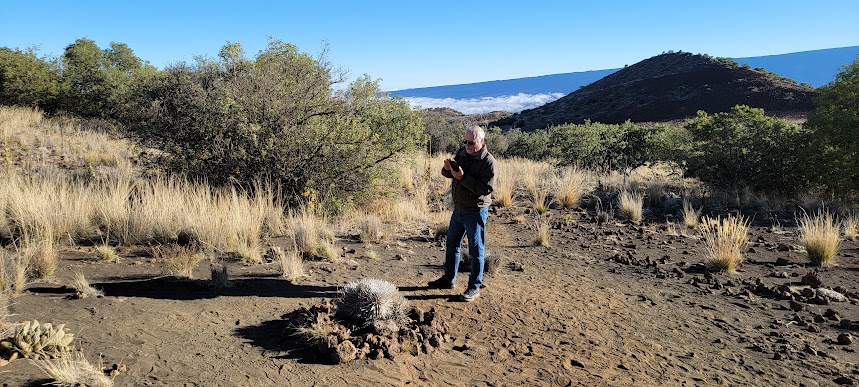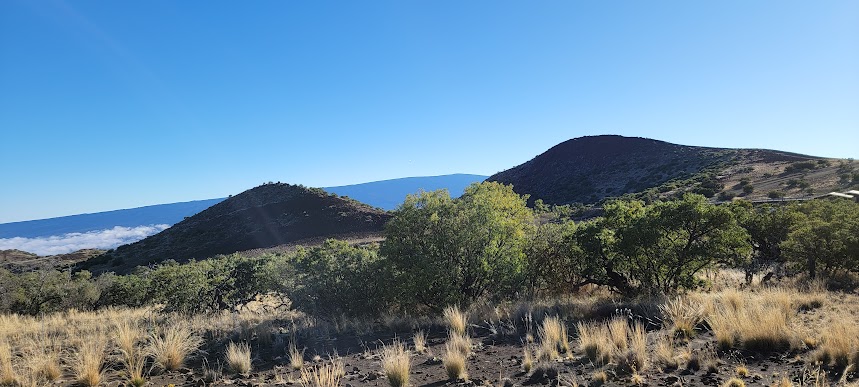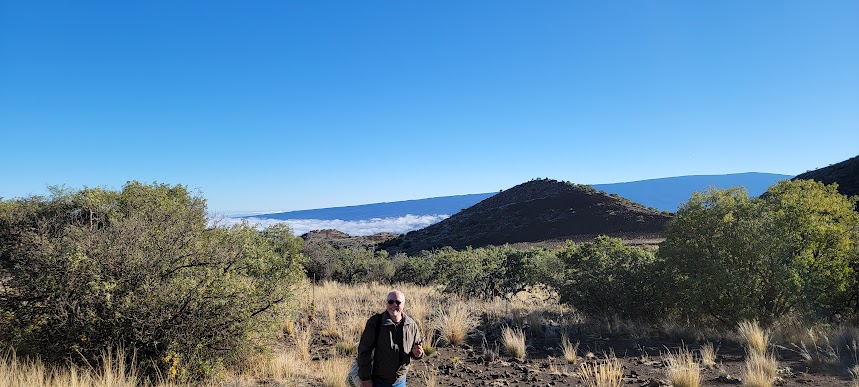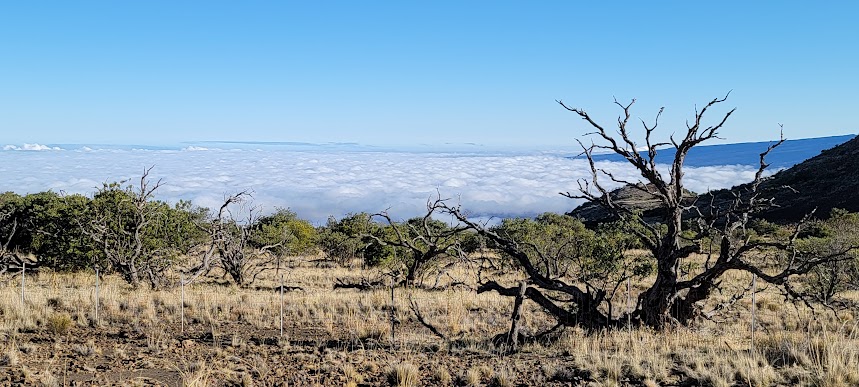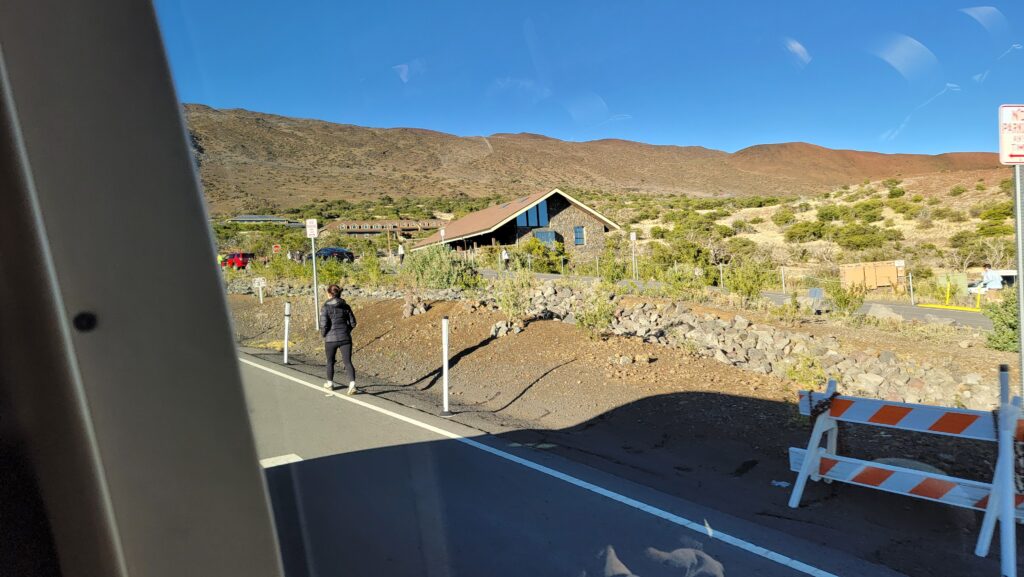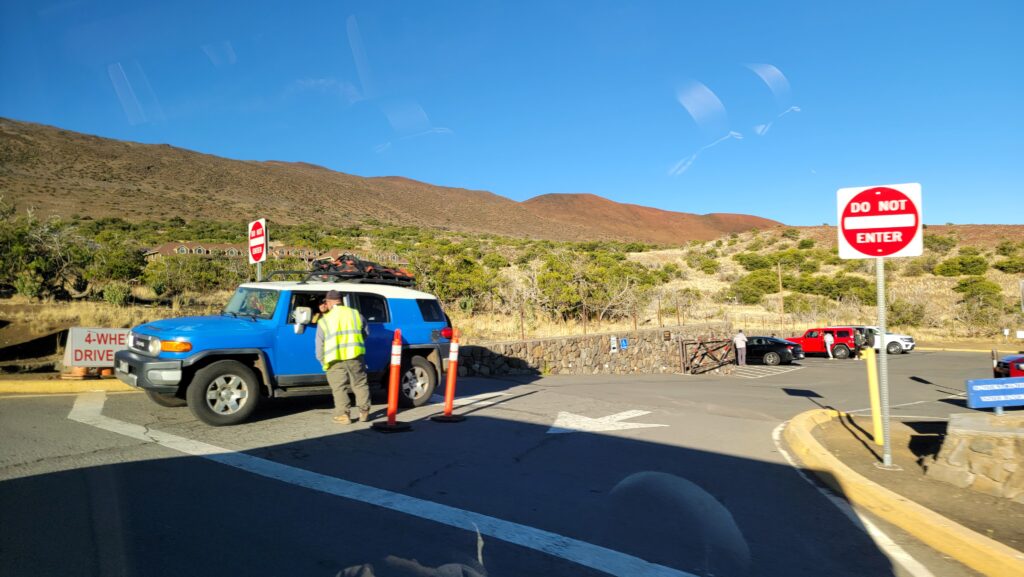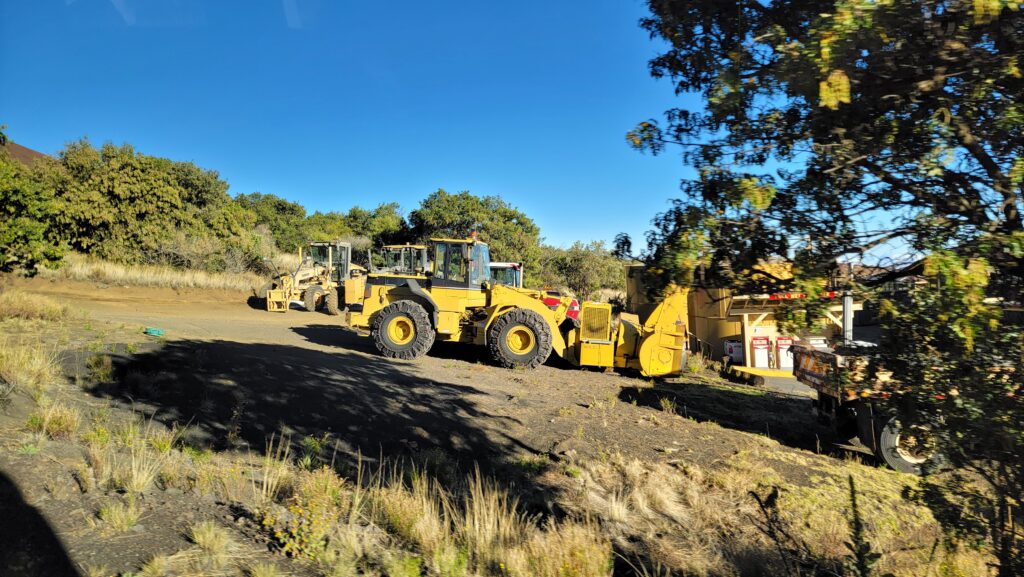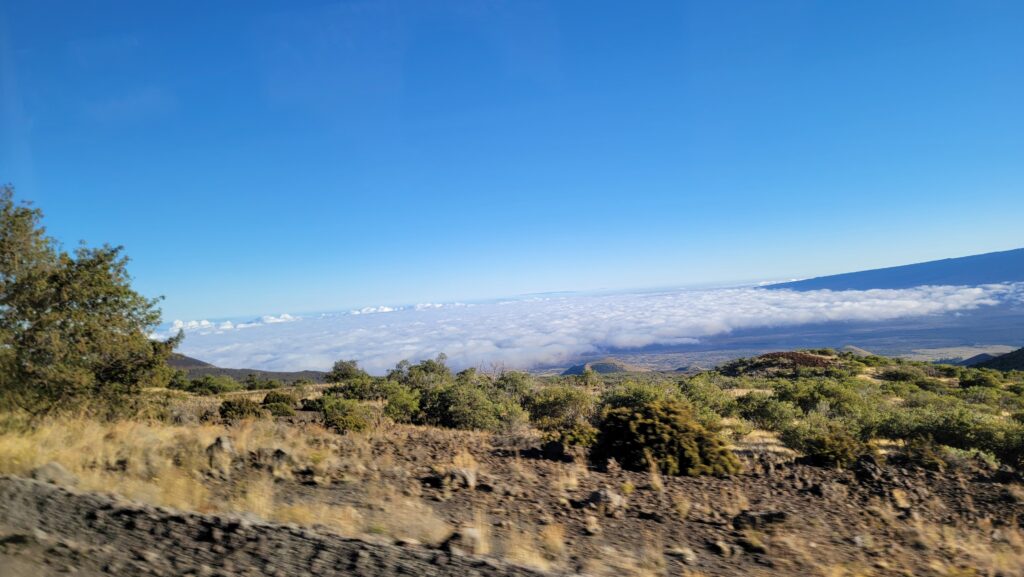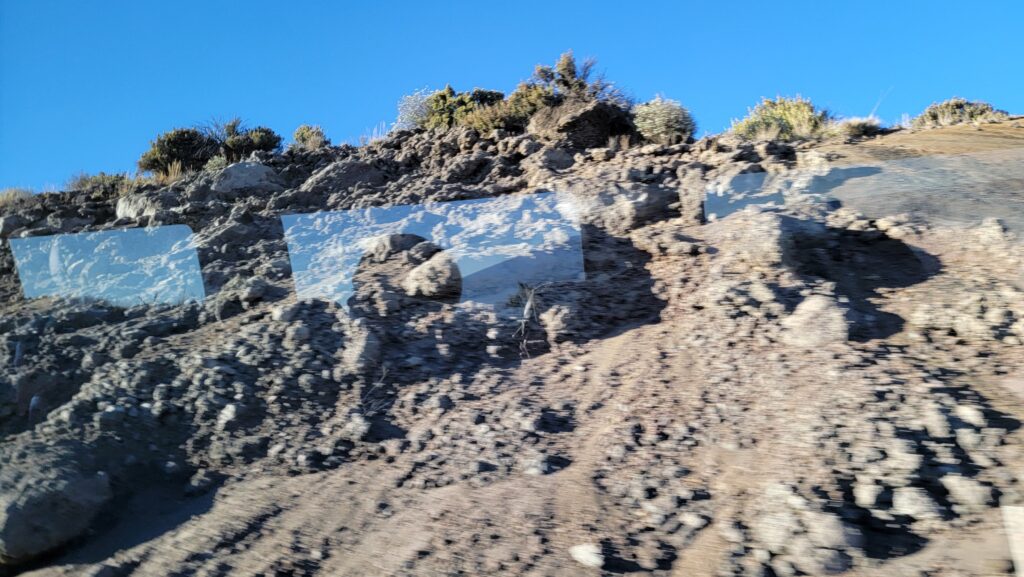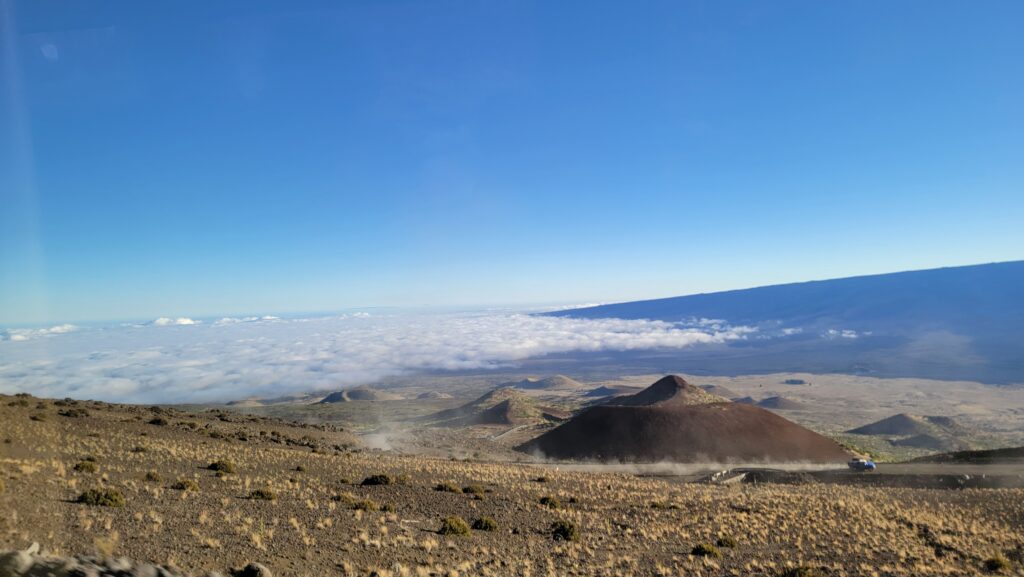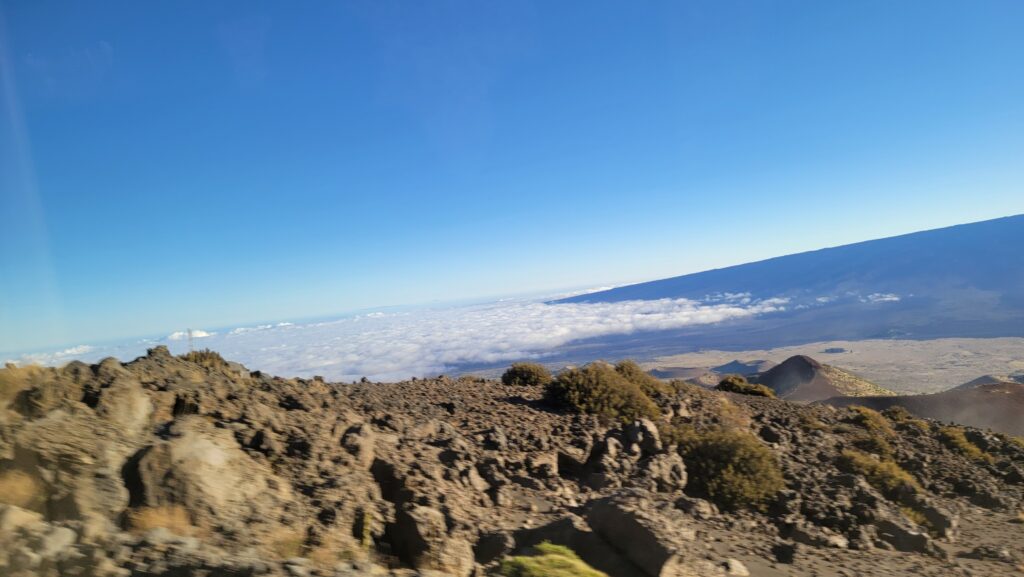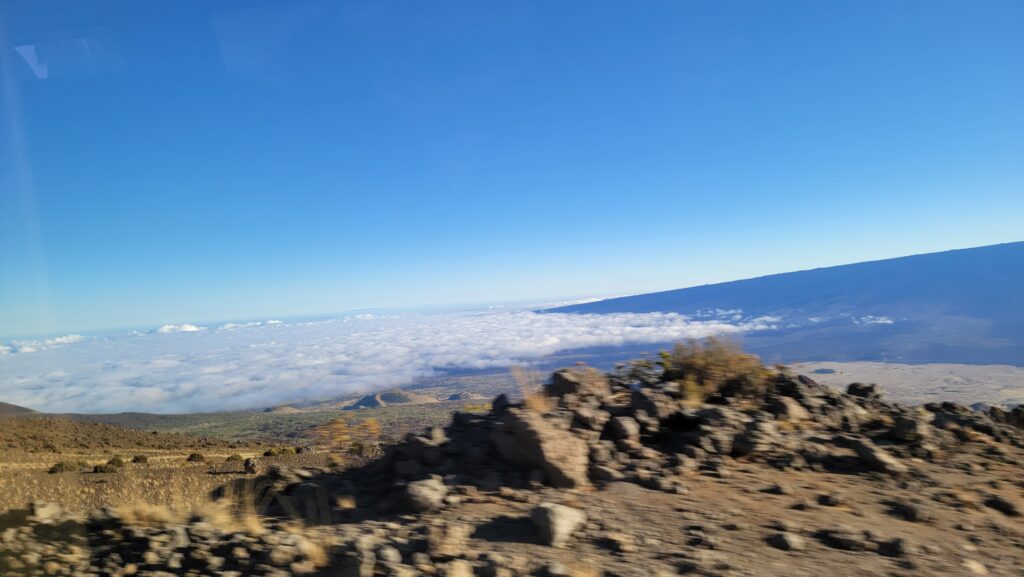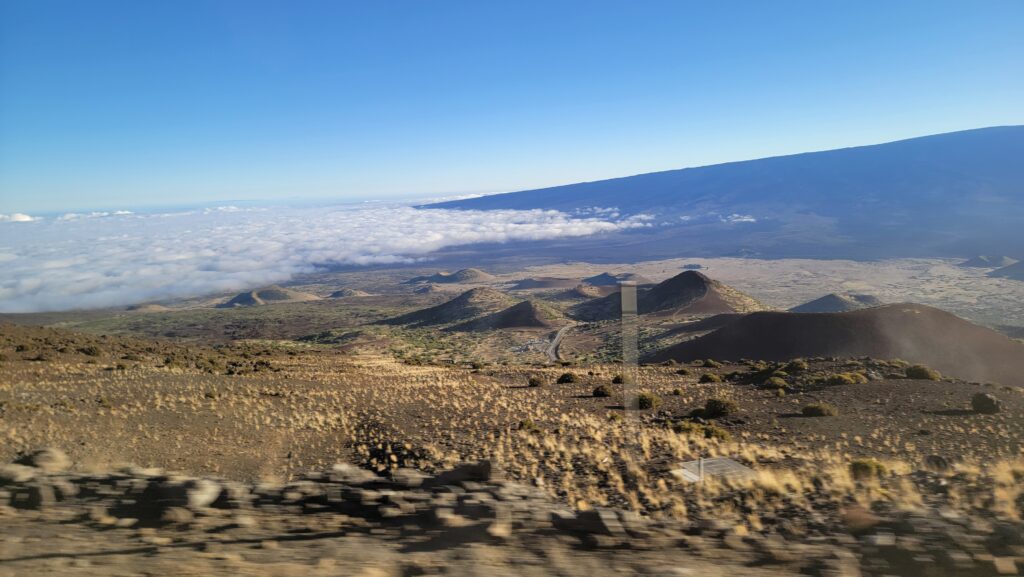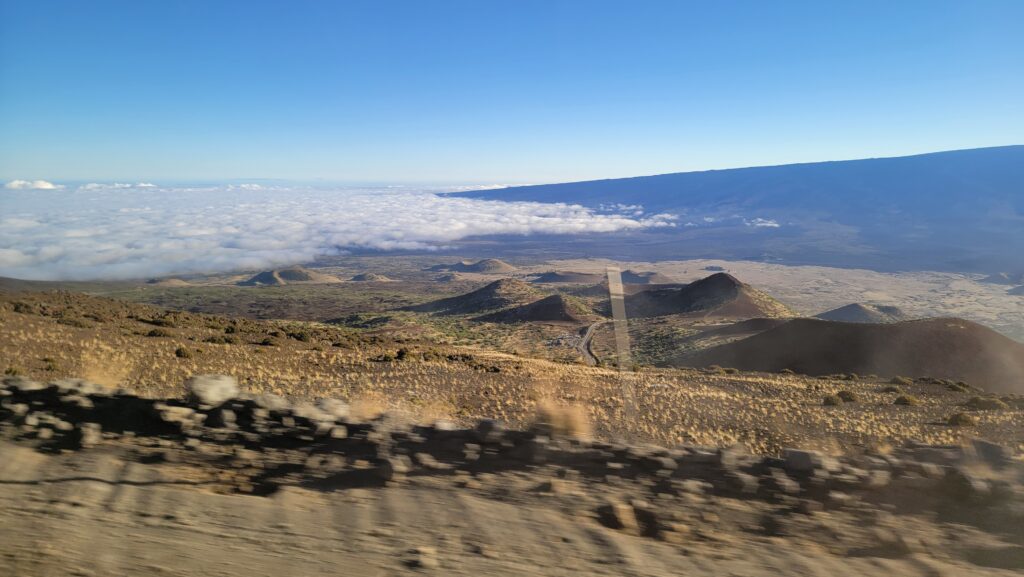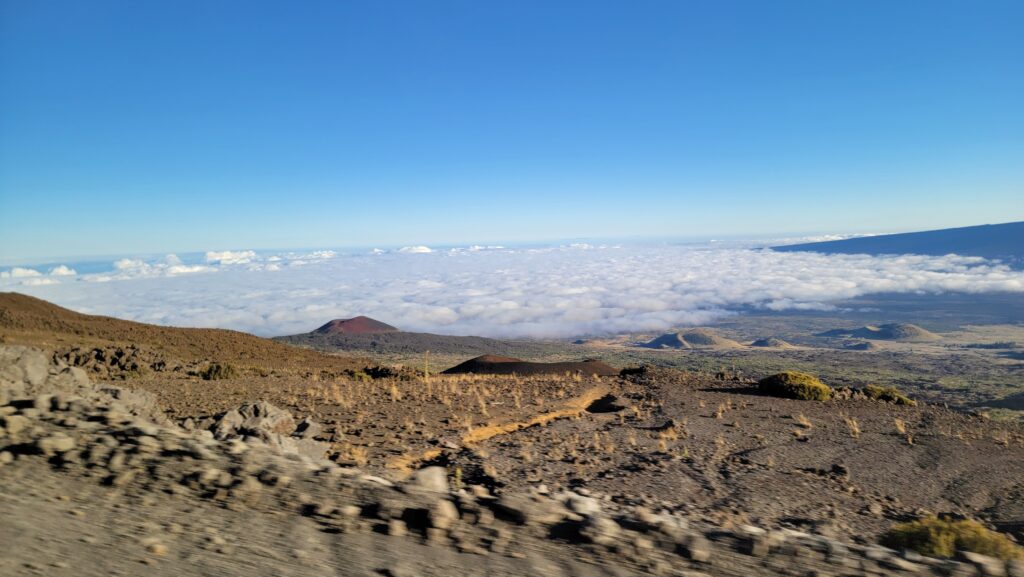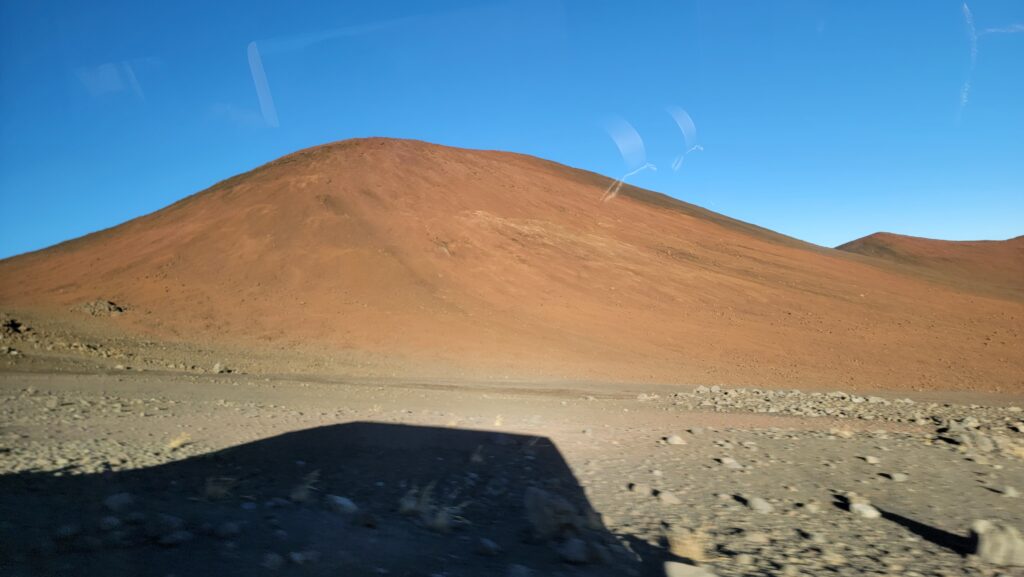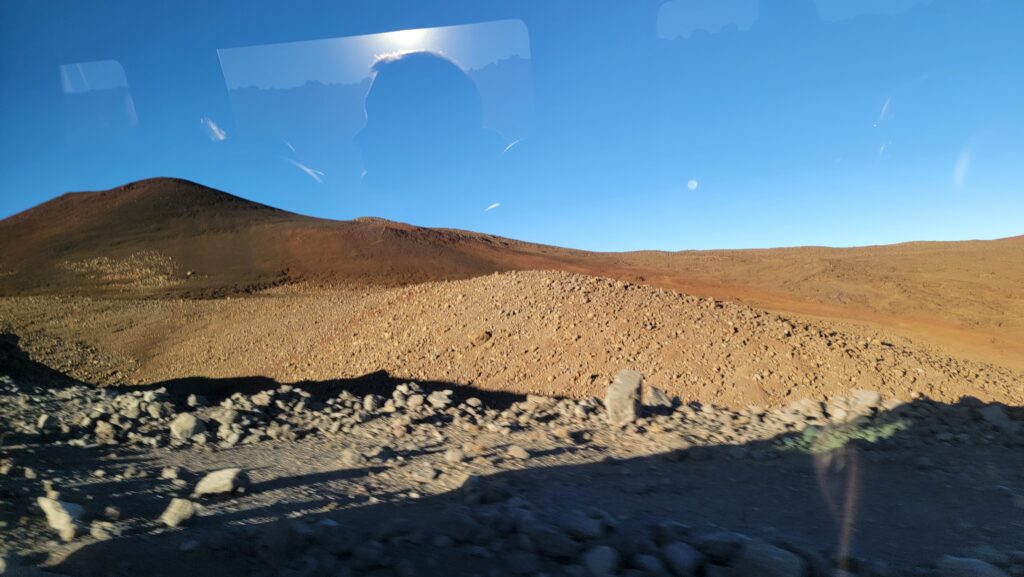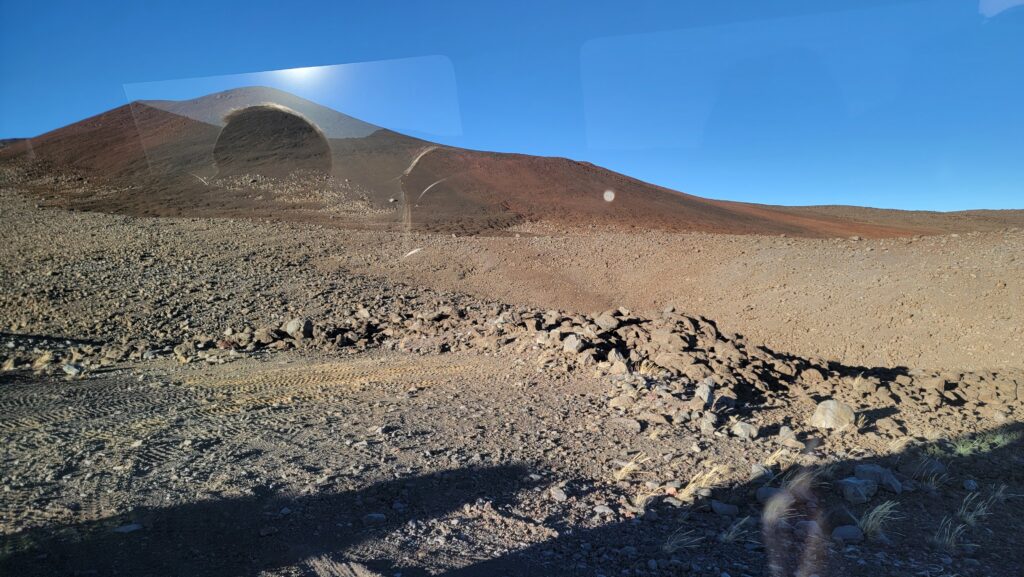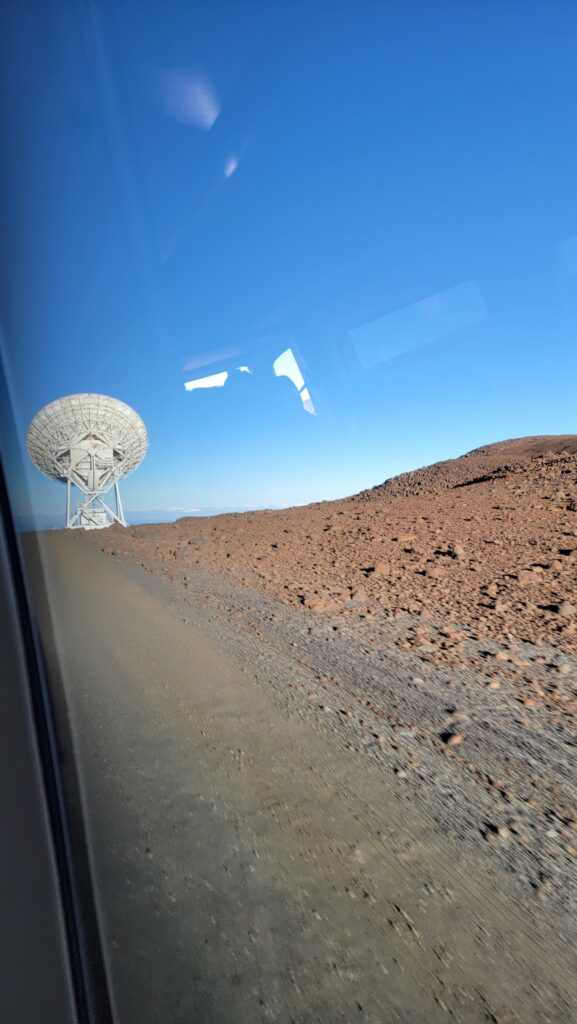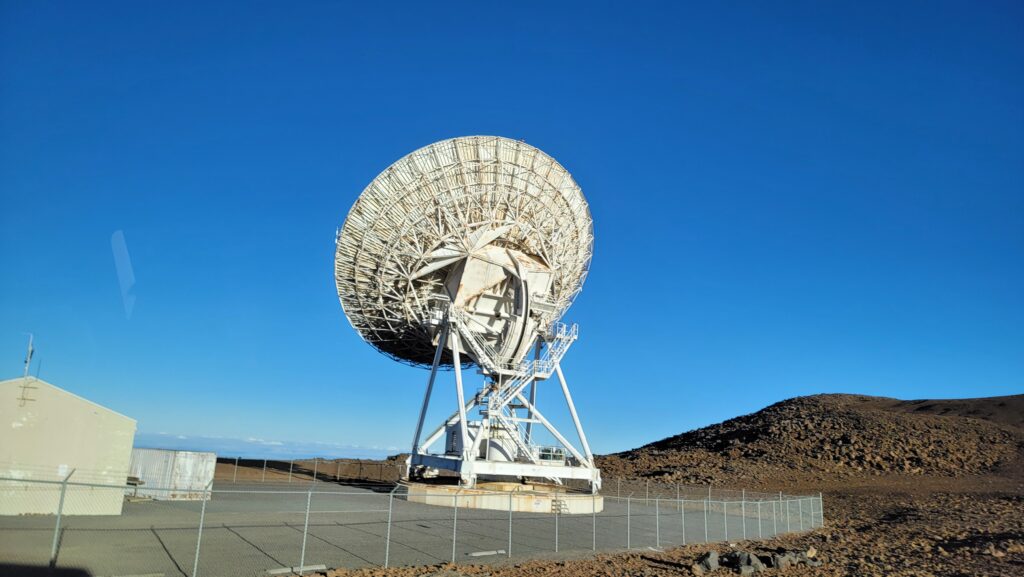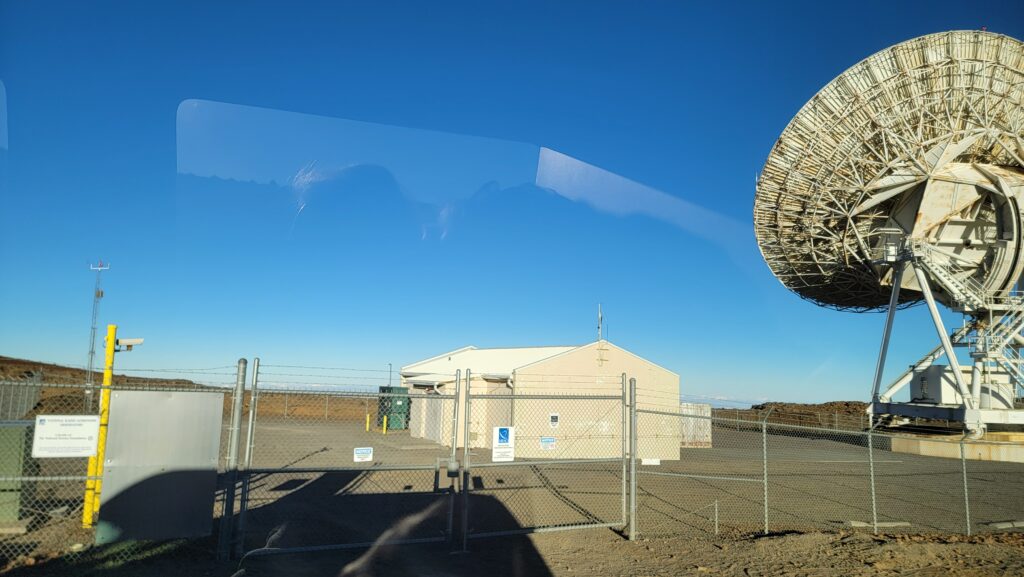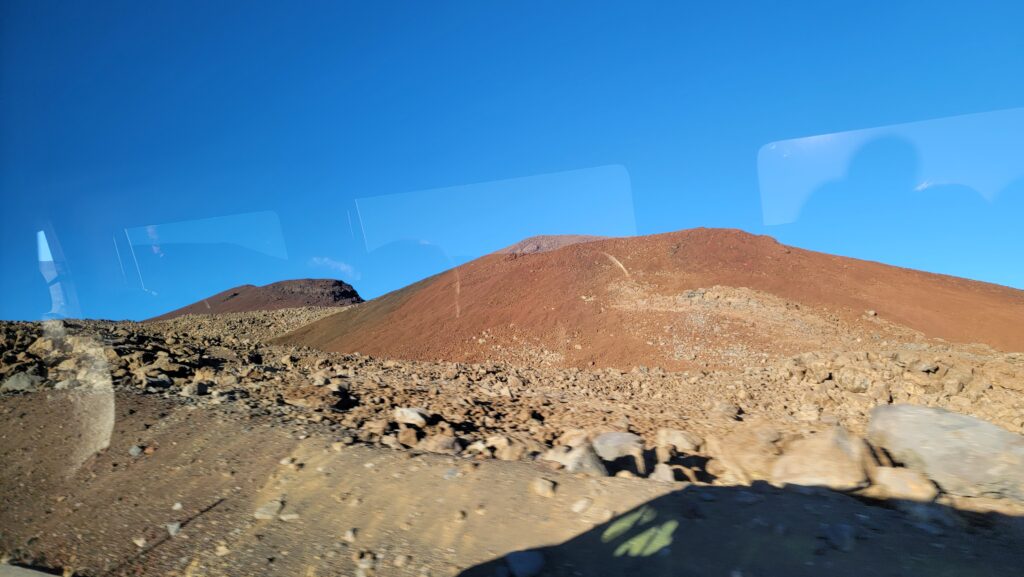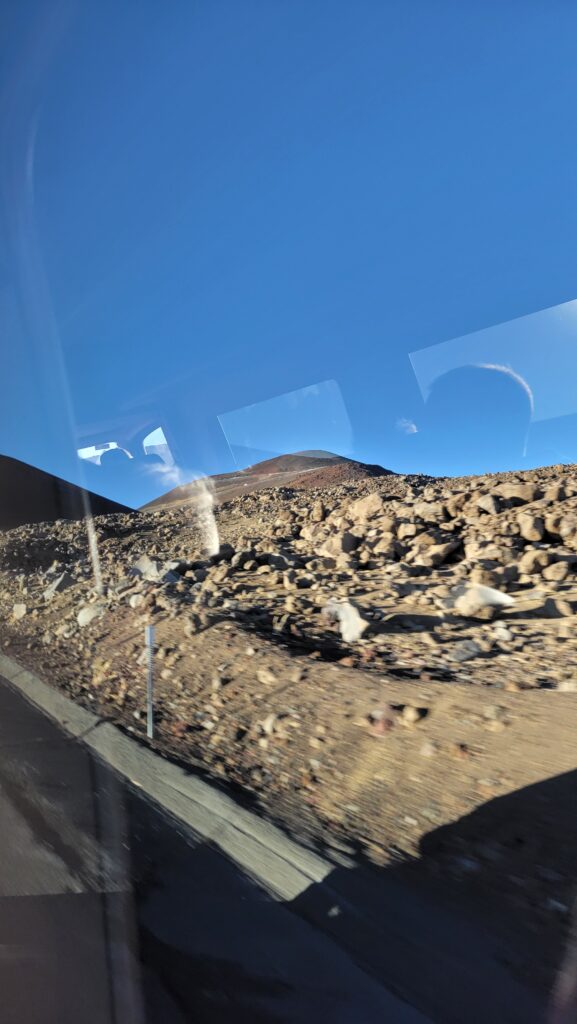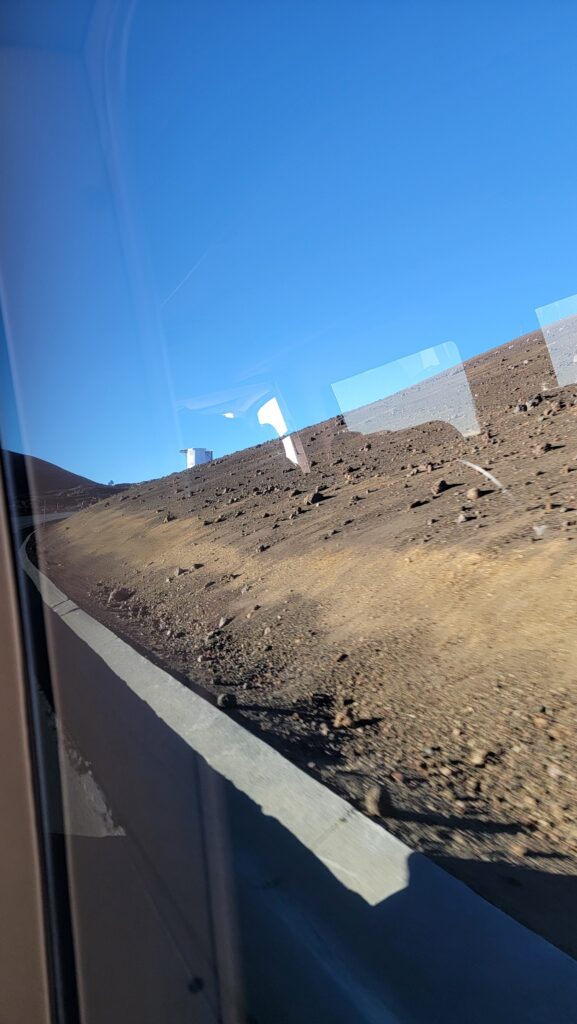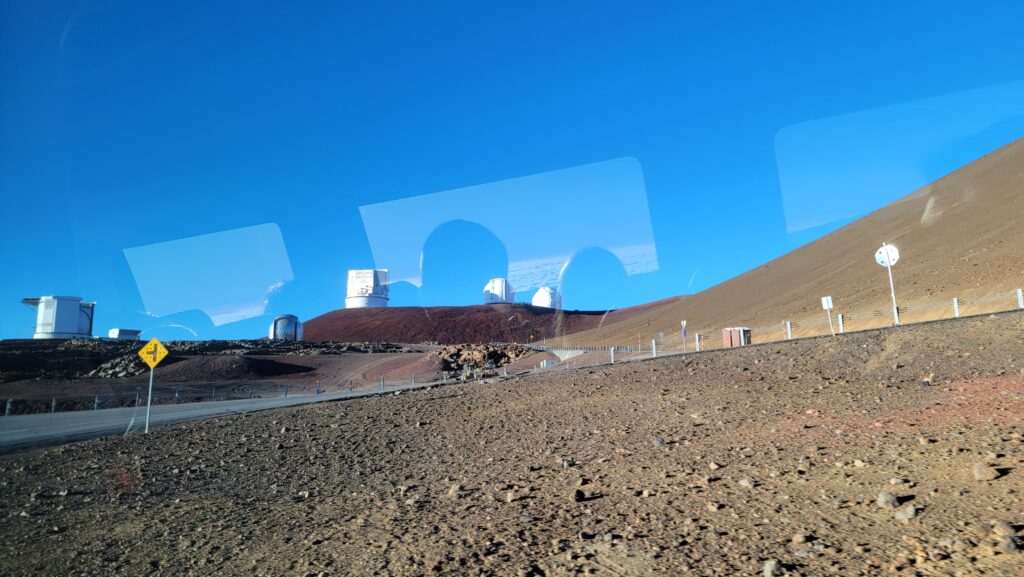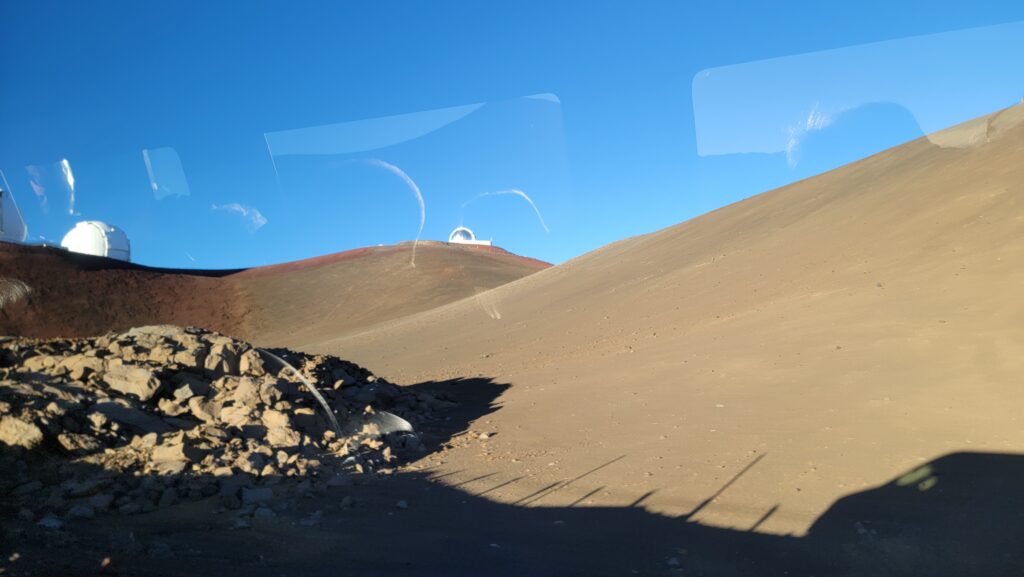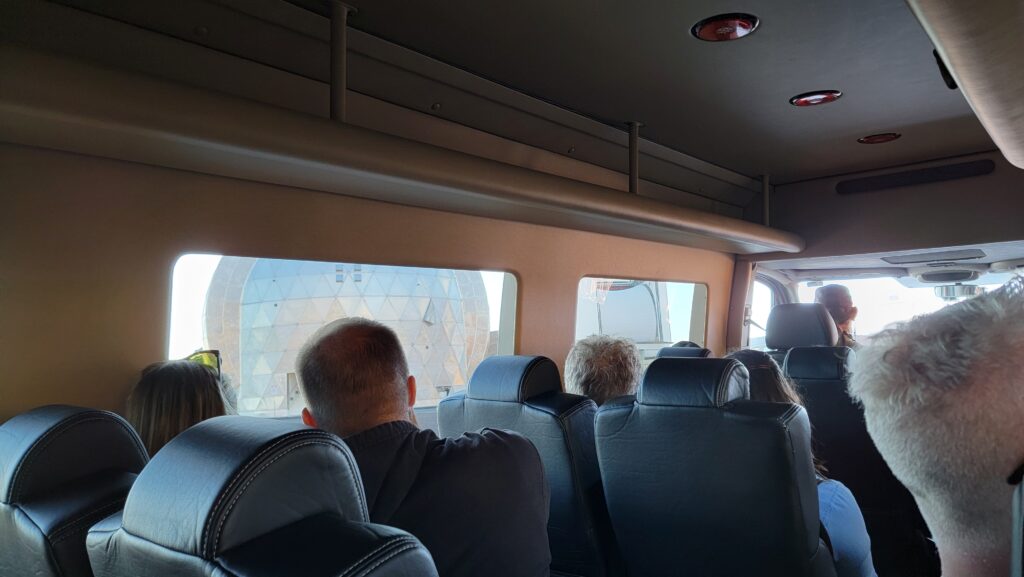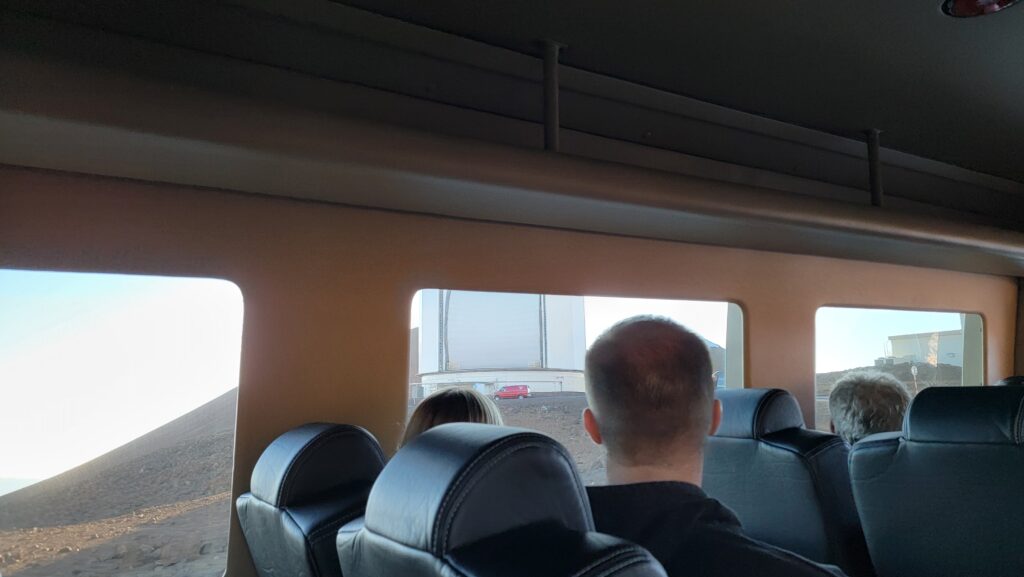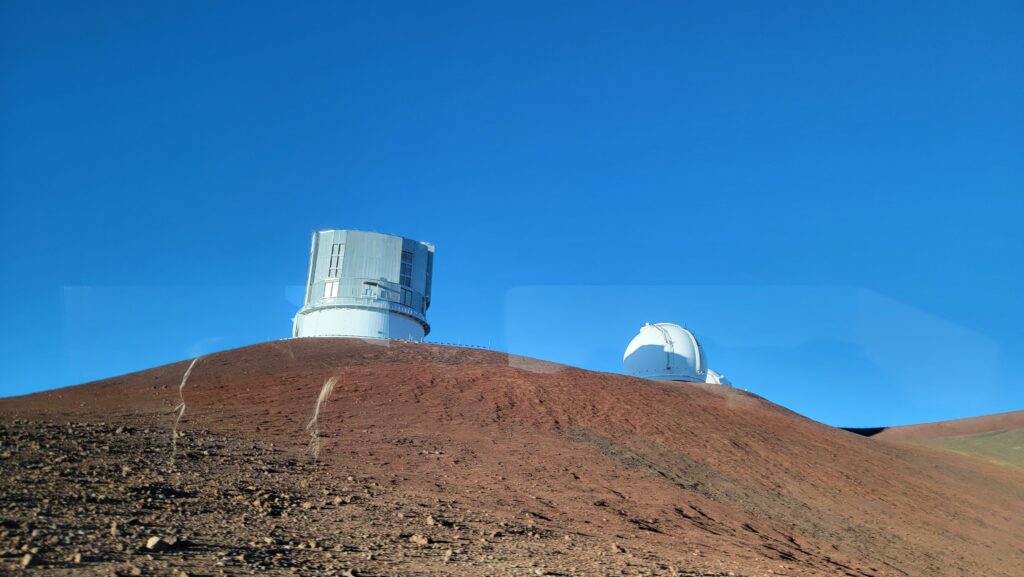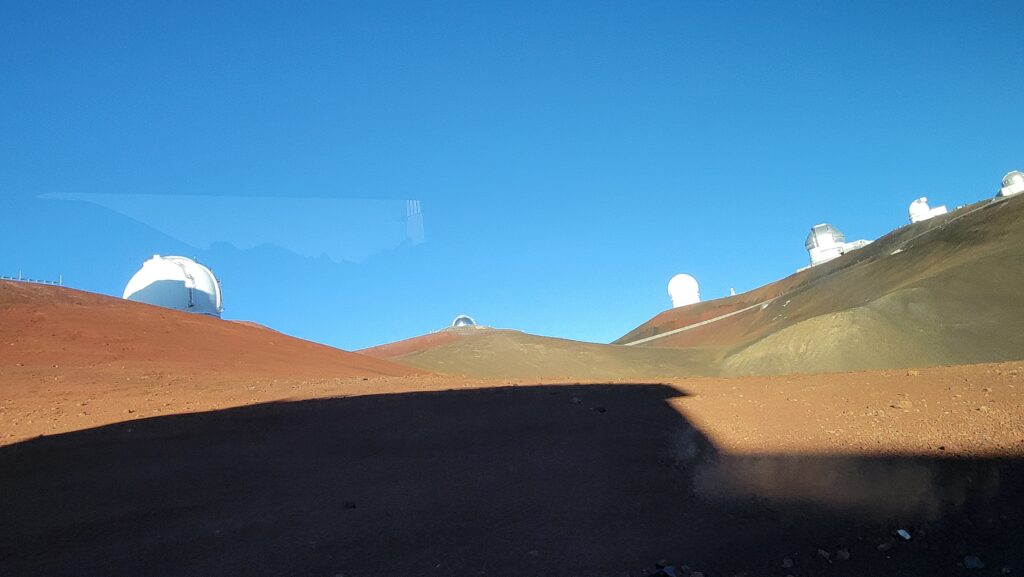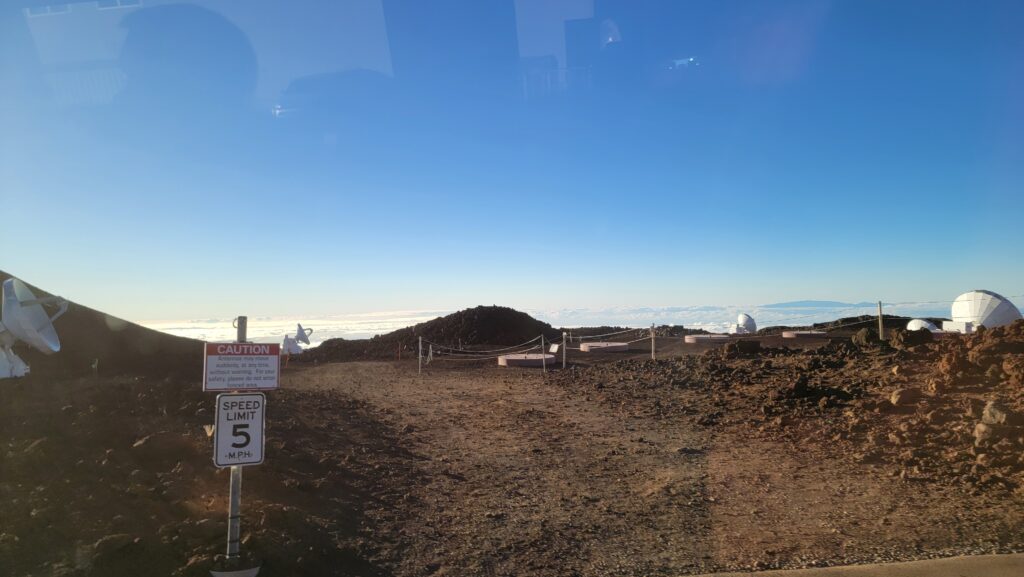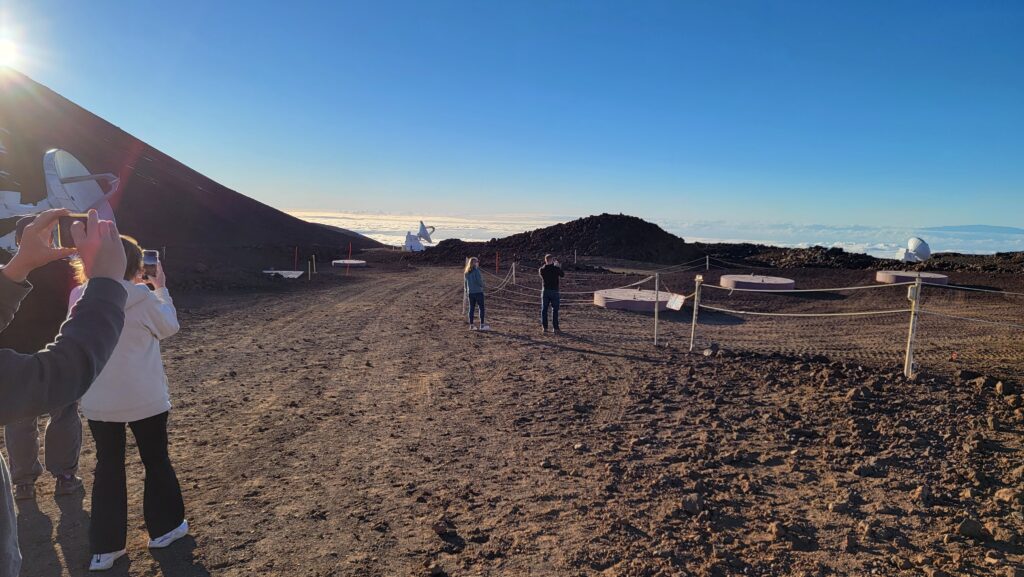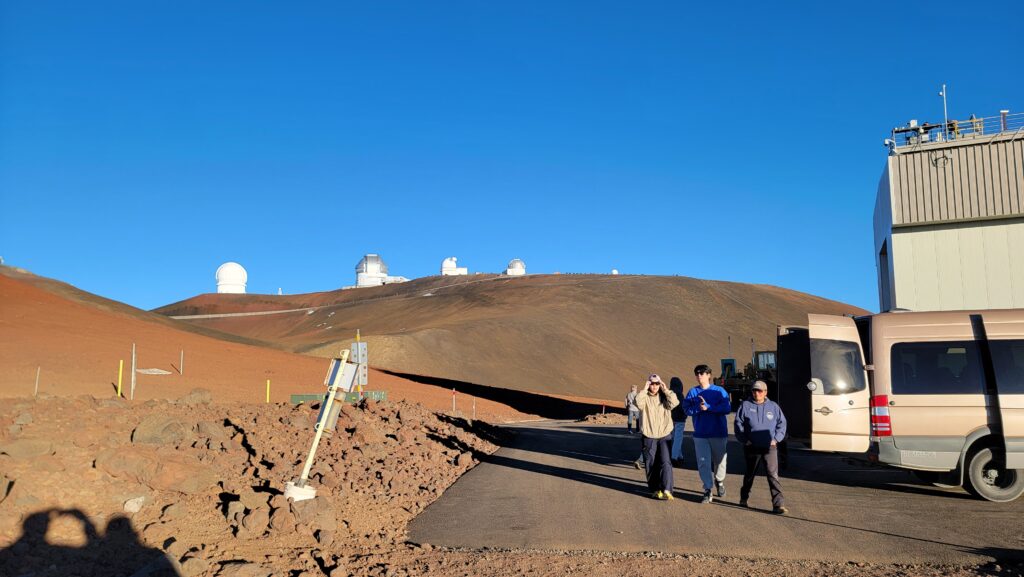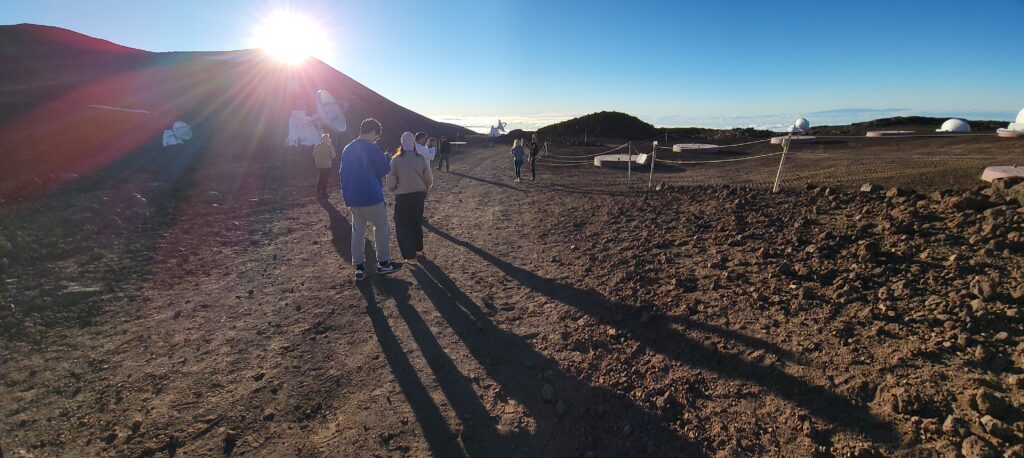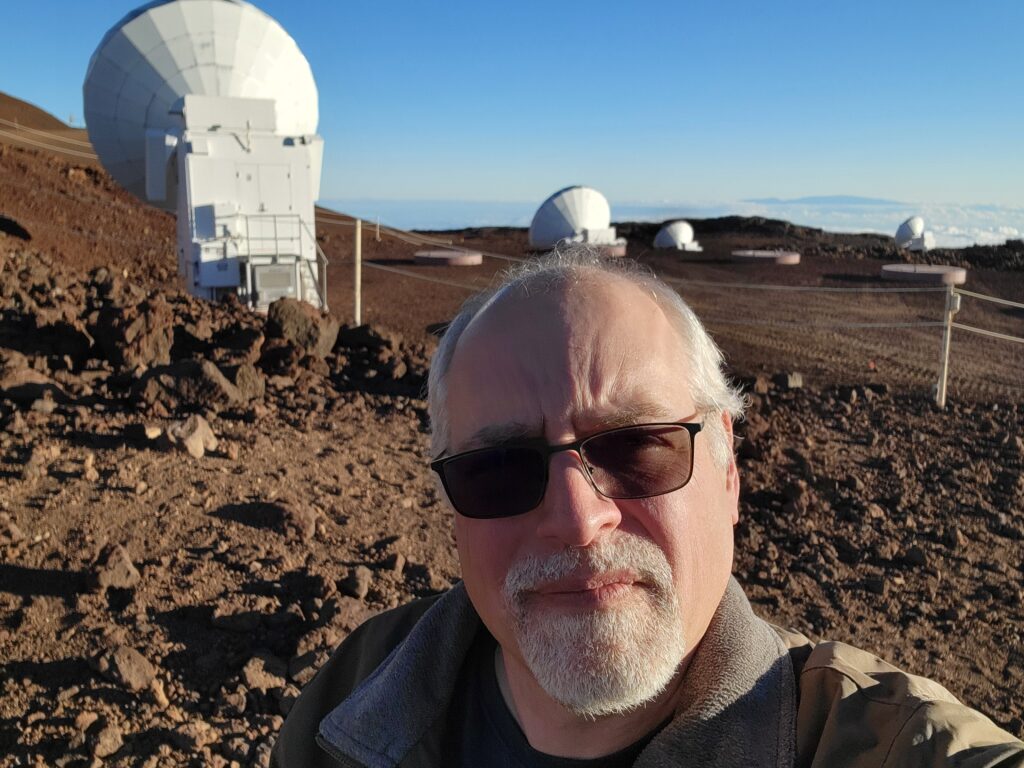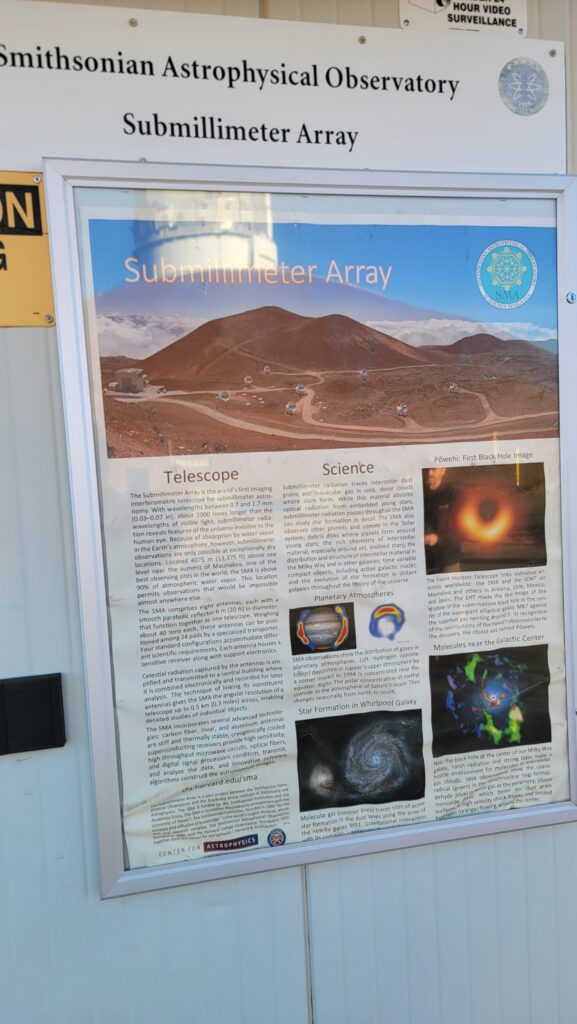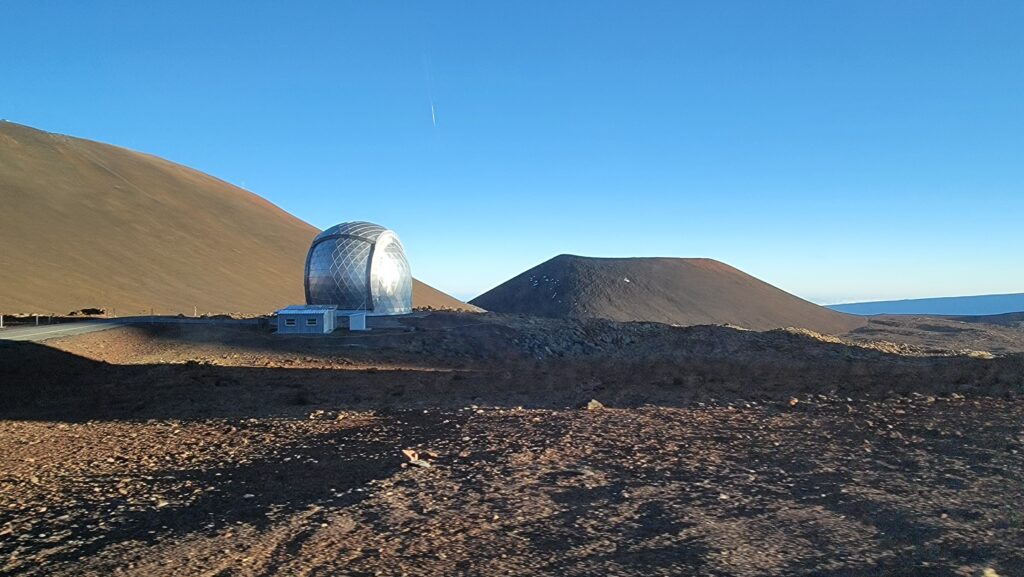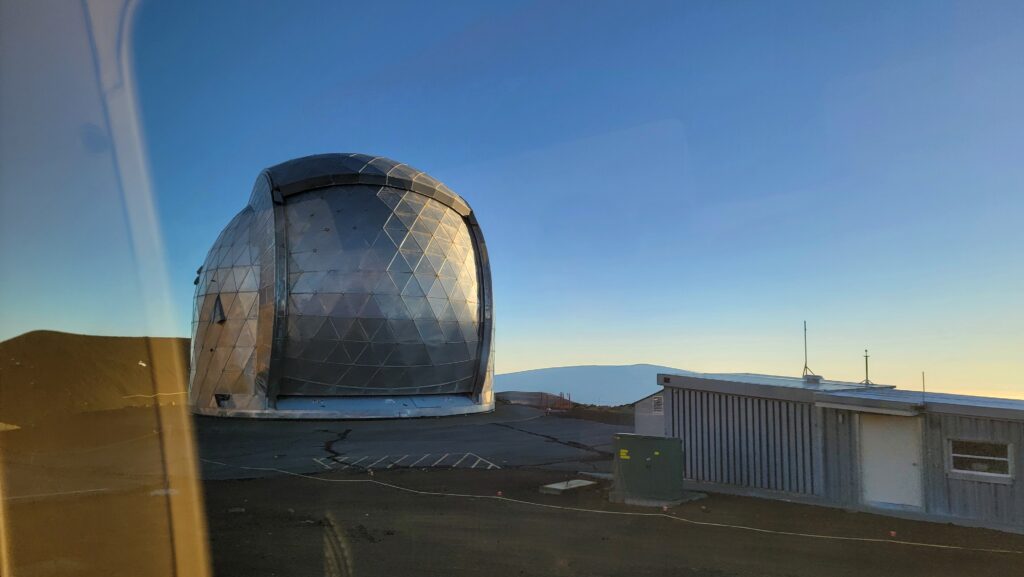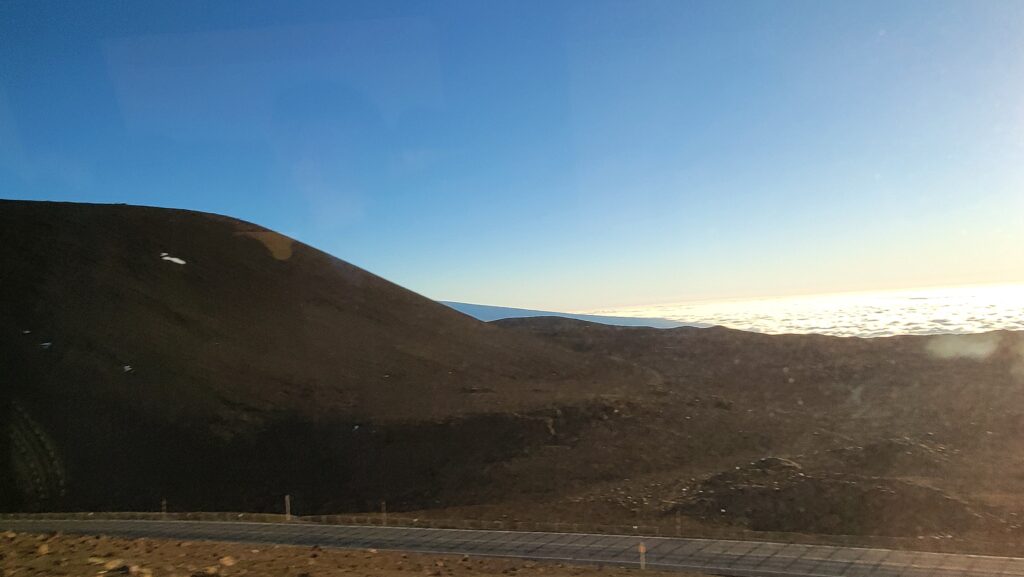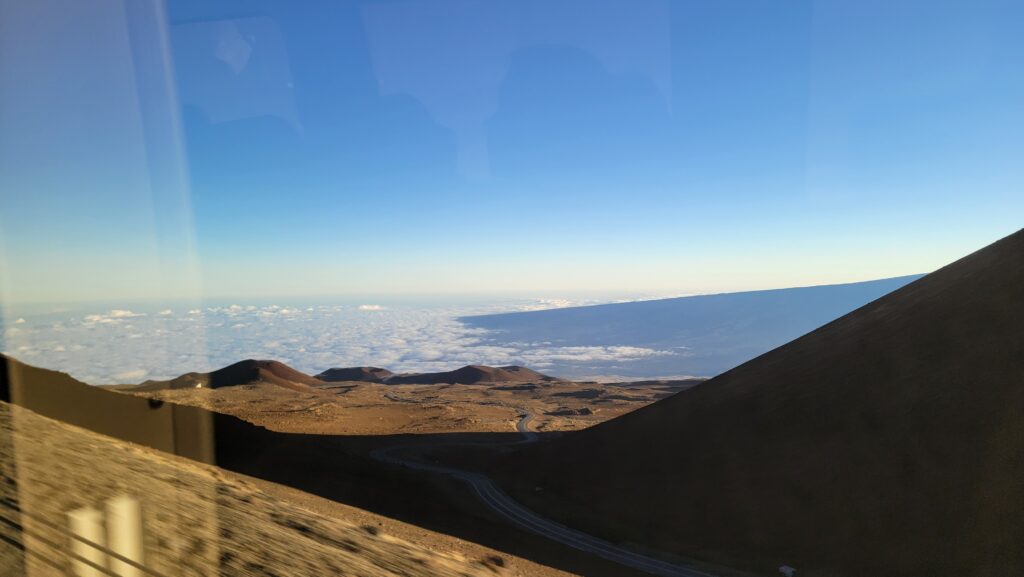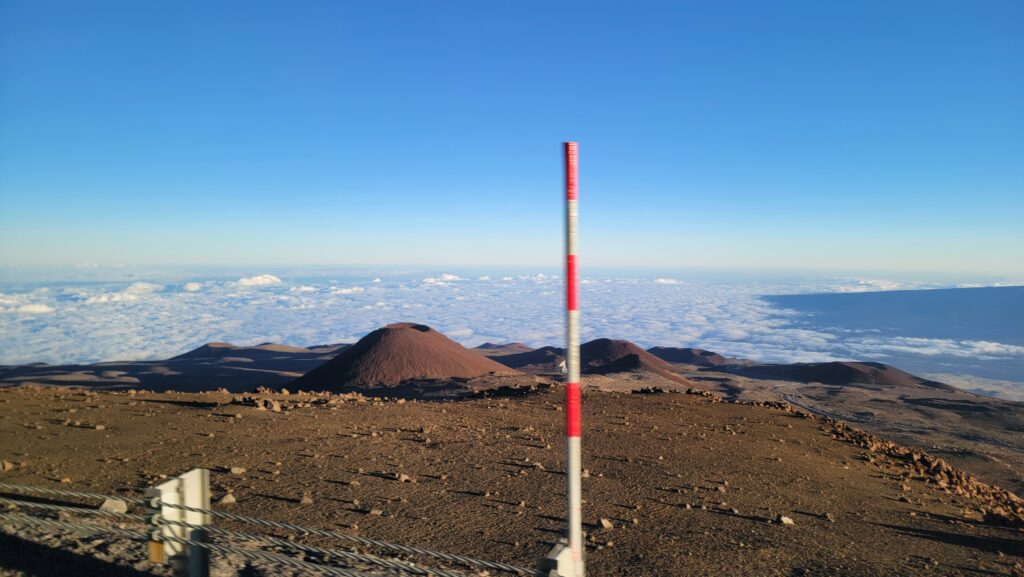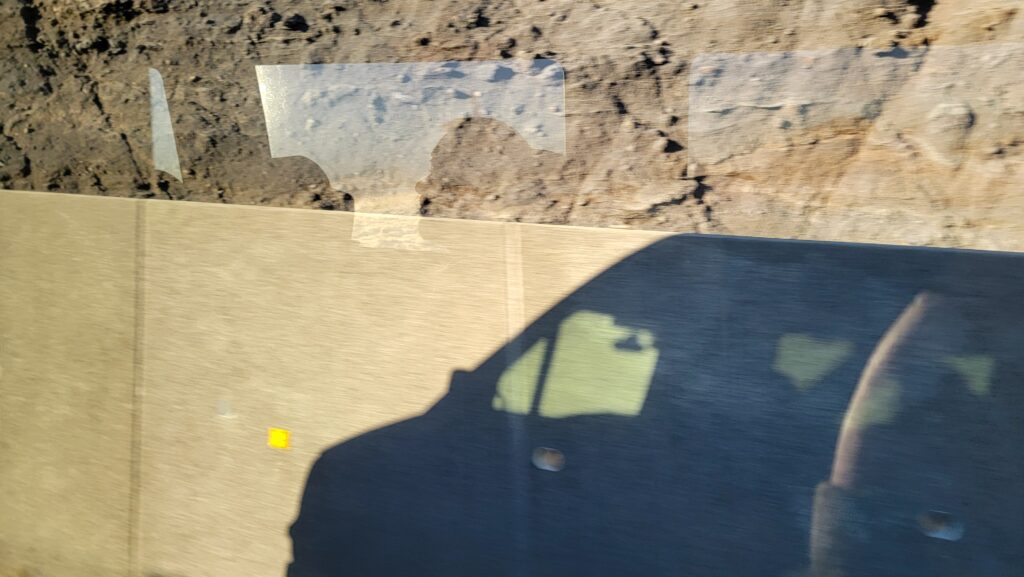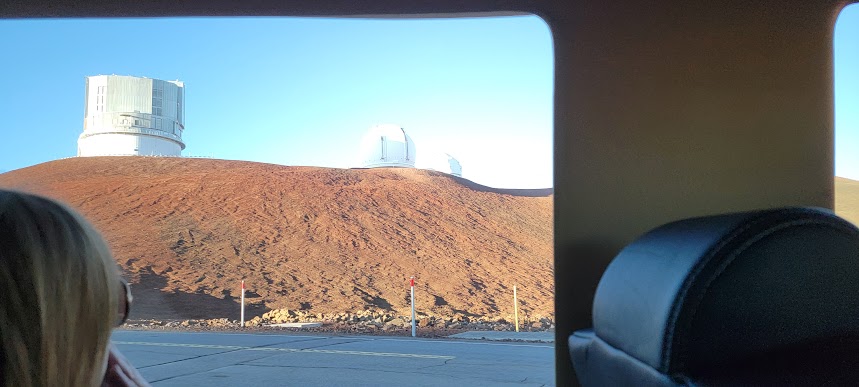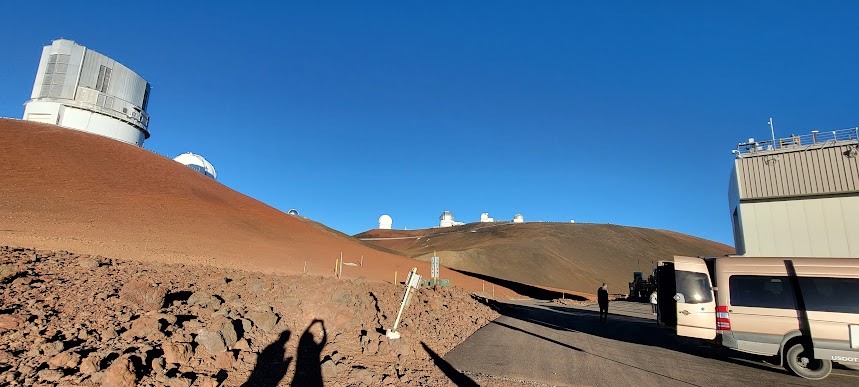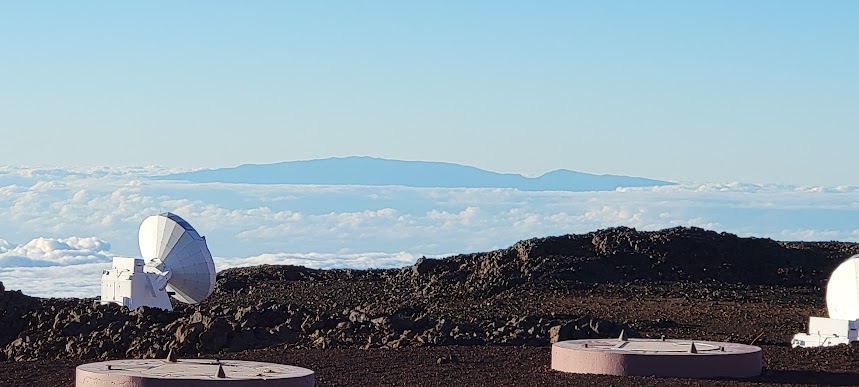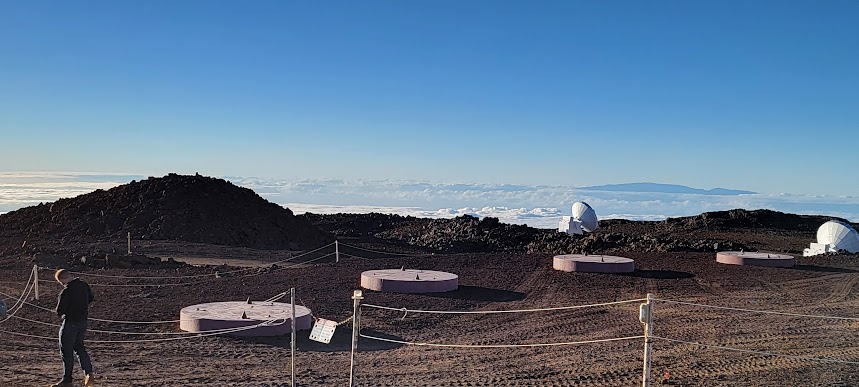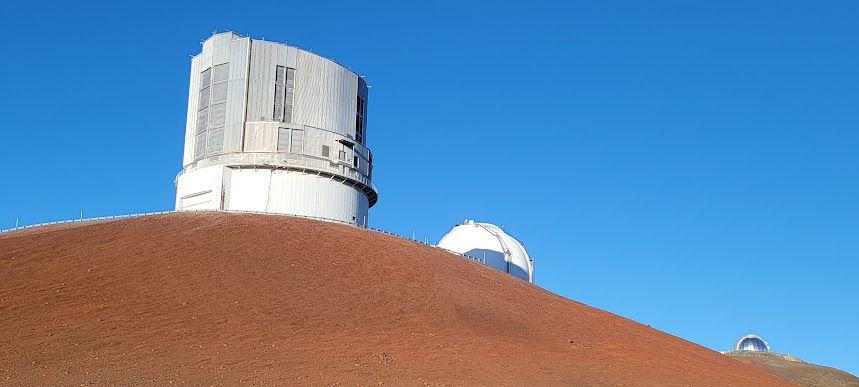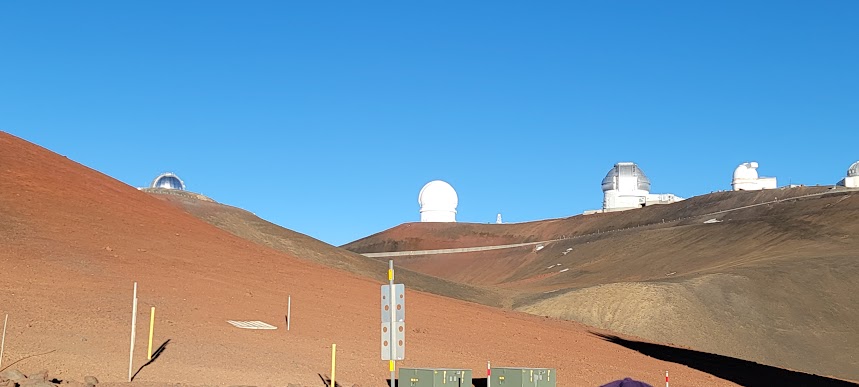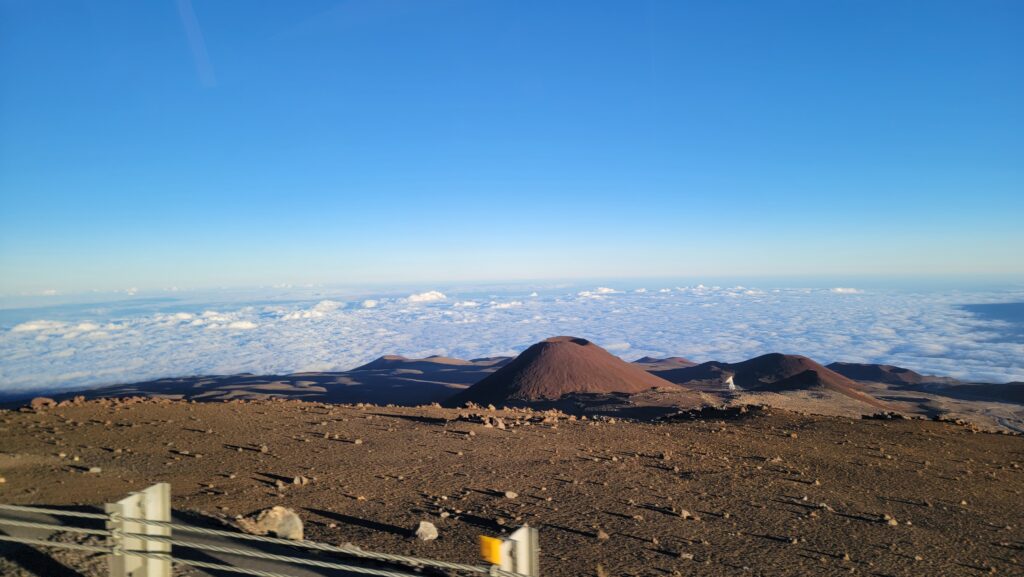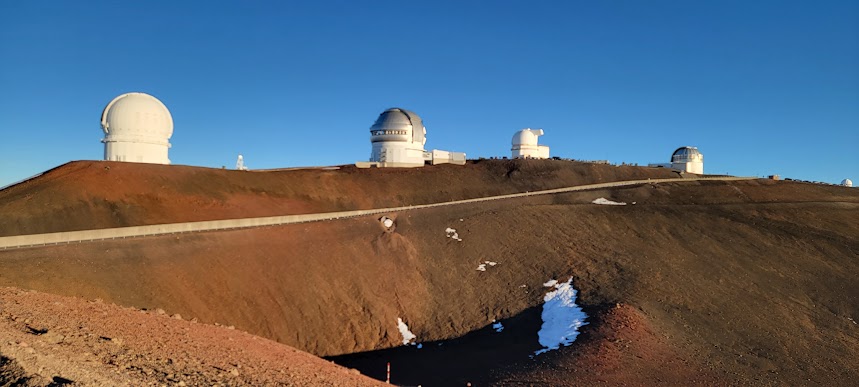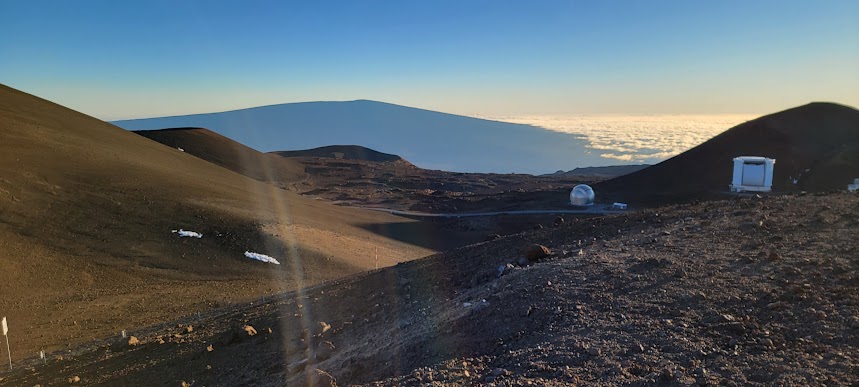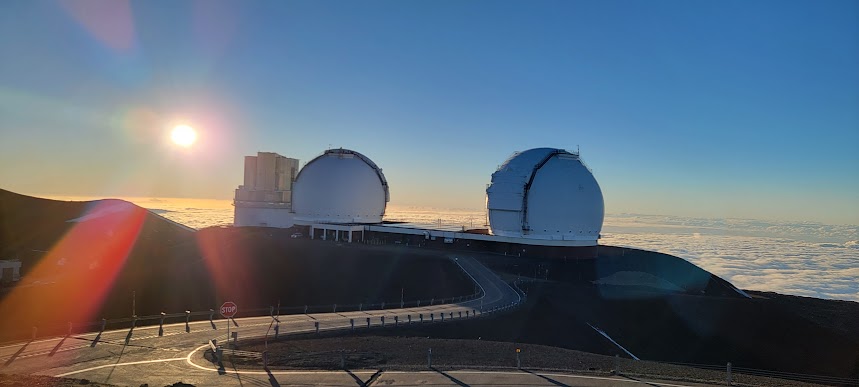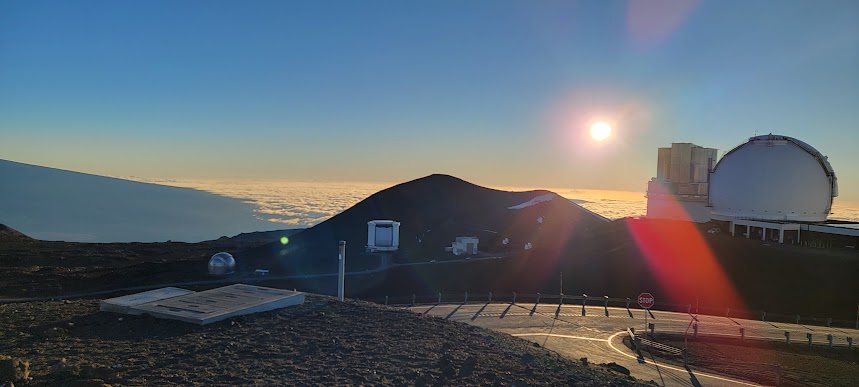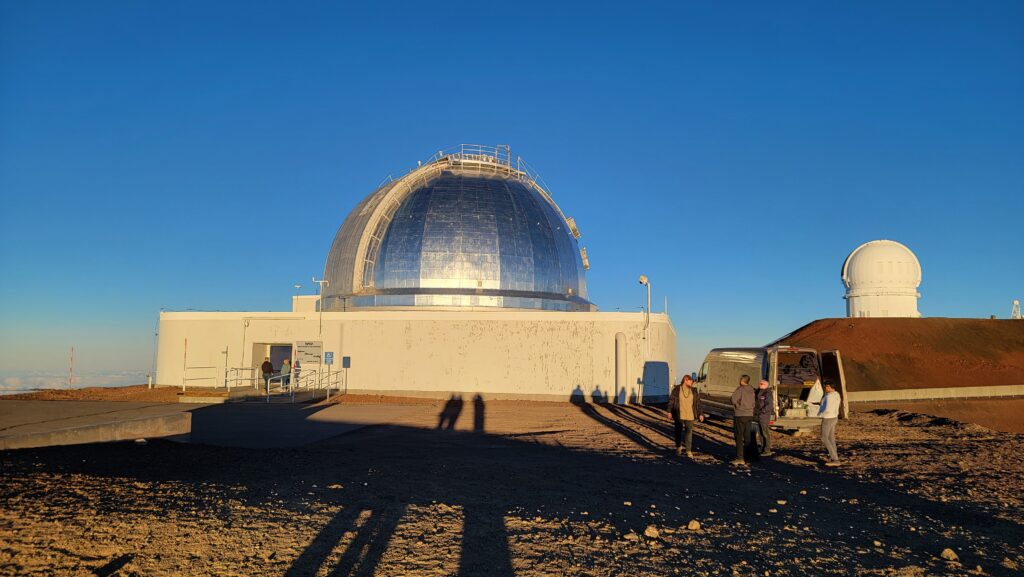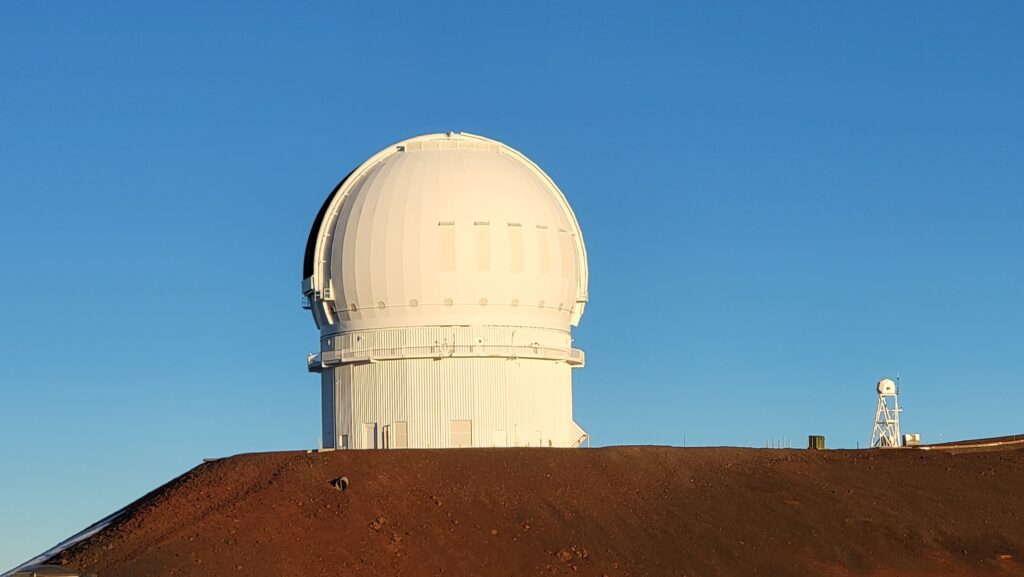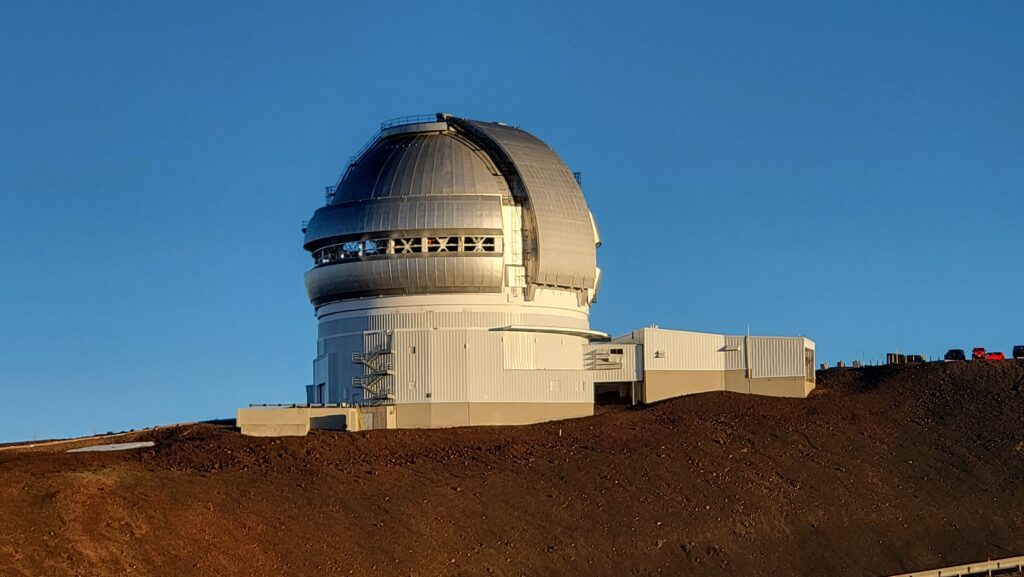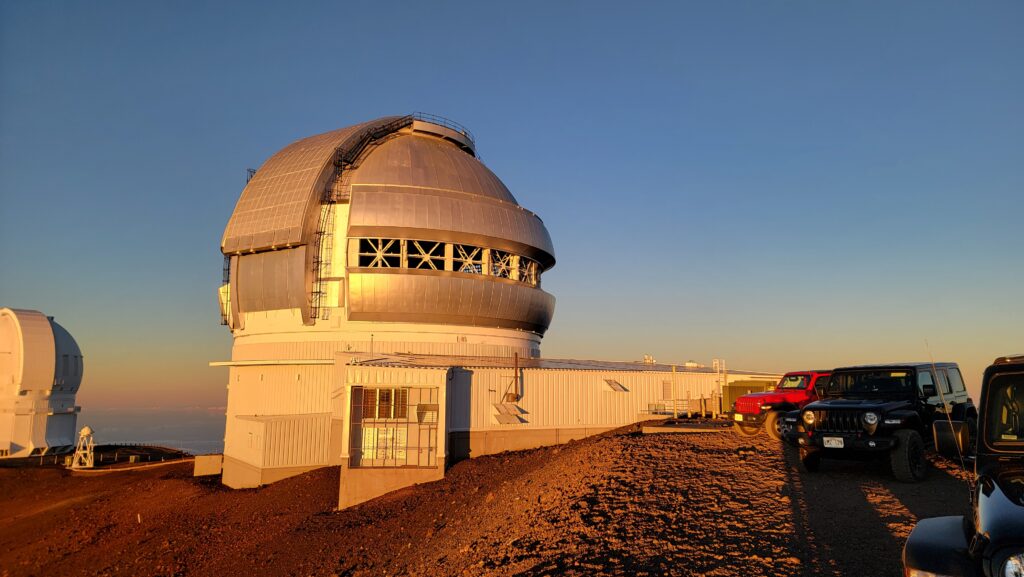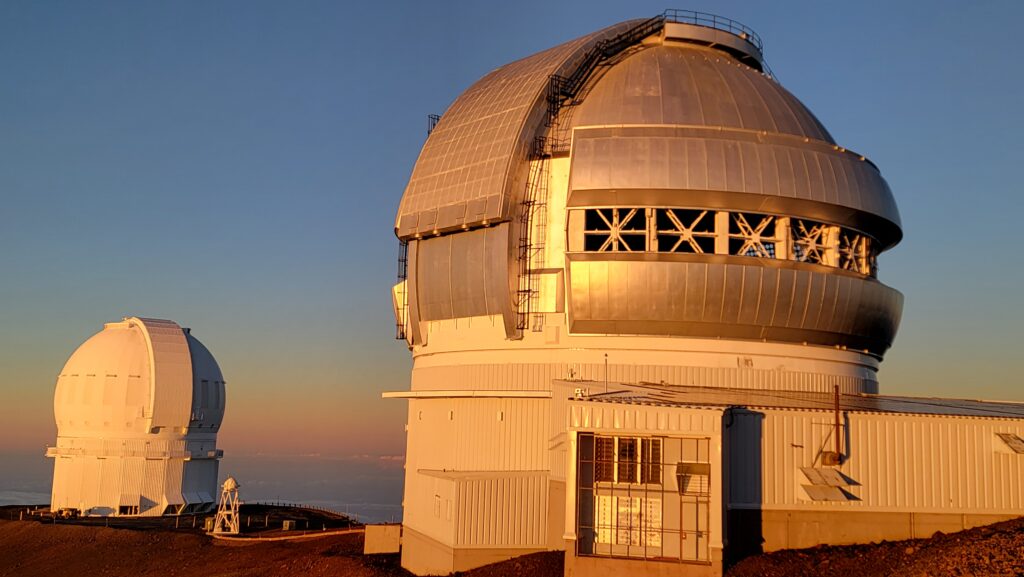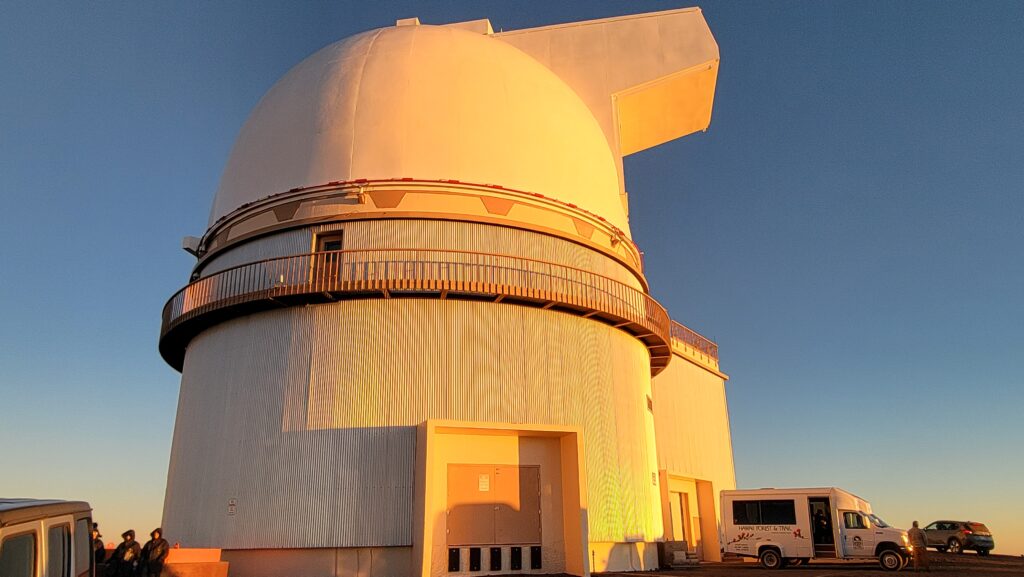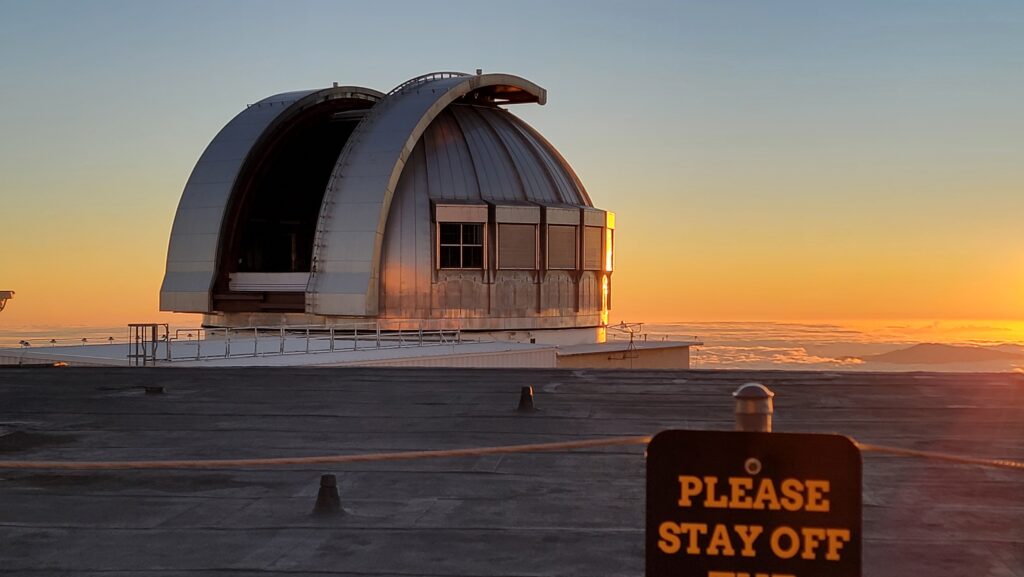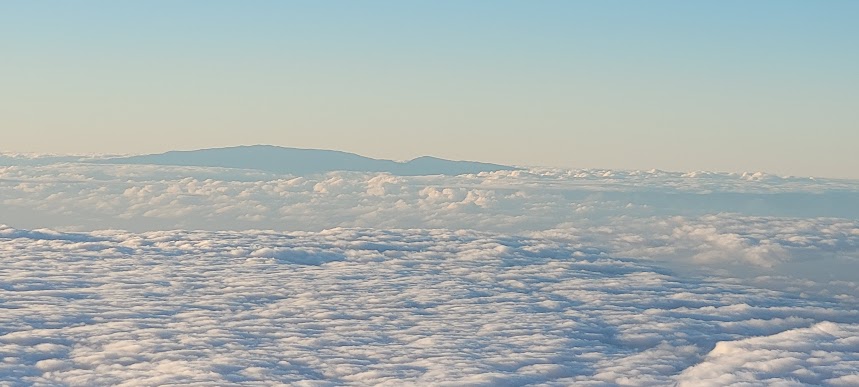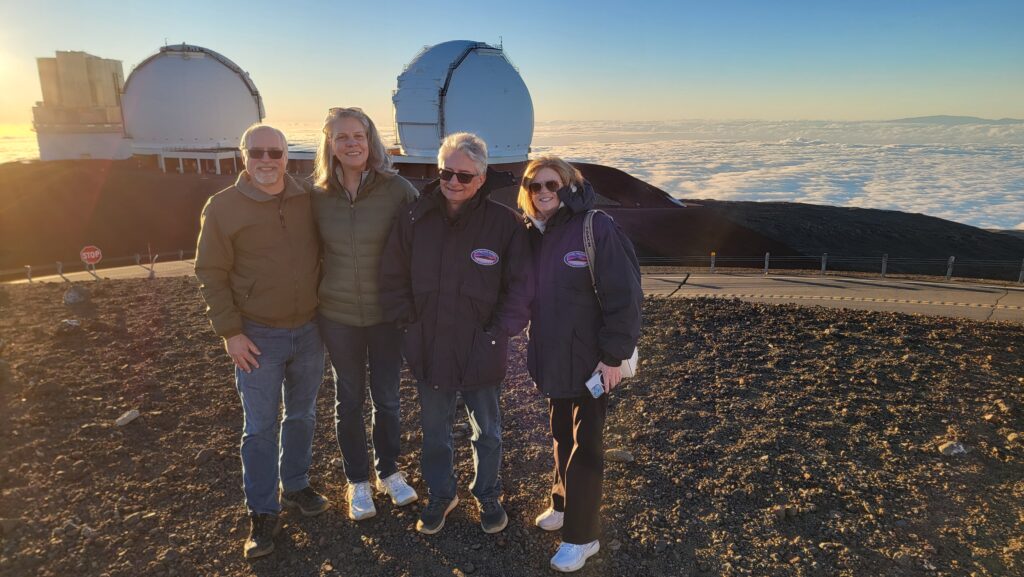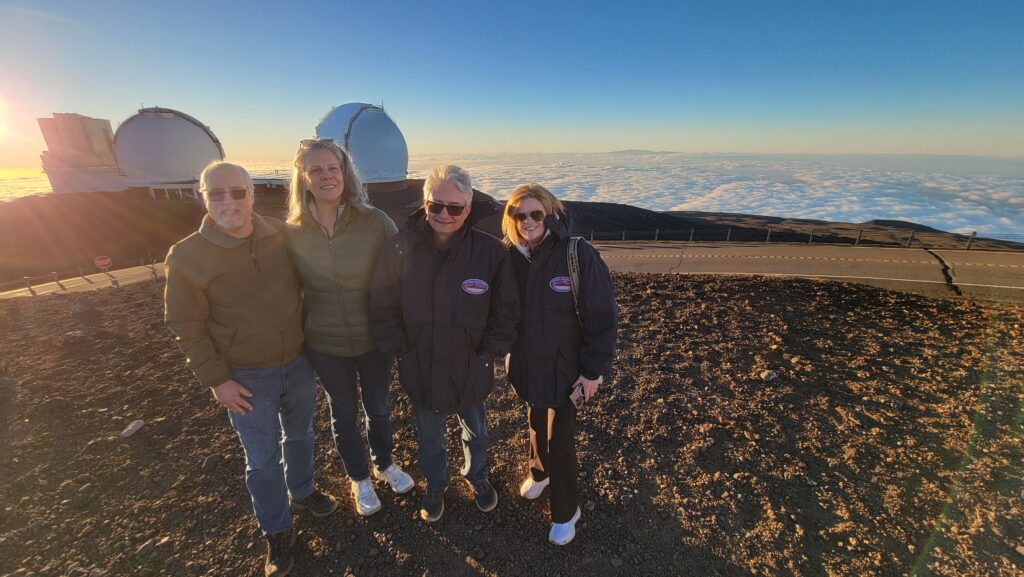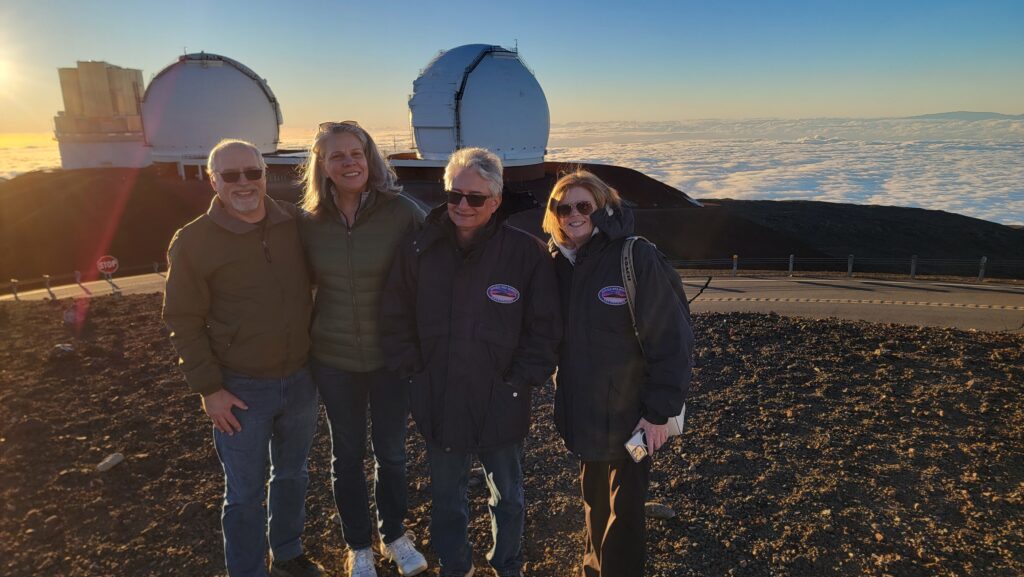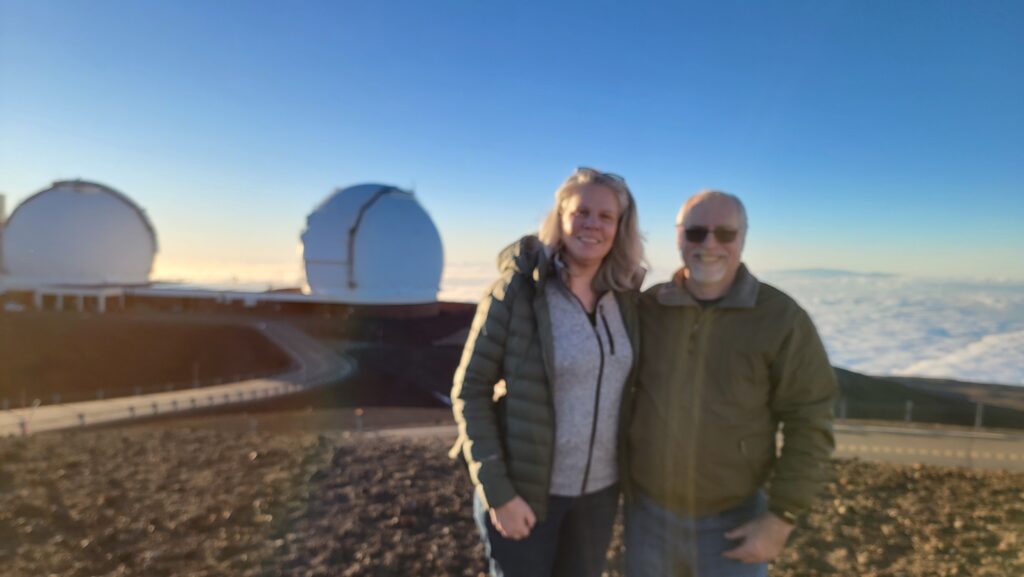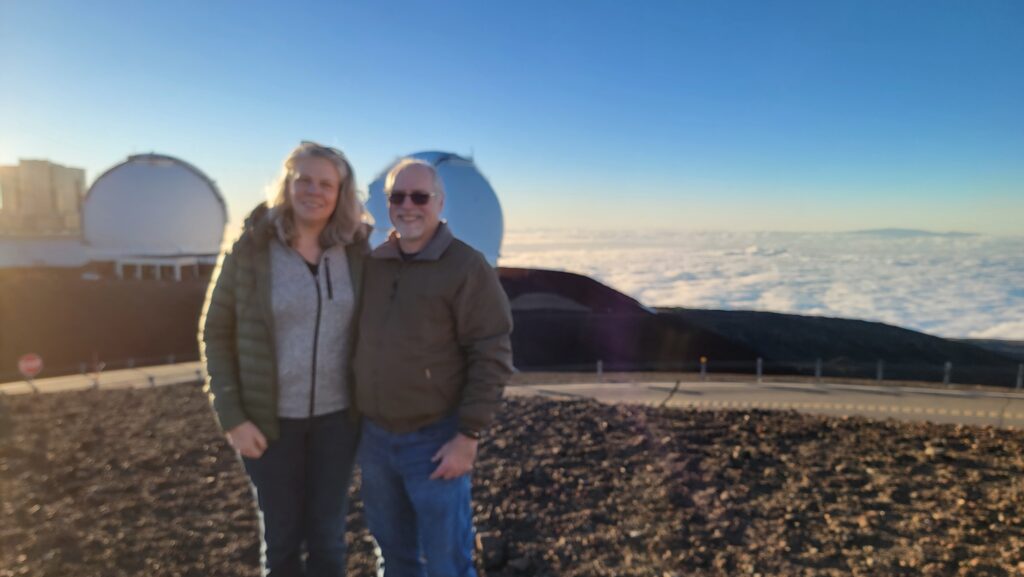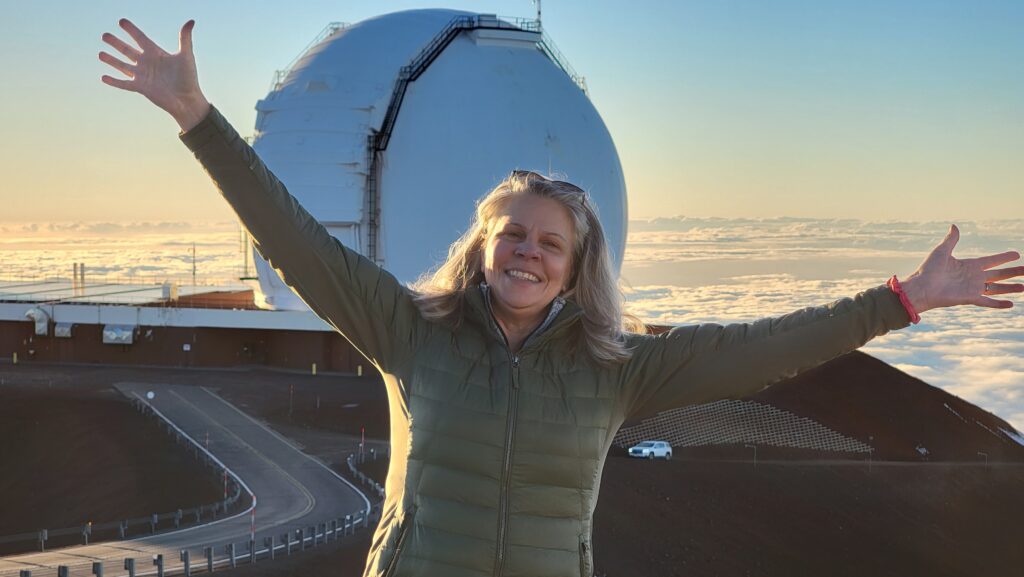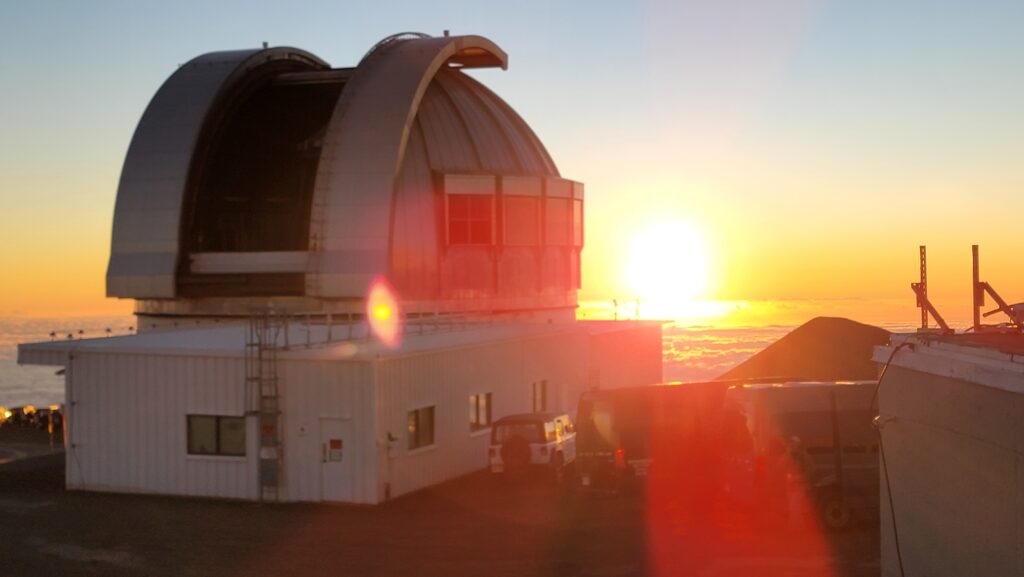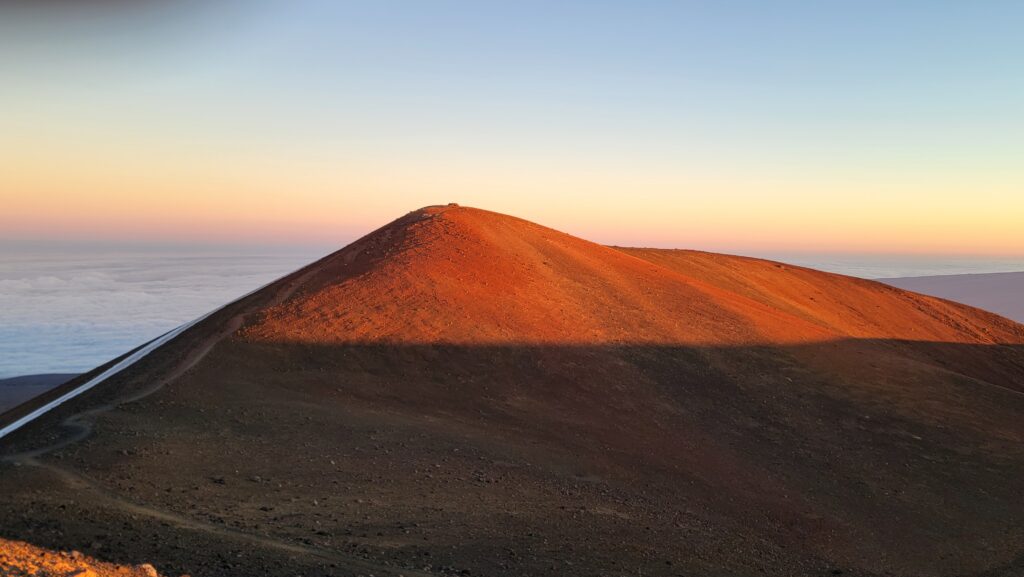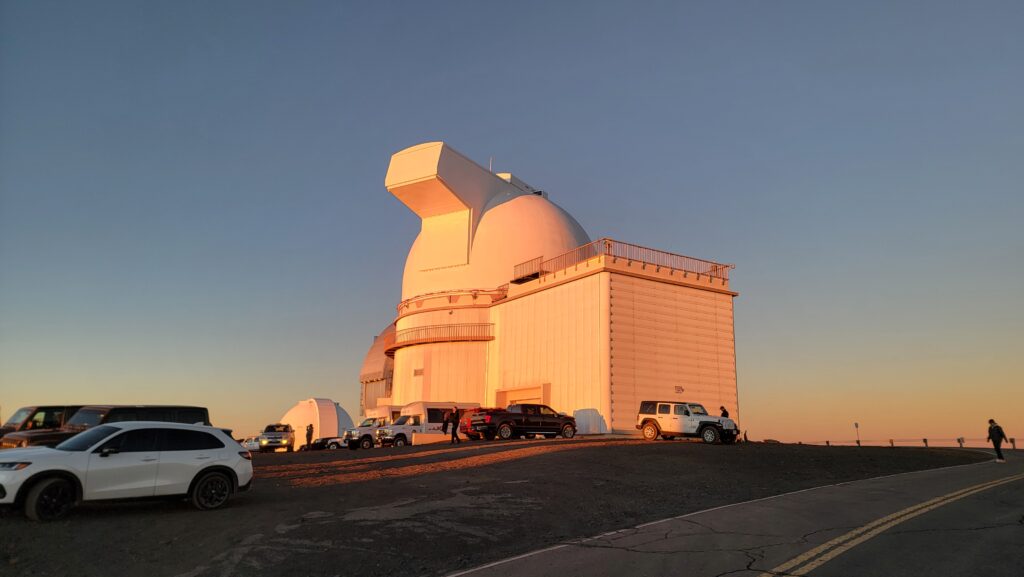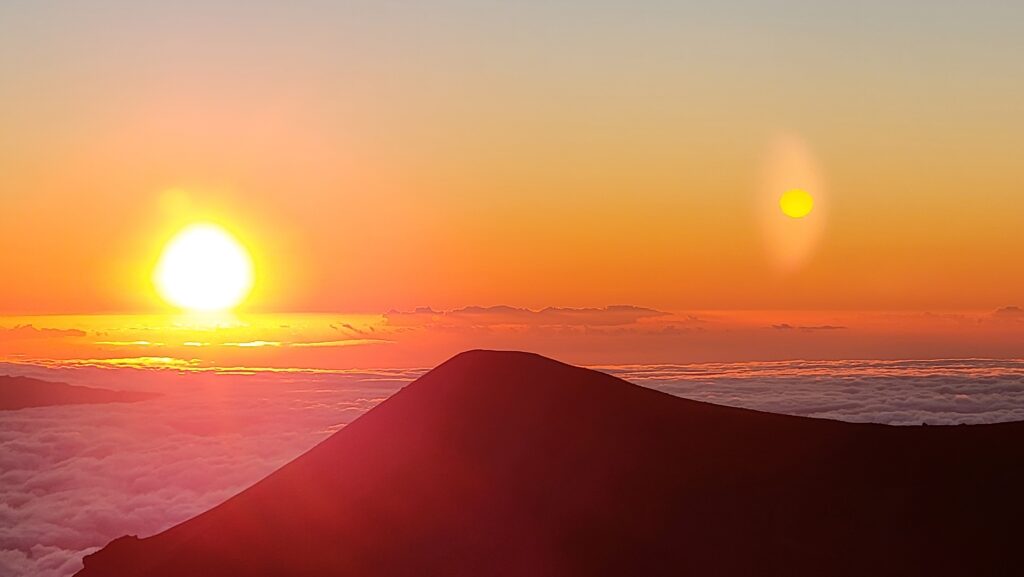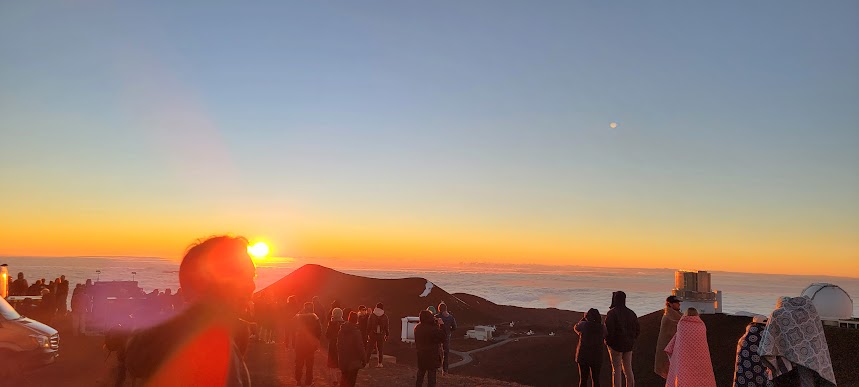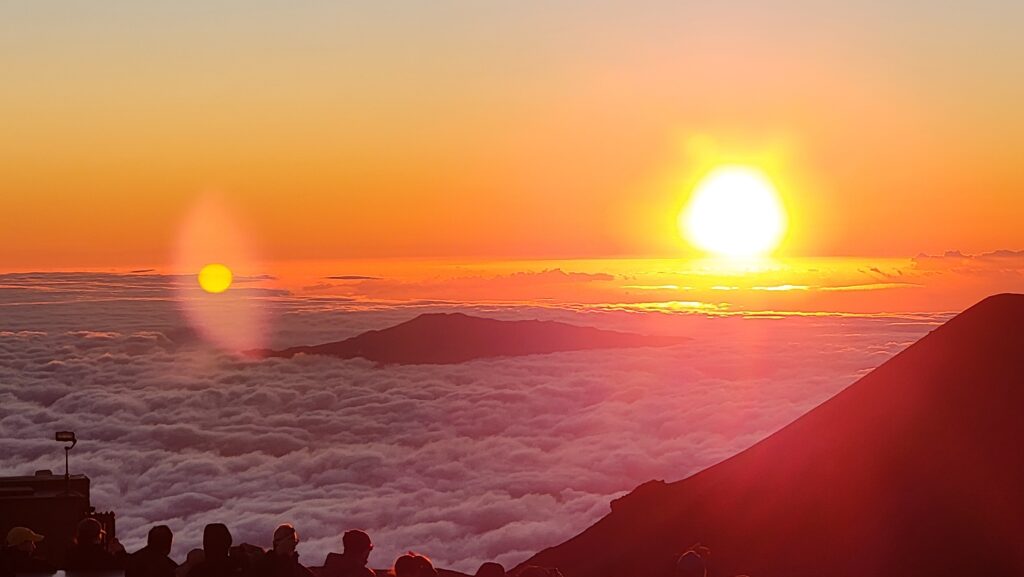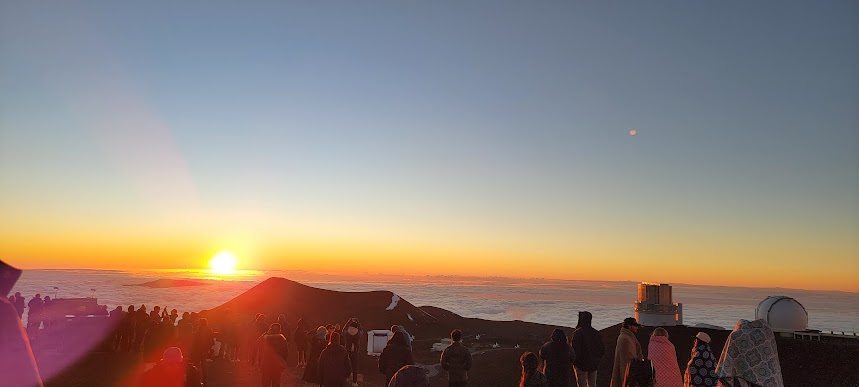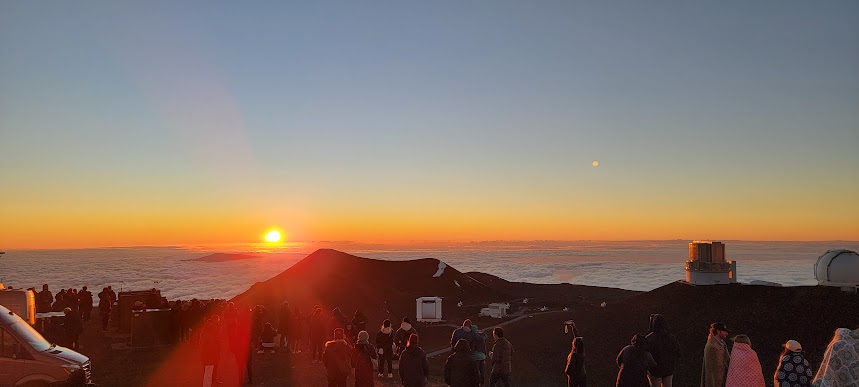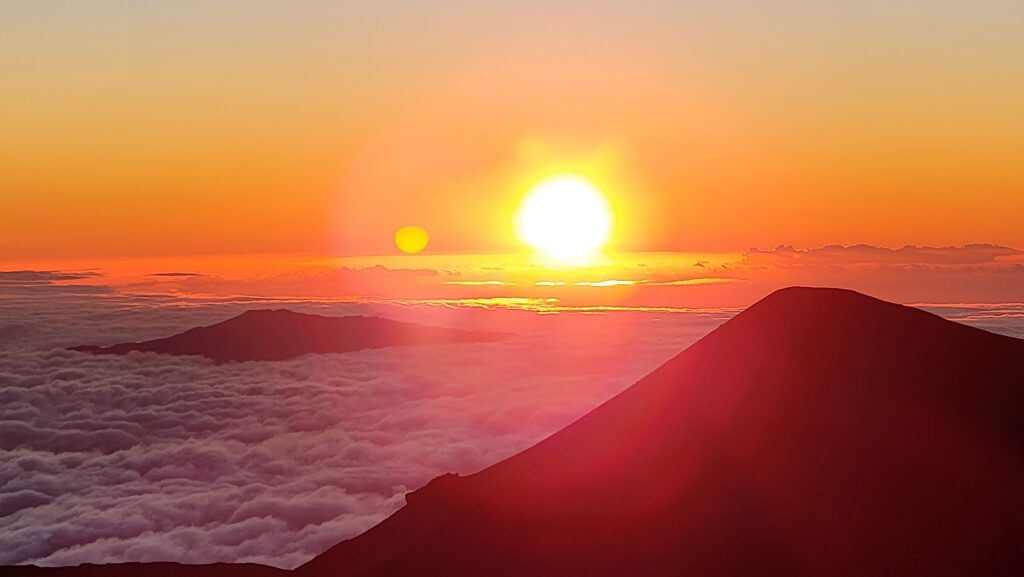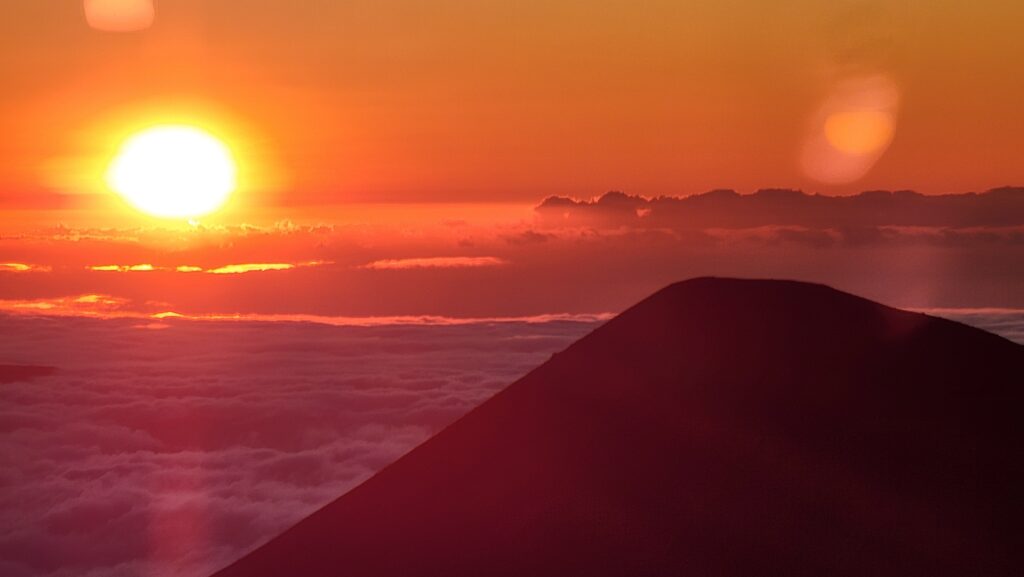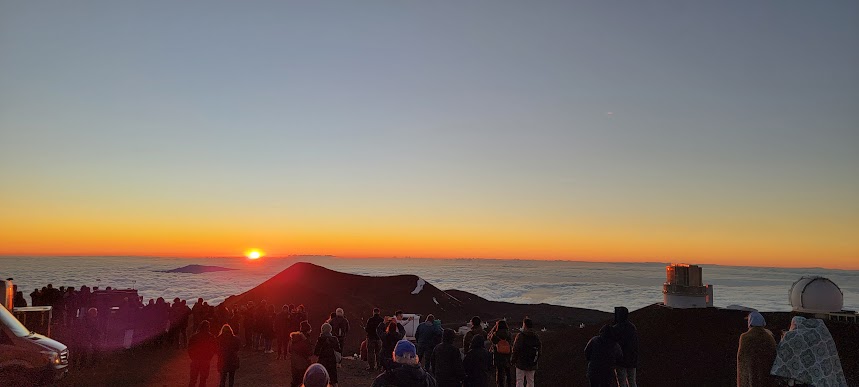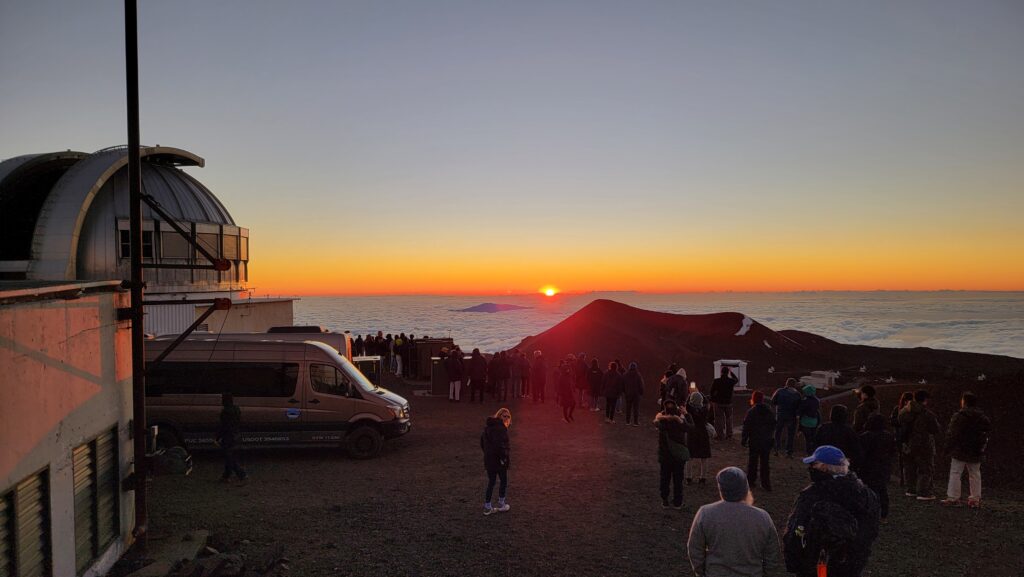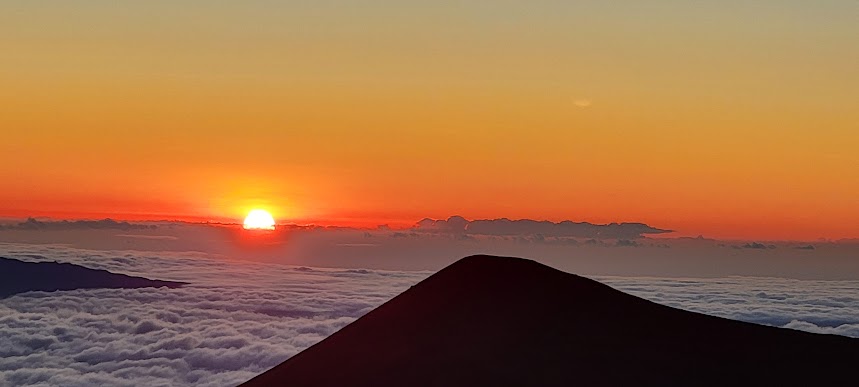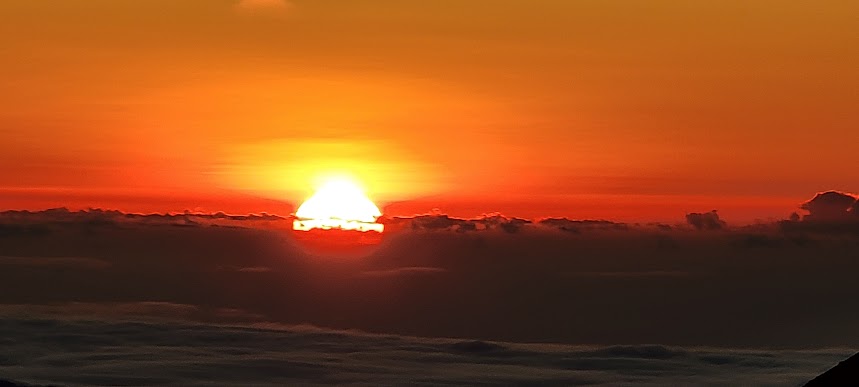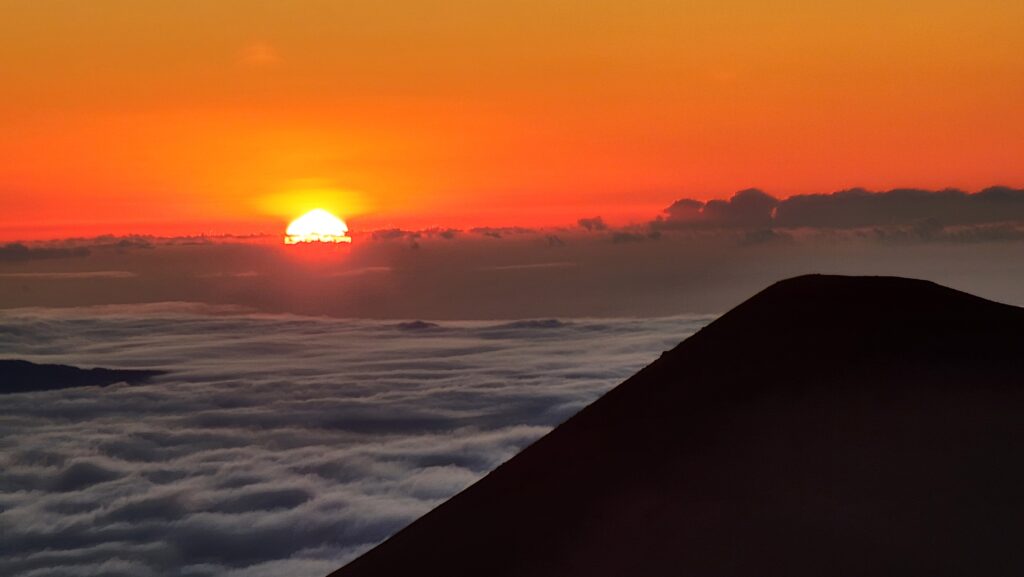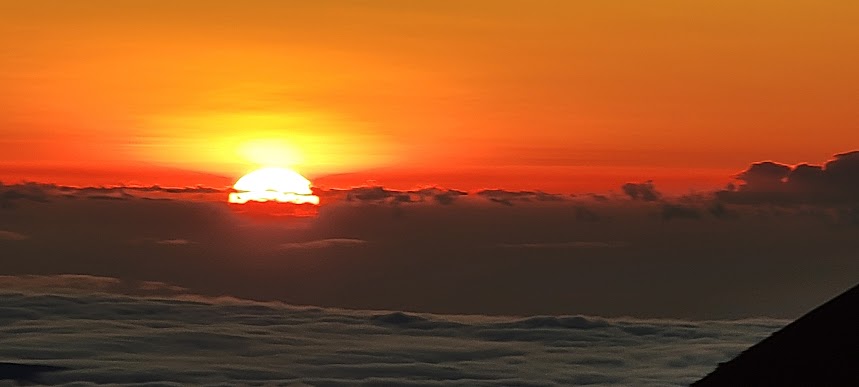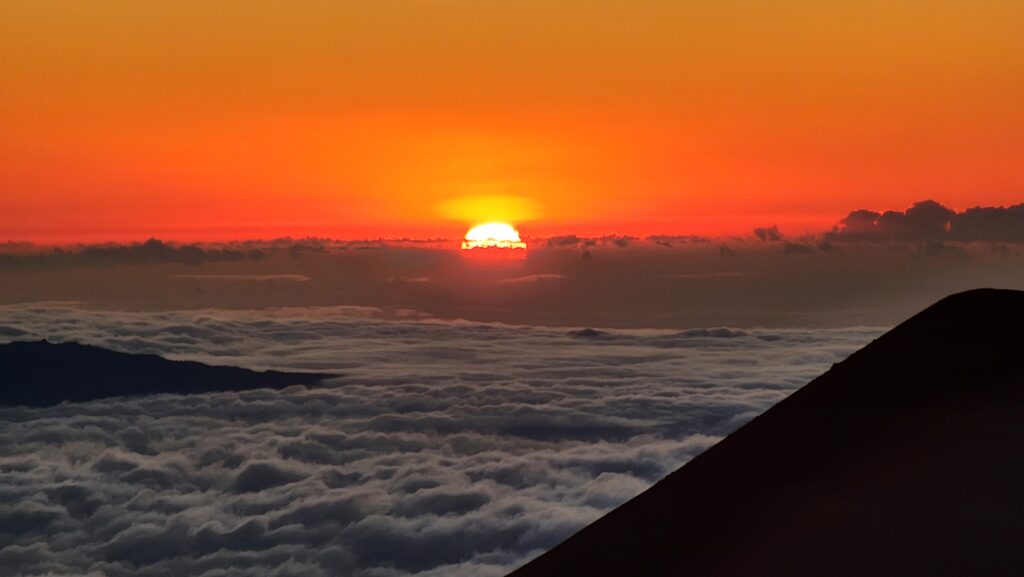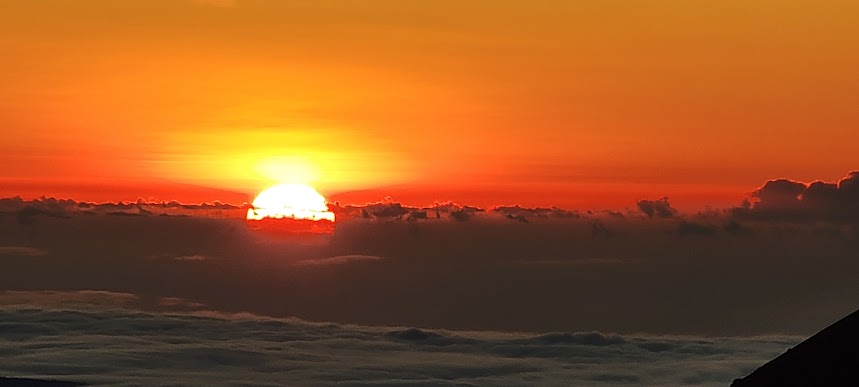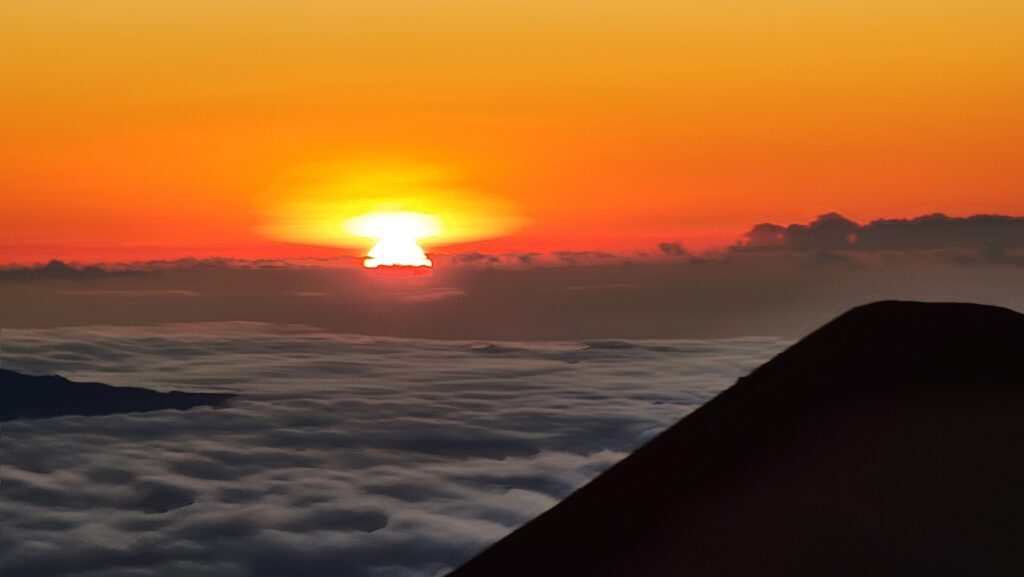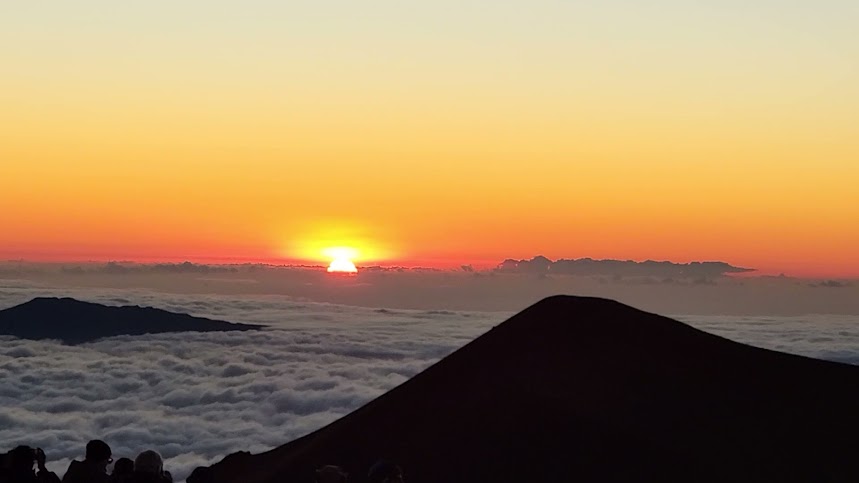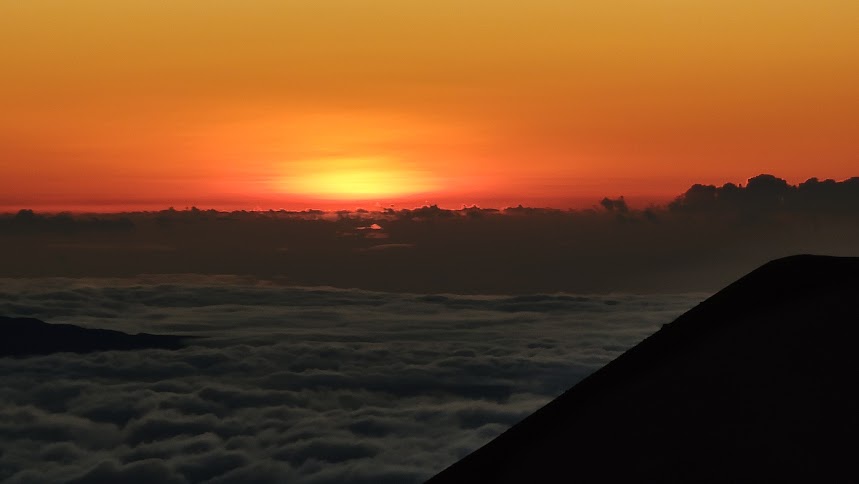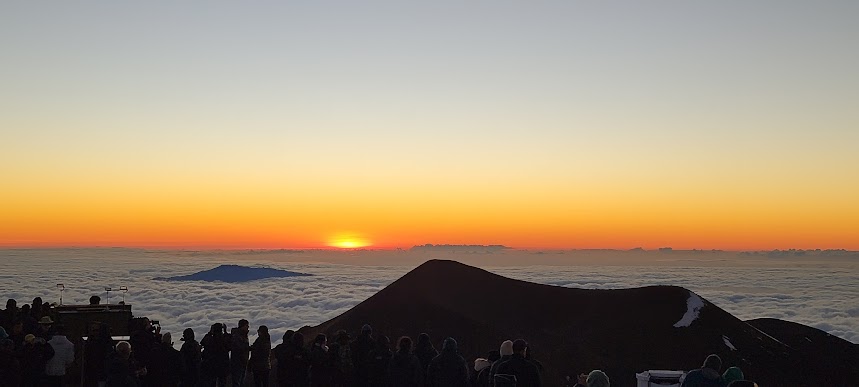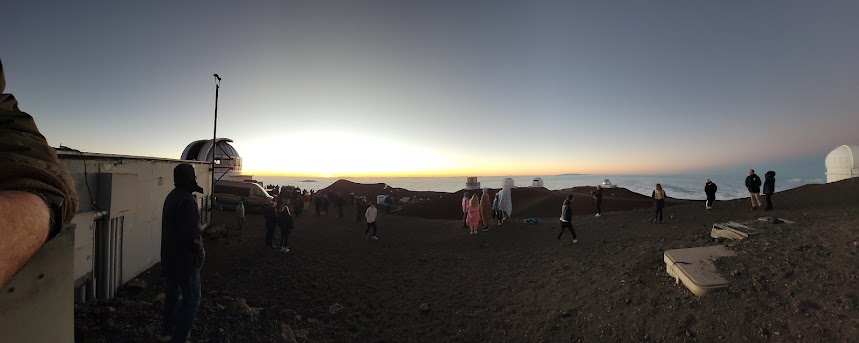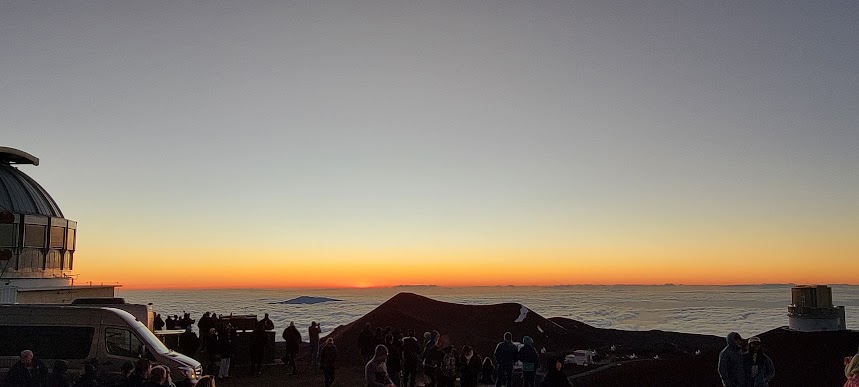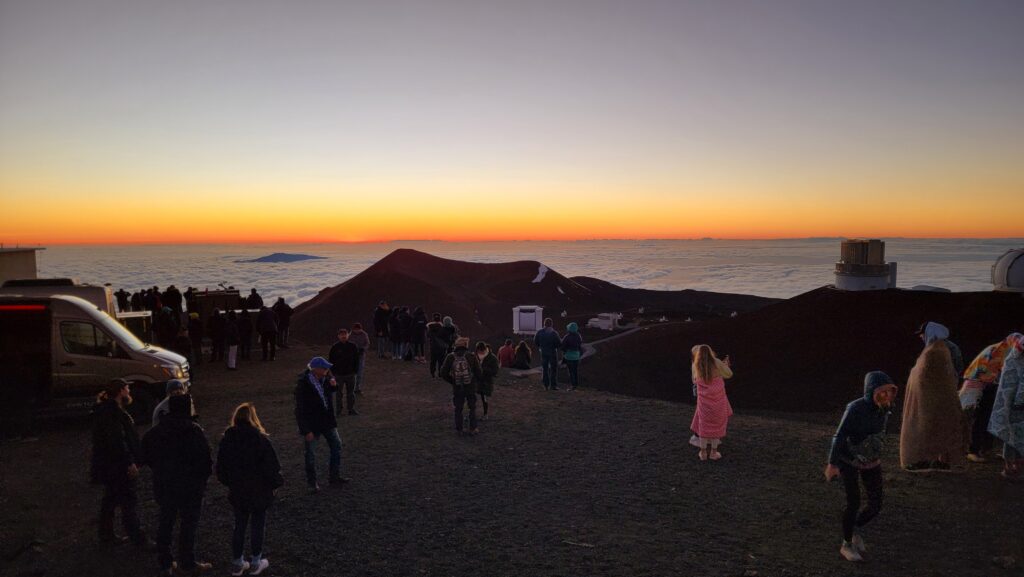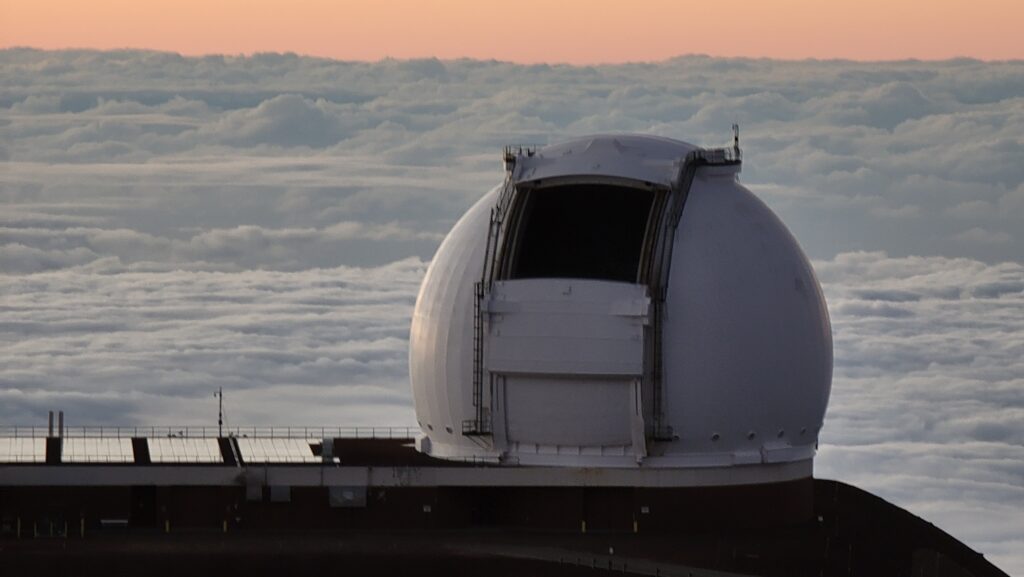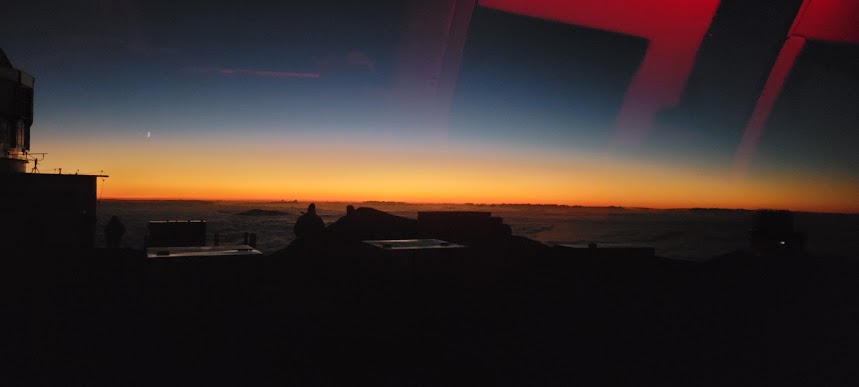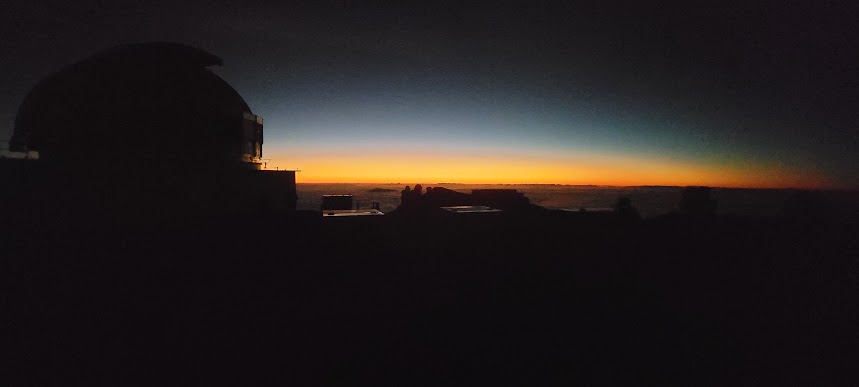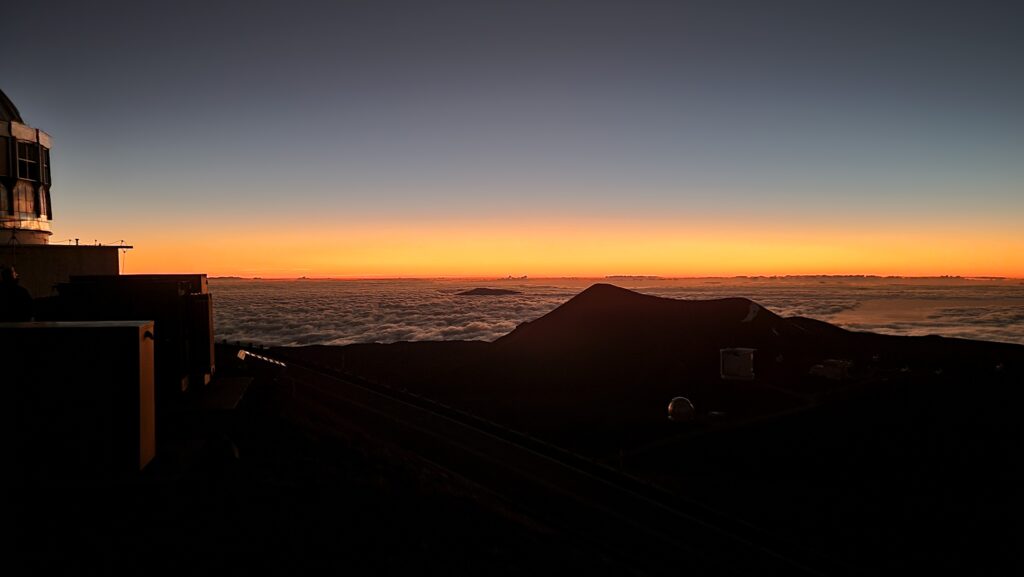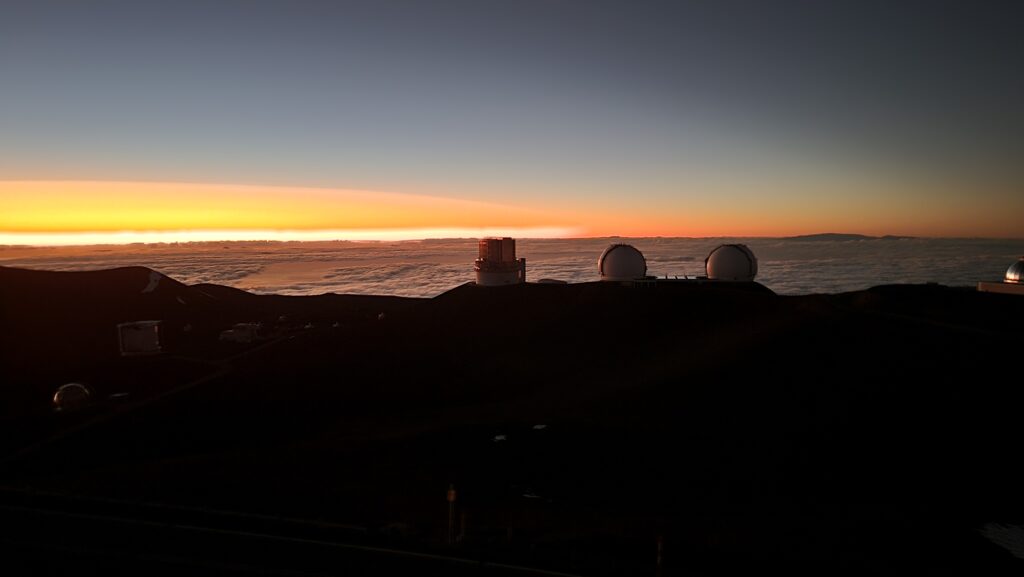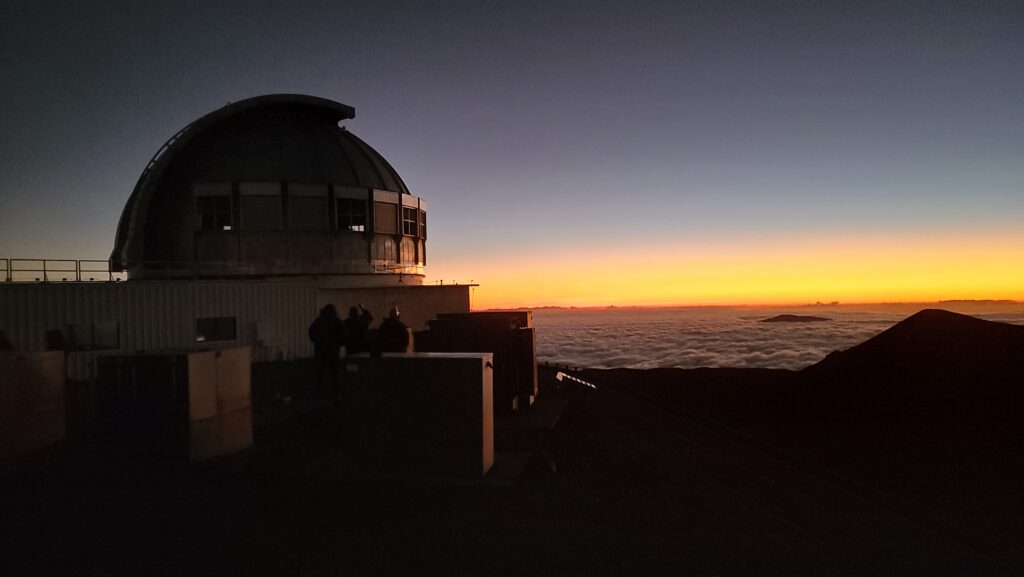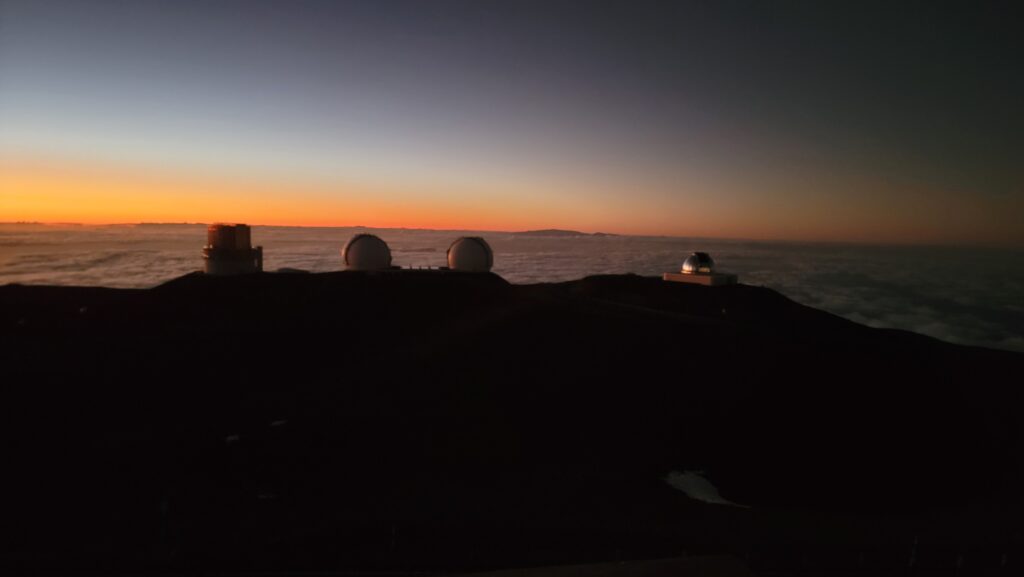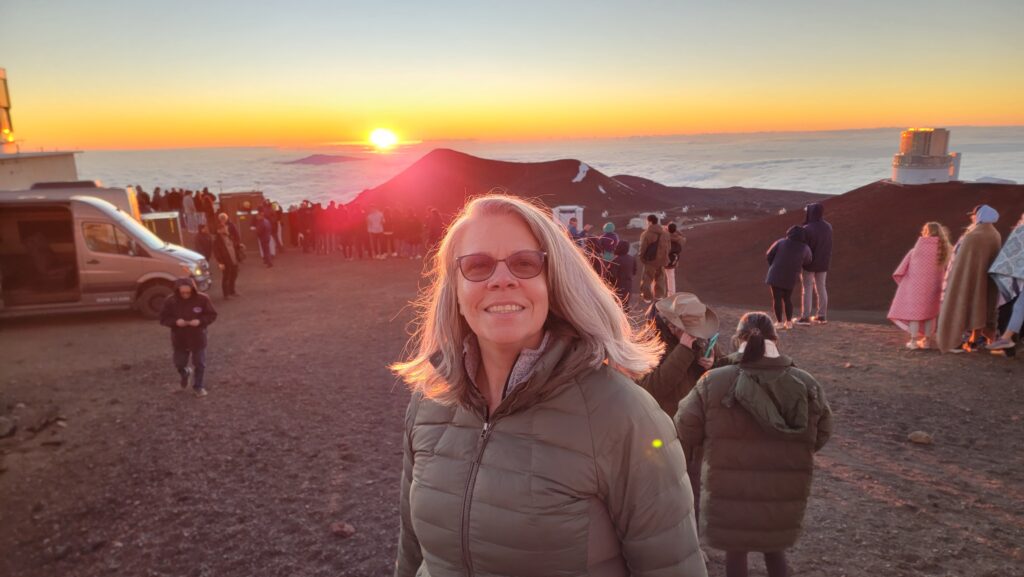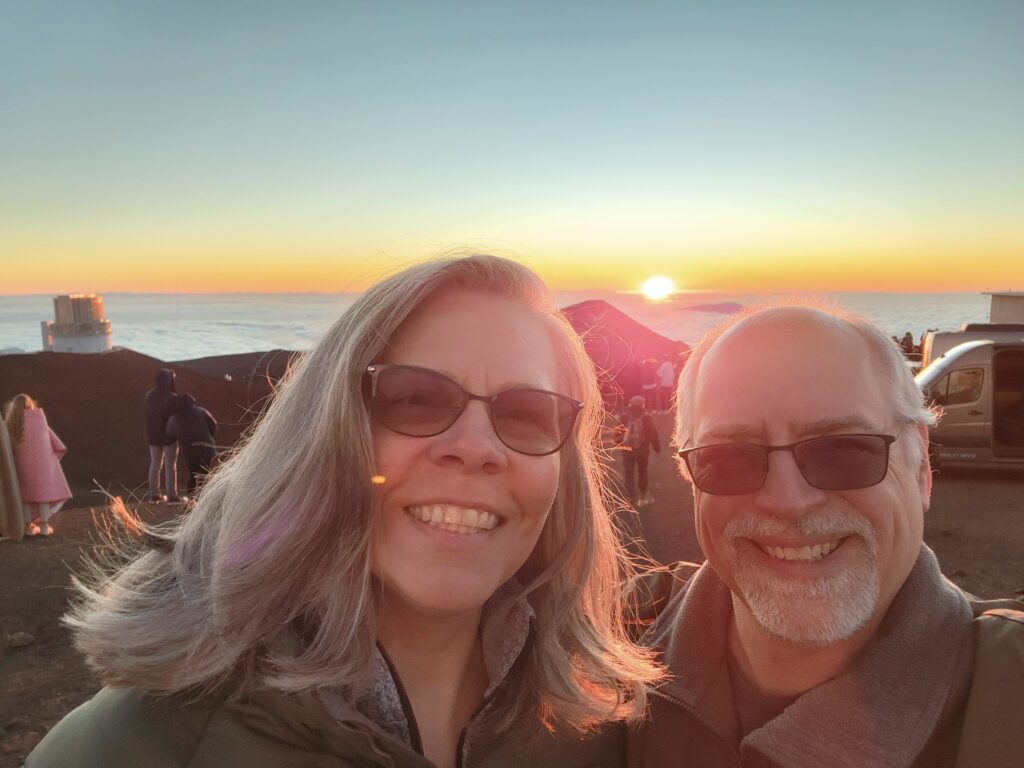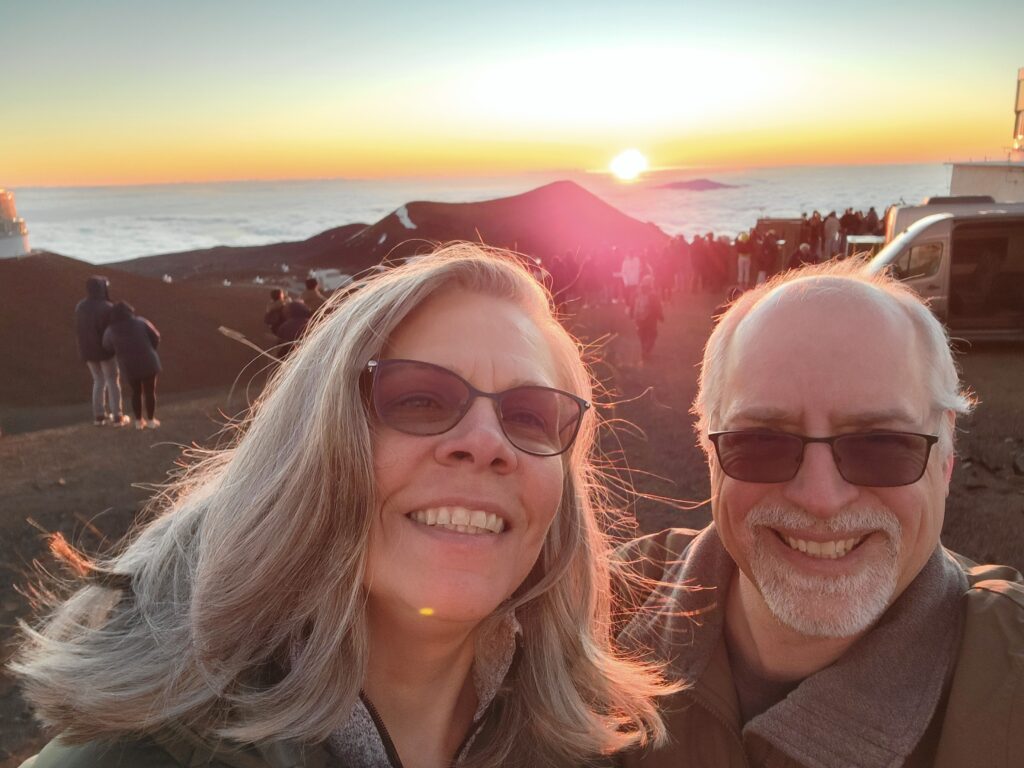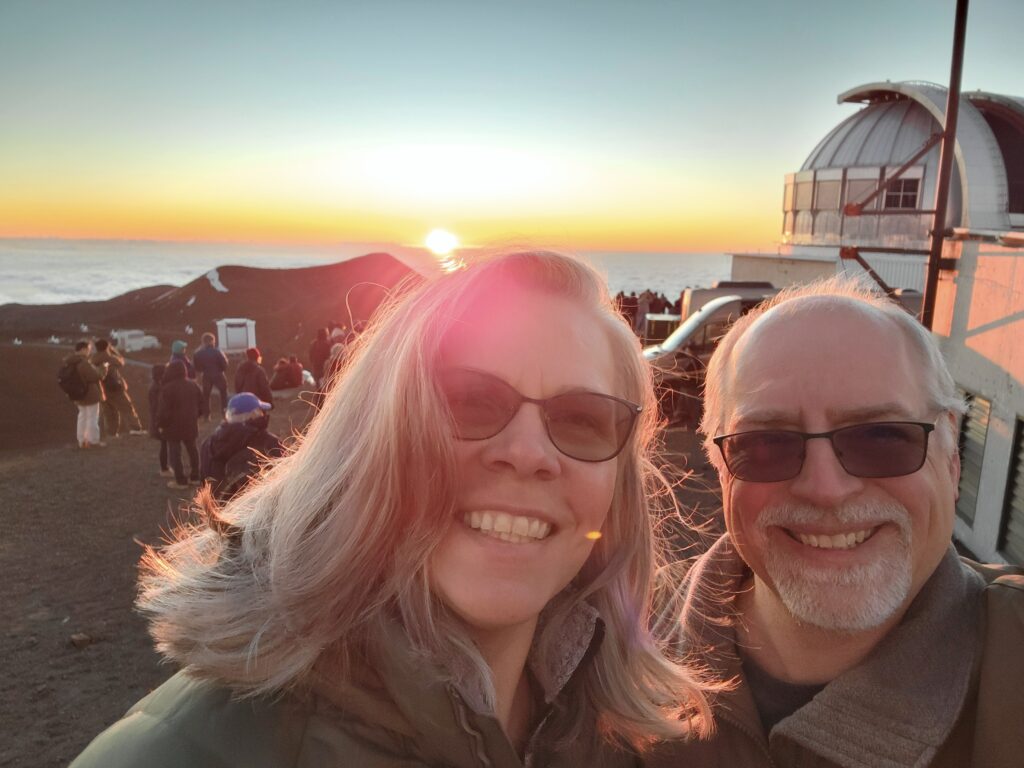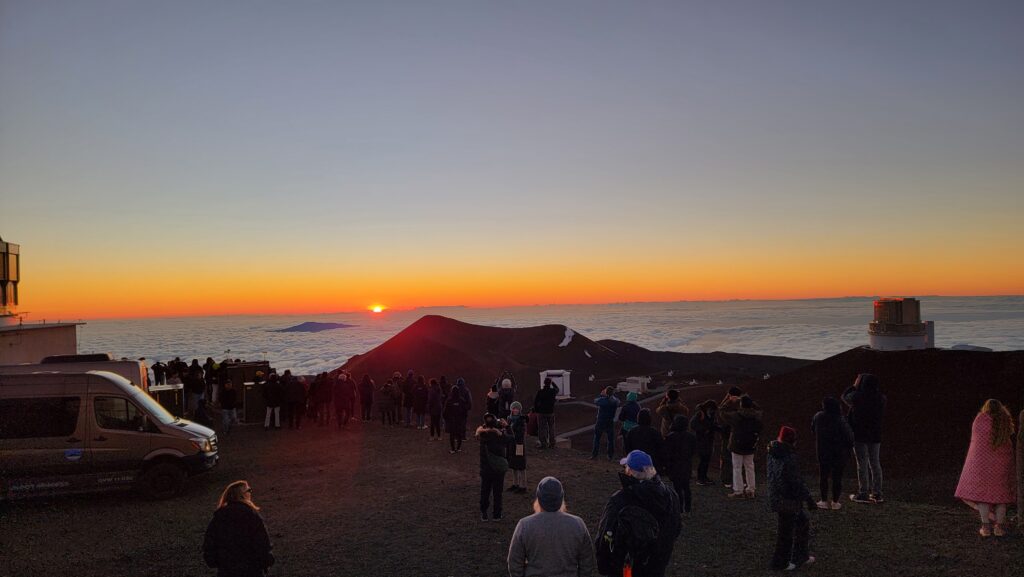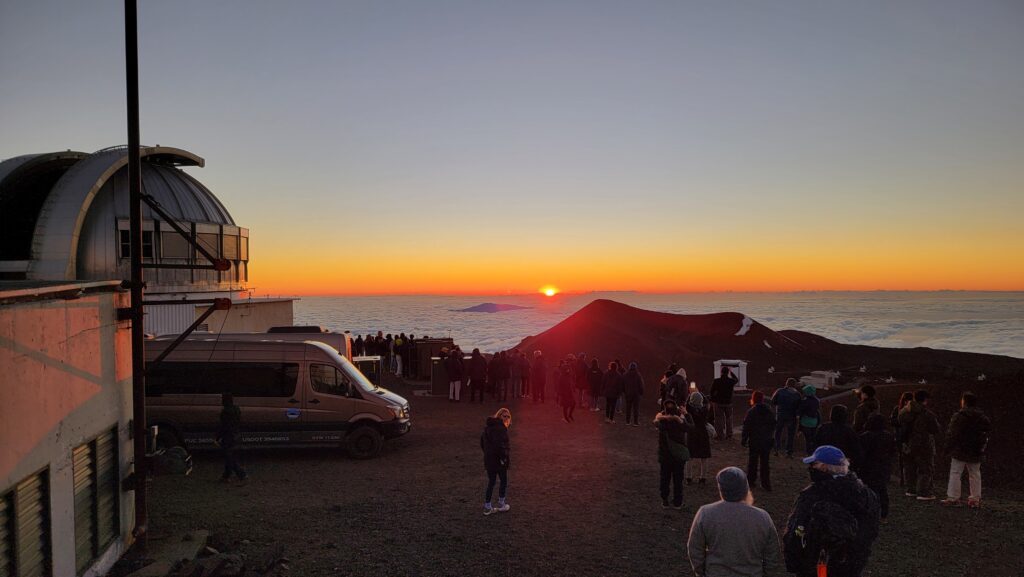The Big Island of Hawaii has a lot to see. Tons of things. But there are a few items that are definitive destinations one should see at least once. On Friday of the first week, we visited one of those sights: the Observatory at the top of Mauna Kea.
[< prev] [top] [next >]
[0] [1] [2] [3] [4] [5] [6] [7] [8] [9] [10] [11] [12] [13] [14]
Visting the observatory was the only planned event on Friday, February 9th. Mother Nature — or should I say, Mauna Loa had something else in mind. At first the condo vibrated a little — it felt like the people in the unit downstairs had slammed a door. Then it got stronger. It felt like a passing semi-truck had bounced across a curb. I looked up at Sara — since they live in L.A. now … “Earthquake?”. The vibration continued, then one big shift, followed by another half that size. Sara ran for a door frame. Becky and I kind of sat there “Oh…right. That’s what people do.” Then it was over. It took a while to find anything about it on the news … there apparently isn’t an earthquake channel. And the weather channel doesn’t consider earthquakes to be weather. We found news of it on mainland channels before we saw anything about it from an official Hawaiian source. Initial reports said it was a 6.3 magnitude. Later it was downgraded to a 5.7 occurring approximately 6 miles down, and surprisingly, from Mauna Loa, not Kilauea (the one at the volcano park). The words of our seatmate when we landed came back to me. The volcano was just reminding everyone she’s still there.

When the appointed hour arrived, we began our sunset adventure.
We met our guide for the bus tour at the Queen’s Shops, boarded his 4-wheel drive van, and proceeded to drive up through Wiakoloa Village toward Saddle Road. Since our last visit, Saddle Road has become a full-fledged highway crossing the valley between Mauna Loa and Mauna Kea. Mauna Kea is considered dormant. The other one is still active – as she reminded us that morning.
On the way, the clouds got closer and closer until we drove through them and broke out into the open sky above. After passing the military test range, we turned off the highway and continued climbing to the Mauna Kea Visitor Information Center at 6000 feet above sea level.
We spent almost an hour at the visitor center, enjoying a veggi-lasagna dinner, looking at some rare local plants, and acclimating to that elevation before continuting.
We began the 4-wheel drive trek on a twisted, rutted, dirt road up to the summit. The landscape was eerie. We drove past an area we were told was used by the astronauts testing the durability and maneuverability of their space suits before the first moon landing.
At last, we got to the collection of observatories. There are 13 telescopes atop the mountain. Some are self-contained, some are arrays that bring several structures together to form a virtual lens. Some are paired with similar telescopes around the globe.
The drive up was cool, but just looking through the windows of the bus felt a little like just watching something on TV. It was very different when we stepped outside…
Fun Fact: The Mauna Kea Observatory sits at 13,800 feet above sea level, which is by far the highest point in the Pacific Ocean. But by taking into account that Hawaii is an island that extends another 19,700 feet down to the ocean floor — technically, Mauna Kea is taller than Mount Everest, a fact which our tour guide was more than happy to share with us.
Looking down at the cloud banks below…
Clowning around on the mountaintop…
The sunset from this vantage point is spectacular.
Selfies at sunset…
Within 20 minutes of sunset, all visitors are shooed off the mountain so the scientists can begin their work. Back at the visitor center, our guide brought out an 8-inch telescope, set it up and we star-gazed for a couple of hours. (phone cameras were worthless for capturing this part of the evening.
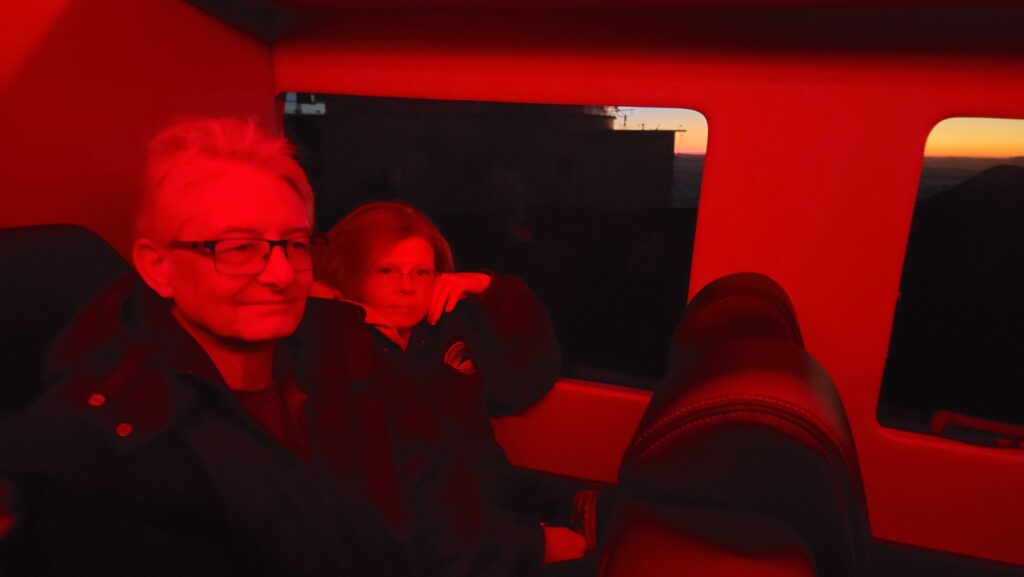
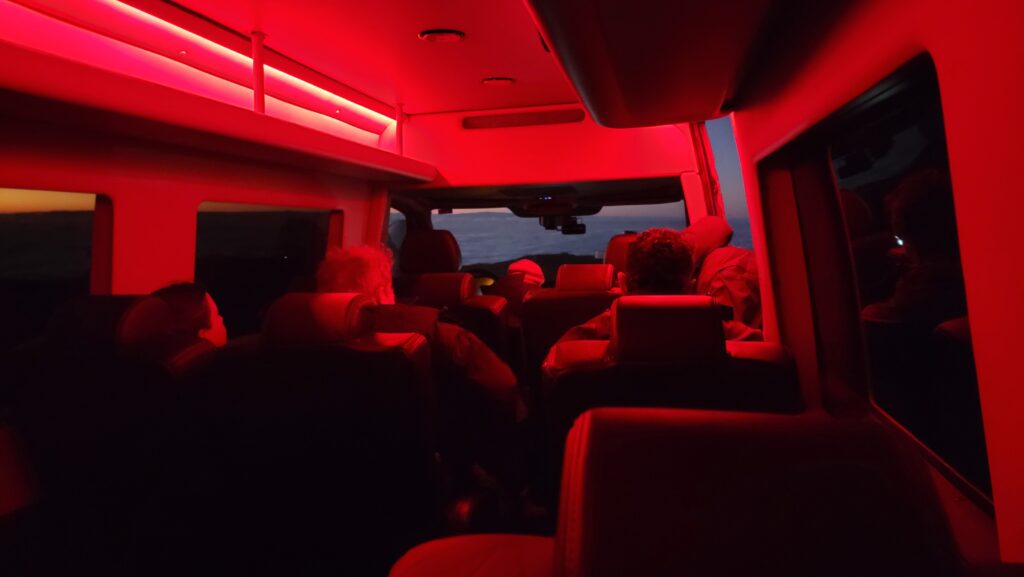

Overall, this was an amazing experience. Highly recommend.
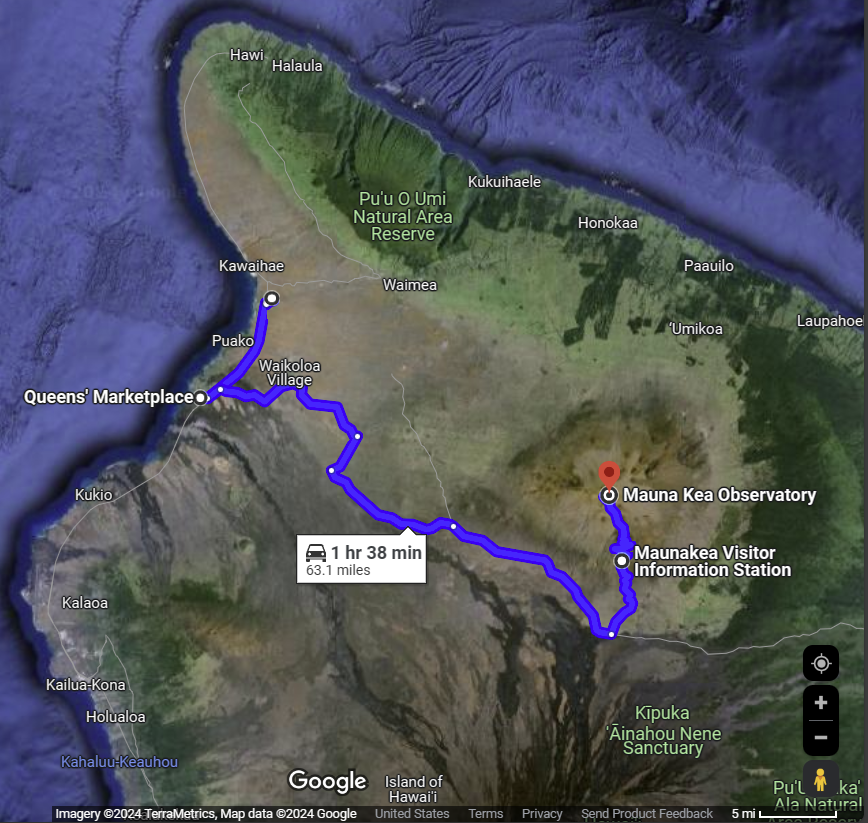
[< prev] [top] [next >]
[0] [1] [2] [3] [4] [5] [6] [7] [8] [9] [10] [11] [12] [13] [14]
